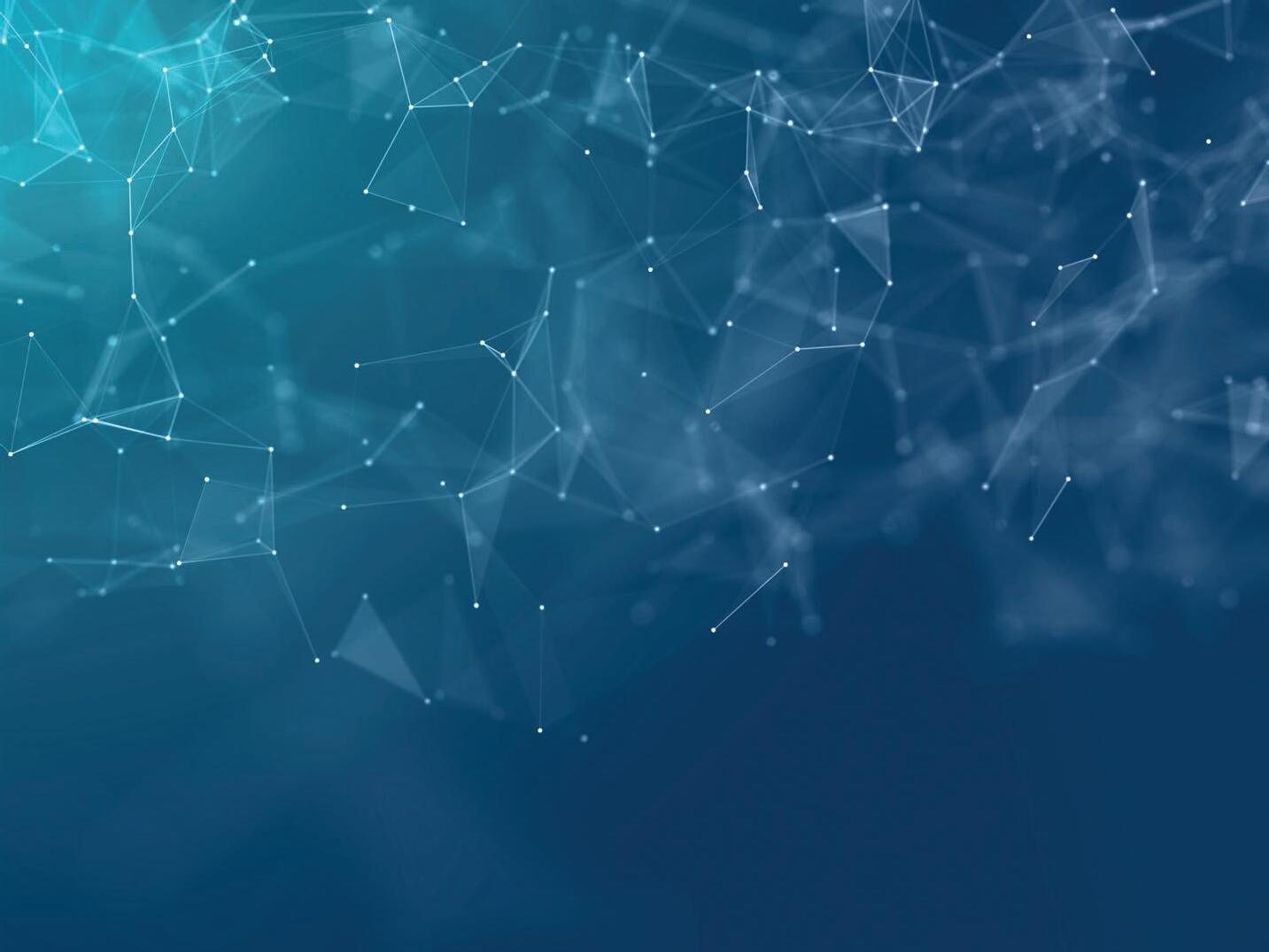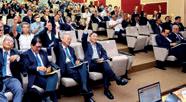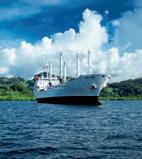









Circulation & Readership Profile
3,200/page
3,200/page
The publisher reserves the right to edit, revise or reject any advertisement deemed unsuitable or inappropriate. •
This one-time-only special rate o er is for new advertisers.
Space availability is subject to booking on a first-come-first-served basis.
Clients will provide ready-to-print artwork in PDF format with 300dpi.
Full page: 210mm x 297mm, 3mm extra bleed sizes for 4-sided.
Advertising space must be utilised before 31 December 2024.
*Please note that the above rate will be subjected to 8% SST. For overseas advertisers, an additional 25% will be charged.
Rate shown above excludes 15% advertising agency commission.
Payment term: Full advance payment.
Artwork submission deadline is on (or before) the 1st week of the prior month of publication.
After the material deadline, no cancellation or alteration to the advertisement will be entertained.
Any cancellation after signing the advertising order will result in a 50% penalty charge.
JURUTERA has an estimated readership of 200,000 professionals. Our esteemed readership consists of certified engineers, decision making corporate leaders, CEOs, government officials, project directors, entrepreneurs, project consultants, engineering consulting firms and companies involved with engineering products and services.
Publica�on month/s:
Company’s Stamp & Authorised Signature
Date


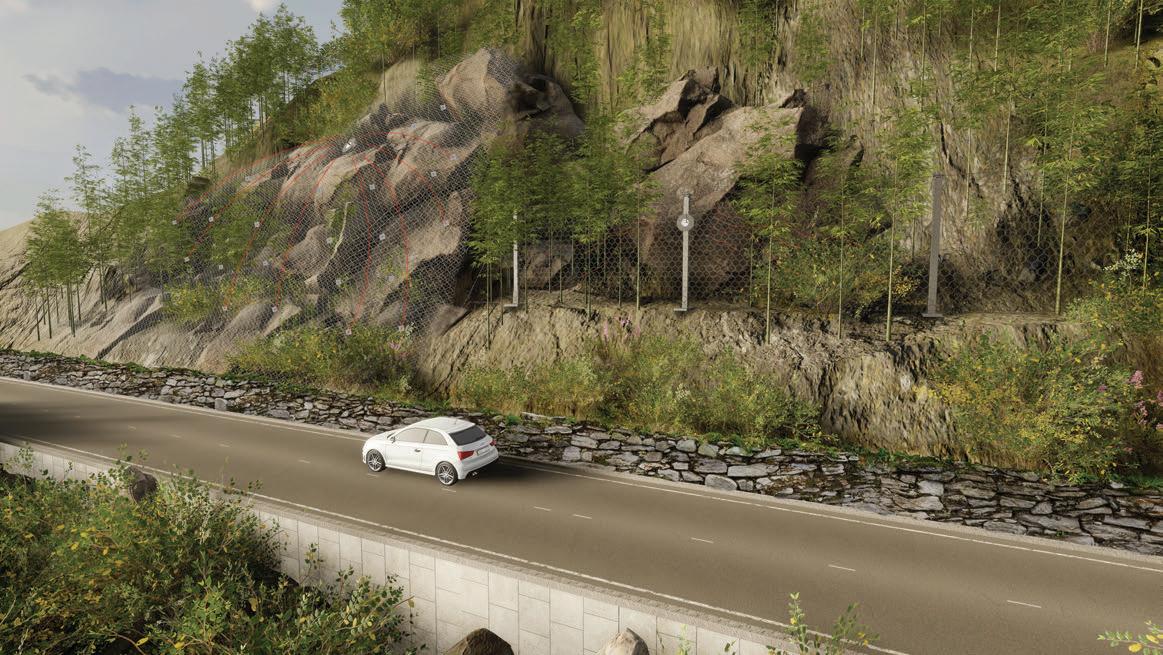























IEM COUNCIL SESSION 2024/2025
President
Ir. Prof. Dr Jeffrey Chiang Choong Luin
Deputy President
Ir. Yau Chau Fong
Vice Presidents
Ir. Dr Siti Hawa binti Hamzah, Ir. Fam Yew Hin, Ir. Chen Harn Shean, Ir. Ts. Prof. Dr David Chuah Joon Huang, Y.Bhg. Dato’ Ir. Wan Nazari bin Wan Jusoh, Ir. Dr Bernard Lim Kee Weng, YBhg. Dato’ Ir. Nor Hisham bin Mohd Ghazalli
Honorary Secretary
Ir. Ts. Prof. Dr Tan Chee Fai
Honorary Treasurer
Ir. Dr Siow Chun Lim
Immediate Past President
Dato’ Ir. Prof. Dr Norlida binti Buniyamin
Past Presidents
Y.Bhg. Academician Tan Sri Dato’ Ir. Prof. Dr Chuah Hean Teik, Y.Bhg. Dato’ Paduka Ir. (Dr) Hj. Keizrul bin Abdullah, Y.Bhg. Dato’ Ir. Lim Chow Hock, Ir. Dr Tan Yean Chin, Ir. Ong Ching Loon
Civil Representative
Ir. Tu Yong Eng
Mechanical Representative
Ir. Ng Yong Kong
Electrical Representative
Ir. Mohd. Aman bin Hj. Idris
Structural Representative
Ir. Dr Tan Kuang Leong
Chemical Representative
Ir. Kim Kek Seong
Representative to Other Disciplines
Ir. Assoc. Prof. Dr Wong Yew Hoong
ICT and Multimedia Representative
Ir. Assoc. Prof. Dr Lai Khin Wee
Women Engineers Representative
Ir. Ts. Assoc. Prof. Dr Syuhaida binti Ismail
Young Engineers Section Representatives
Mr. Muhammad Ashiq Marecan bin Hamid Marecan, Grad. IEM, Mr. Lim Yiren, Grad. IEM, Mr. Darshan
a/l Balasubramaniam, Grad. IEM, Mr. Chuah Pei Lim, Grad. IEM, Ms. Ong Ye Shian, Grad. IEM
Council Members
Ir. Rusnida binti Talib, Ir. Prof. Dr Lau Hieng Ho, Ir. Muhammad Azmi bin Ayub, Ir. Arul Hisham bin Abdul Rahim, Ir. Razmahwata bin Mohd Razalli, Ir. Simon Yeong Chin Chow, Ir. Dr Chan Seong Phun, Ir. Yam Teong Sian, Ir. Kwok Yew Hoe, Ir. Dr Lee Choo Yong, Ir. Sharifah Azlina binti Raja Kamal Pasmah, Ir. Ts. Dr Wan Syakirah binti Wan Abdullah, Ir. Dr Mui Kai Yin, Ir. Shamil bin Abu Hassan, Ir. Ts. Wan Rizaluddin Abdullah bin Wan Ali, Ir. Dr Lam Wei Haur, Ir. Dr Angelia Liew San Chuin, Ir. Prof. Dr Zuhaina binti Zakaria, Ir. Begum Irdawati binti Dowlad Rahuman, Ir. Chong Chee Yen, Ir. Khoo Chee Min, Ir. Abdul Razak bin Yakob, Ir. Dr Chan Swee Huat, Ir. Alex Looi Tink Huey, Ir. Sukhairul Nizam bin Abdul Razak, Y.Bhg. Dato’ Ir. Ting Chek Choon (casual vacancy for YBhg. Dato’ Ir. Nor Hisham bin Mohd Ghazalli)
Council Members by Invitation YBhg. Dato’ Ir. Ts. Abdul Razib bin Dawood, Ir. Gopal Narian Kutty, Ir. Oon Chee Kheng
Branch Chairman
1. Pulau Pinang: Ir. Chan Wah Cheong
2. Selatan: Ir. David Puen Ming Shen
3. Perak: Ir. Assoc. Prof. Dr Nursyarizal bin Mohd Nor 4. Pahang: Ir. Ab Rahman bin Hashim
5. Kedah-Perlis: Ir. Roshasmawi bin Abdul Wahab
6. Negeri Sembilan: Ir. Dr Oh Seong Por
7. Kelantan: Ir. Abrizan bin Abdul Kadir
8. Terengganu: Ir. Mazlan bin Che Ku Ahmad
9. Melaka: Ir. Lim Su Hian
10. Sarawak: Ir. Sim Hui Kheng, Stephanie
11. Sabah: Ir. Mohd Yaakob bin Jaafar
12. Miri: Ir. Meheron Selowara Joo
STANDING COMMITTEE ON INFORMATION AND PUBLICATIONS 2024/2025
Chairman: Ir. Fam Yew Hin
Vice Chairman: Ir. Alex Looi Tink Huey
Secretary: Ir. Ts. Assoc. Prof. Dr Hum Yan Chai
Chief Editor: Ir. Fam Yew Hin
Principal Bulletin Editor: Ir. Alex Looi Tink Huey
Principal Journal Editor: Ir. Ts. Prof. Dr Teo Fang Yenn
Chairman Webportal: Ir. Dr Hasril bin Hasini
Resource Centre Chairman: Ir. Razmahwata bin Mohd Razalli
Committee Members: Ir. Ong Guan Hock, Ir. Lee Chang Quan, Ir. Lau Tai Onn, Ir. Dr Oh Seong Por, Ir. Yee Thien Seng, Ir. Dr Lee Choo Yong, Ir. Ts. Dr Tan Kim Seah, Ir. Assoc. Prof. Dr Lee Tin Sin, Ir. Tu Yong Eng, Ir. Dr Bhuvendhraa Rudrusamy, Ir. Rusnida binti Talib, Ir. Dr Nor Ilia Anisa binti Aris, Ir. Ts. Wong Chee Fui, Ir. Dr Moey Lip Kean, Ir. Abdul Azim bin Abdul Rahman, Ir. Dr Aidil bin Chee Tahir, Ir. Kwok Yew Hoe, Ir. Begum Irdawati binti Dowlad Rahuman, Ir. Dr Sara Lee Kit Yee, Dr Sudharshan N. Raman, Grad. IEM, Ms. Michelle Lau Chui Chui, Grad. IEM, Ms. Loo Suk Sin, Grad. IEM, Mr. Muhd. Afiq Irfan bin Zaharudin, Grad. IEM
EDITORIAL BOARD 2024/2025
Chief Editor: Ir. Fam Yew Hin
Principal Bulletin Editor: Ir. Alex Looi Tink Huey
Committee Members: Ir. Lau Tai Onn, Ir. Ong Guan Hock, Ir. Yee Thien Seng, Ir. Dr Oh Seong Por, Ir. Ts. Prof. Dr Teo Fang Yenn, Dr Sudharshan N. Raman, Ir. Tu Yong Eng, Ir. Lee Chang Quan, Ir. Dr Lee Choo Yong, Ir. Ts. Dr Tan Kim Seah, Ms. Michelle Lau Chui Chui, Grad. IEM
Secretariat: Janet Lim, Nurul Aida binti Mustafa, Nur Illyarnie binti Rosman
THE INSTITUTION OF ENGINEERS, MALAYSIA
Bangunan Ingenieur, Lots 60 & 62, Jalan 52/4, P.O. Box 223, (Jalan Sultan), 46720 Petaling Jaya, Selangor Darul Ehsan. Tel: 603-7890 0130 Fax: 603-7957 7678
E-mail: sec@iem.org.my Homepage: http://www.myiem.org.my


















DIMENSION PUBLISHING SDN. BHD. [ 199701034233 (449732-T) ]
Level 18-01, PJX-HM Shah Tower, No. 16A, Persiaran Barat, 46050 Petaling Jaya, Selangor Darul Ehsan, Malaysia. Tel: +(603) 7493 1049 Fax: +(603) 7493 1047
E-mail: info@dimensionpublishing.com Website: www.dimensionpublishing.com
CHAIRMAN
ROBERT MEBRUER
CEO/PUBLISHER
SHIRLEY THAM ● shirley@dimensionpublishing.com
HEAD OF MARKETING & BUSINESS DEVELOPMENT
JOSEPH HOW ● joseph@dimensionpublishing.com
PRODUCTION EDITOR
TAN BEE HONG ● bee@dimensionpublishing.com
CONTRIBUTING WRITERS
PUTRI ZANINA ● putri@dimensionpublishing.com
HANNA SHEIKH MOKHTAR ● hanna@dimensionpublishing.com
SENIOR GRAPHIC DESIGNER
SOFIA HANIS ● sofia@dimensionpublishing.com
GRAPHIC DESIGNER
NICOLE THENG ● nicole@dimensionpublishing.com
ADVERTISING CONSULTANTS
THAM CHOON KIT ● ckit@dimensionpublishing.com
ACCOUNTS CUM ADMIN EXECUTIVE
YEN YIN ● yenyin@dimensionpublishing.com
For advertisement placements and subscriptions, please contact:
DIMENSION PUBLISHING SDN. BHD. [ 199701034233 (449732-T) ]
Level 18-01, PJX-HM Shah Tower, No.16A, Persiaran Barat, 46050 Petaling Jaya, Selangor Darul Ehsan, Malaysia.
Tel: +(603) 7493 1049 Fax: +(603) 7493 1047
E-mail: info@dimensionpublishing.com
Subscription Department E-mail: info@dimensionpublishing.com
JURUTERA is published and printed monthly by Dimension Publishing Sdn. Bhd.
JURUTERA MONTHLY CIRCULATION: OVER 50,000 MEMBERS
Submission or placement of articles in JURUTERA could be made to the:Chief Editor THE INSTITUTION OF ENGINEERS, MALAYSIA (IEM) Bangunan Ingenieur, Lots 60 & 62, Jalan 52/4, P.O. Box 223 (Jalan Sultan), 46720 Petaling Jaya, Selangor. Tel: +(603) 7890 0130 Fax: +(603) 7957 7678
E-mail: pub@iem.org.my or sec@iem.org.my IEM Website: http://www.myiem.org.my
© 2024, The Institution of Engineers, Malaysia (IEM) and Dimension Publishing Sdn. Bhd.
PUBLICATION DISCLAIMER
The publication has been compiled by both IEM and Dimension with great care and they disclaim any duty to investigate any products, process, services, designs and the like which may be described in this publication. The appearance of any information in this publication does not necessarily constitute endorsement by IEM and Dimension. There is no guarantee that the information in this publication is free from errors. IEM and Dimension do not necessarily agree with the statement or the opinion expresssed in this publication.
COPYRIGHT
JURUTERA Bulletin of IEM is the official magazine of The Institution of Engineers, Malaysia (IEM) and is published by Dimension Publishing Sdn. Bhd. The Institution and the Publisher retain the copyright over all materials published in the magazine.
by Ir. Kwok Yew Hoe Chairman, Electrical Engineering Technical Division

We are now living in a period when traditional sources of energy have already started to transition to alternative and cleaner sources of energy. The crucial question is how we can do so while maintaining safety, security of energy supply and ensuring the affordability of the new energy for all.
In Malaysia, we are blessed with plenty of natural resources. We have year-round sunlight for solar power, rivers for hydropower as well as an abundance of waste from the palm oil processing industry and municipal solid wastes to generate sustainable power. In the Energy Transition Index 2023 of the World Economic Forum, Malaysia was ranked top in South-East Asia and 35th in the world; we must continue to focus on being a leader in this area.
Transitioning to alternative sources of energy can be a challenge as well as an opportunity. The inherent risks in developing and putting into practical application new technologies and solutions are high, so a longterm view is needed. Change creates opportunity and now is the moment for engineers to lead the energy transition plan as we are trained to understand and use technology to create solutions, in this case to clean the environment for the future of our next generations.
by Ir. Alex Looi Tink Huey Principal Bulletin Editor

As we step into October 2024, we spotlight a crucial theme: Alternative Energy: Powering a Safer Future. With the world increasingly focused on sustainable solutions, Malaysia finds itself at the forefront of an energy revolution.
Our sub-theme, Biofuel, Hydrogen & Nuclear Energy Revolution, delves into the transformative forces reshaping Malaysia’s energy landscape. These emerging alternatives hold immense promise in driving Malaysia’s green agenda while fortifying energy security.
At IEM JURUTERA, change isn’t just about energy — it’s about how we share knowledge too. This month, we’re excited to unveil a revamped magazine experience! With interactive elements, fresh creative content and an innovative design overhaul, we aim to engage you like never before. Digitalisation is another leap forward for us, making it easier for engineers to access insights on the go and we’re thrilled to embark on this new chapter.
In tandem with these exciting developments, let us also reflect on how engineers are empowering the nation’s future and charge ahead!
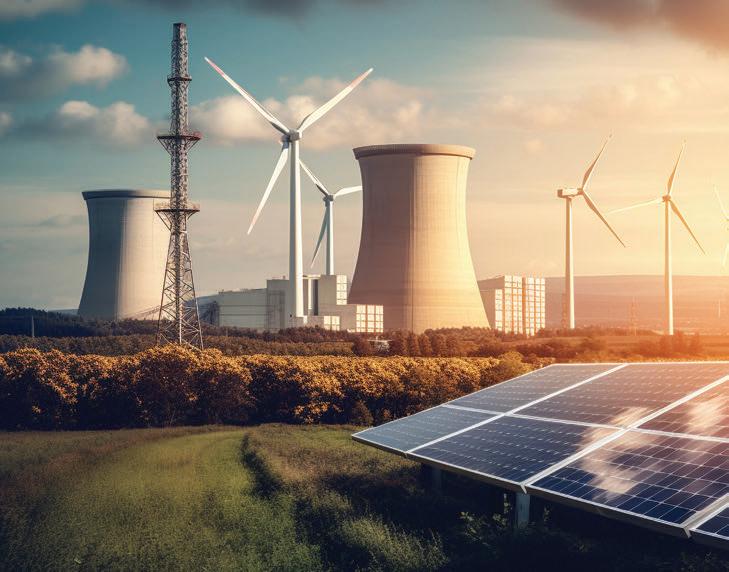

YBhg. Dato’ Hamzah Hussin, the Chief Executive Officer of SEDA Malaysia, shares information, views and concerns about the country’s initiatives in advancing and promoting the use of alternative energy to help power the nation safely and sufficiently into the future.

Greenhouse gas emissions from the burning of fossil fuels such as oil and coal and their continued adverse impact on the environment are worldwide concerns. Malaysia is increasing its focus on developing, adopting and promoting alternative energy sources as part and parcel of the country’s sustainable energy industry. These efforts have resulted in Malaysia being globally recognised as the best country in SouthEast Asia in the Energy Transition Index 2023 by the World Economic Forum.
Alternative energy refers to energy from natural and renewable sources or otherwise termed as renewable energy (RE), including solar and wind. Other sources of RE are geothermal, hydropower, tidal power and bioenergy, which are alternatives to conventional energy sources which involve the burning of non-renewable fossil fuels. RE can replenish itself naturally, hence its label as green energy or clean energy with infinite power source.

https://bit.ly/3BvZTaY
Video introduction of YBhg. Dato' Hamzah Hussin (SEDA CEO) to IEM members
RE came into the spotlight with the worsening global climate crisis which saw increased efforts to push climate mitigation initiatives and to stress on the importance of a just energy transition from reliance on fossil fuels to RE. Malaysia is committed to the global effort to tackle climate change and has pledged to reduce GHG emissions to achieve Net Zero as early as 2050 despite contributing only 0.8% to global GHG.
Championing Malaysia’s sustainable energy industry is the Sustainable Energy Development Authority (SEDA) Malaysia, a statutory body formed under the Sustainable Energy Development Authority Act 2011 [Act 726]. Its key role is to administer and manage the implementation of the feed-in tariff mechanism which is mandated under the Renewable Energy Act 2011 [Act 725]. SEDA’s mission is to lead the development of Sustainable Energy in alignment with overarching national policies to contribute to a sustainable future.
The Chief Executive Officer of SEDA Malaysia, YBhg. Dato’ Hamzah Hussin, talks about the current status of alternative energy sources in Malaysia and the initiatives the government has taken to promote their adoption.
Starting with the 5th Fuel Policy that recognises RE as the alternative energy source for Malaysia, the Government has introduced several programmes to develop and promote the industry further. These include programmes such as Feed-in Tariff (FiT), Net Energy Metering (NEM), Self-Consumption (SELCO), Large-Scale Solar (LSS) and New Enhanced Dispatch Arrangement (NEDA). SEDA’s main contributions are through NEM and FiT programmes, which SEDA has been mandated to administer and implement as stated under the Sustainable Energy Development Authority 2011 [Act 726],” says Dato’ Hamzah.
FiT is a mechanism under the RE Policy & Action Plan to catalyse the generation of RE through the utilisation of solar, biomass, biogas and small hydro resources. It allows the production of electricity from these RE resources to be sold to power utilities at a fixed premium price for a specific duration.
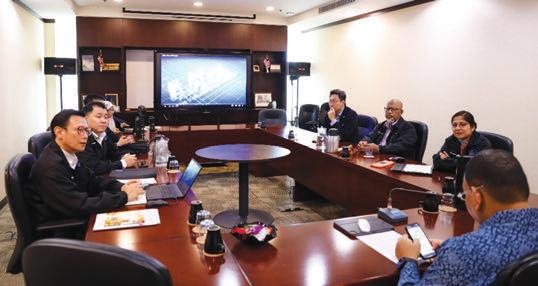
Since 2016, SEDA has also been implementing and offering solar programmes to companies through the NEM programme which involves energy production from solar PV installations. The energy produced from these installations is consumed first by the companies and excess energy is sold back to the national grid via utility Tenaga Nasional Berhad (TNB) at the prevailing displaced cost (the average cost of generating and supplying one kilowatt hour of electricity from resources other than RE resources, i.e. fossil fuels, through the supply line up to the point of interconnection with the RE installation). Selling the excess energy back to TNB is a financial incentive for companies to invest in RE systems, such as solar panels.
“As of 2023, Malaysia has achieved 10.5 GW, or 26% of its RE installed capacity. This progress aligns with our national goal of reaching a 31% RE mix by 2025,” says Dato’ Hamzah. RE is currently contributing 23% to Malaysia’s energy mix, dominated by hydropower generation.
The Government’s goal of achieving 31% RE installed capacity by 2025 and 40% by 2035 is stated in the Malaysia Renewable Energy Roadmap (MyRER), which was launched in 2021. Moving forward, it is targeted to achieve 70% by 2050 as stated in NETR.
“These targets are made based on the modelling of the generation mix that we have ran and the government has laid out plans to ensure that Malaysia reaches the net zero target, with NETR being the key policy document to enact the action plan to meet the zero-carbon target,” says Dato’ Hamzah. “While the action plan to achieve netzero emission by 2050 is seemingly ambitious and though progress has been gradual, Malaysia is on track to meet the target through the introduction of various RE or energy efficiency (EE) schemes. Although the electricity industry in Malaysia is highly regulated, it does not hinder any opportunity to improve the system for the sustainability of power supply.”
On Malaysia’s plans to balance its traditional energy sources with the integration of alternative energy sources into the nation’s energy mix, Dato’ Hamzah says this is being done through strategic planning and co-ordination by the Planning & Implementation Committee for Electricity Supply & Tariff (Jawatankuasa Perancangan & Pelaksanaan Pembekalan Elektrik & Tarif or JPPPET).
“Chaired by the Minister of Energy Transition and Water Transformation (PETRA), the committee includes representatives from relevant ministries, agencies and utilities. The Peninsular Malaysia Generation Development Plan, approved by JPPPET in October 2020, outlines the projection of demand and generation capacity, monitors transmission project progress and supports government policies to achieve 31% RE capacity by 2025,” he says, adding that this balanced approach ensures that while traditional energy sources continue to meet current demands, RE sources are progressively integrated into the energy mix, contributing to a more sustainable energy future for Malaysia.
Balancing the energy mix is not without challenges. Malaysia has a large share of natural gas and coal in its energy mix and this fact is key to implementing initiatives for enhancing RE and reducing GHG emissions as reflected in its National Energy Policy (2022-2040) which seeks to increase the share of RE to 31% of the power generation mix by next year. Malaysia, with large natural gas reserves, is a major exporter of the resource in the ASEAN region, making it an important contributor to its economy.
Dato’ Hamzah says there are several key challenges which have hindered the widespread adoption of alternative energy sources. “These centre primarily on the energy trilemma – reliability, ensuring energy security and environmental sustainability. These factors play a key role in a just transition to clean energy and making sure there’s a consistent and sustainable supply for all. Balancing these three aspects is crucial for a successful energy transition,” he says.
Besides the energy trilemma, other key challenges involve financing and investment, grid connectivity particularly at rural areas and infrastructure as well as technological innovation.
Dato’ Hamzah acknowledges that the energy trilemma balance poses a significant challenge. He says ensuring energy security while promoting RE sources requires substantial investment in infrastructure and technology.

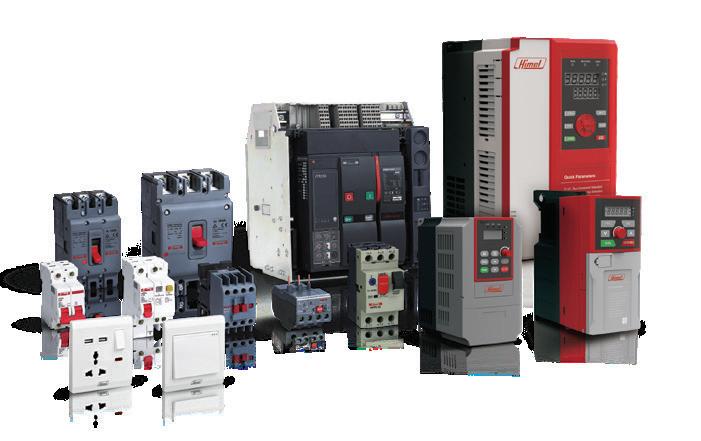

Additionally, maintaining affordable energy prices to avoid social inequity is vital.
“RE is not cheap. It is premium green energy that contributes towards having quality of life in a sustainable environment. But public awareness of its benefits is still not strong, and there is misconception in segments of the general public that generating renewable energy is cheap. On the other hand, if it’s too expensive to consume or use, the public will hesitate to go green. For example, the demand for rooftop solar panels have increased as the people want to invest in solar as a good alternative to electricity coupled with cost savings compared to purchasing from the grid,” says Dato’ Hamzah.
On the issue of Financing & Investment, he says securing financing for RE projects remains a challenge. “Projects often face issues related to high upfront costs and long-term financial sustainability. Strategies to overcome this include innovative financing mechanisms and public-private partnerships to attract investment,” he says.
The Grid Connectivity & Infrastructure challenge involves integrating RE sources, especially in remote areas. “This requires a robust grid infrastructure. Improving grid connectivity and investing in smart grid technologies are essential strategies to ensure reliable energy distribution to all, not only to urban and semi-urban areas but also to rural areas, all with different community segments. This is also a huge challenge,” says Dato’ Hamzah.
As for Technological Innovation, advancements in technology are also necessary to overcome limitations in RE resources. “For instance, the potential for wind energy is small due to low wind speeds in Malaysia, but new technologies (as observed implemented in places like Abu Dhabi) can enhance this potential,” he says. Various strategies to overcome challenges are spelled out in the following:
• National Energy Transition Roadmap (NETR): The NETR outlines strategic initiatives to increase RE capacity and to ensure a balanced Energy
Trilemma. It emphasises the importance of energy security, affordability and sustainability.
• Renewable Energy Roadmap (MyRER): The MyRER focuses on comprehensive planning and implementation of strategies to expand RE adoption. It highlights the need for innovation, technological advancements and robust policy frameworks.
• Just Transition Framework: Named the Ekonomi MADANI framework, this emphasises a just transition by empowering society, ensuring that no one is left behind in the shift towards sustainable energy. This includes job creation in the RE sector and reskilling programmes for affected workers.
• Collaborative Efforts: Collaboration with international bodies and learning from global best practices such as those observed at the 2023 UN Climate Change Conference or Conference of the Parties (COP) of the United Nations Framework Convention on Climate Change (UNFCCC). Through COP28,

held in 2023 in Dubai, United Arab Emirates, Malaysia can explore the adoption of new technologies and strategies to overcome existing challenges.
By addressing these challenges with targeted strategies, Dato’ Hamzah says Malaysia can create a resilient and sustainable energy future that benefits all sectors of society.
Dato’ Hamzah says innovation and research play a critical role in advancing alternative energy technologies. “New methods for harnessing RE that were previously unavailable, had been introduced, for example, addressing Malaysia’s low potential for wind energy due to wind speeds of less than 5 m/s. However, on a recent visit to Abu Dhabi, we were introduced to the availability of new technology for lowspeed wind farms which Malaysia can now explore,” he says.
Innovation and research serve as the backbone of RE advancement, enabling the adoption of cutting-edge technologies and optimising resource utilisation. By continuously investing in these areas, Malaysia can overcome existing limitations and drive forward its RE agenda, fostering sustainable development and energy security.
In envisioning the future of alternative energy in Malaysia and its potential economic and environmental benefits, Dato’ Hamzah explains that, as stated in NETR, the transition to sustainable energy is not only about increasing RE capacity but also ensuring a responsible and just transition. This involves creating economic opportunities through substantial investments and job creation in the RE sector.
“This will particularly benefit communities and workers affected by the shift away from fossil fuels. Environmentally, the move will significantly reduce carbon emissions, helping to combat climate change and promoting sustainable development,” he says.
He adds that the successful implementation of NETR will increase our GDP value from RM25 billion in 2023 to the targeted figure of RM220 billion as well as generate an estimated 310,000 jobs by 2050.
IRENA, or International Renewable Energy Agency, is an inter-governmental organisation that supports countries in their transition to a sustainable energy future. Based in Abu Dhabi, it is the principal platform for international cooperation, a centre of excellence and a repository of policy, technology, resource and financial knowledge on RE. IRENA promotes the widespread adoption and sustainable use of all forms of RE in the pursuit of sustainable development, energy access, energy security and lowcarbon economic growth and prosperity.
ACE, or ASEAN Centre for Energy, is also an inter-governmental organisation within the ASEAN structure representing the interests of the 10 ASEAN Member States in the energy sector. Hosted by the Ministry of Energy & Mineral Resources of Indonesia, its office is located in Jakarta.
Dato’ Hamzah says that having regional and international collaborations will allow Malaysia to learn and adopt best practices in the development of alternative energy sources as observed in other countries, particularly within South-East Asia.
As part of efforts to advance the development of alternative energy in Malaysia, Dato’ Hamzah says the Ministry of Energy Transition and Water Transformation (PETRA) recently introduced Energy Exchange Malaysia (ENEGEM) which allowed cross-border green electricity sales to Singapore and Thailand. Dato’ Hamzah says collaborations with international bodies such as IRENA and ACE will help keep Malaysia up to date and on track in further developing alternative energy for the country.
In 2023, Malaysia was placed first among South-East Asian countries in the World Economic Forum’s Energy Transition Index. “This recognition is a significant milestone in our journey towards sustainable energy. This prestigious index considers both system performance and readiness to adopt environmentally friendly energy sources, highlighting our country’s successful management of an accelerated, safe and affordable energy transition,” he says, adding that this success can also be attributed to Malaysia’s strategic advantages, such as a prime geographic location, diverse RE sources and a highly skilled workforce.
“All ASEAN countries have their own unique geography which gives them advantages over different RE resources. We are focusing to leverage on the high potential RE in Malaysia and to open more quota to develop the industry further,” he says.
Dato’ Hamzah also discusses the most promising alternative energy technologies and how these align with Malaysia’s long-term energy goals and sustainability targets.
“Malaysia is acting decisively and quickly to attract investments in many growth areas – Data Centre and Electronics as well as promoting the ASEAN power grid, hence the need for more power. Solar is one of the most promising alternative resources, with relevant technologies already developed for this sector,” he says.
Citing figures from MyRER, he says Malaysia has a 269 GW potential for solar PV, dominated by ground-mounted configurations (210 GW), including considerable potential from rooftop (42 GW) and floating configurations (17 GW). Malaysia’s geographical location offers reasonably strong solar irradiance in the range of 1,500-1,850 kWh/m2 throughout the year.
In contrast to the relatively convenient harnessing of solar power, other sources like biomass,
biogas and hydropower present more challenges. For biomass, the main concerns revolve around ensuring a reliable supply of feedstock, which has hindered the development of bigger capacity biomass power plants.
For the biogas segment, where developers harness biogas from the anaerobic digestion of Palm Oil Mill Effluent (POME) and landfill wastes to fuel biogas electricity generators, the challenges centre on the supply of foreign labour during the pandemic, which has resulted in low palm oil production and biogas production.
Small hydropower plants have the significant potential to provide consistent RE as long as river flows are maintained. However, location wise, there are some issues to be addressed such as land acquisition as well as possible encroachment into forest reserves and concessionaire’s logging areas. These will affect the project timeline for small hydropower projects.
Though the target set is high, it can spur the industry to harness the full potential of alternative energy as a clean, safe and viable form of energy resource in view of depleting fossil fuels. Alternative energy can evolve into a much more competitive product as technology advances, making it not only more accessible and affordable for the masses but also as a safer alternative to power the nation in the future.
“Malaysia is doing its best to grab all the opportunities. The future of renewable energy in Malaysia looks bright. With strong government support, Malaysia is on the right track in harnessing alternative energy for the future,” says Dato’ Hamzah.
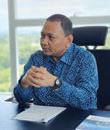
Chief Executive Officer of SEDA Malaysia since February 2021. Previously, he was the Senior Private Secretary to Ministers and Deputy Ministers in various ministries. He had also served as the District Officer of Kerian and Bagan Datuk, Perak. His vast experiences in top-level management, administration, strategic planning and government policies are of great relevance to Malaysia’s sustainable energy agenda. He obtained his Bachelor of Economics (Analytical Economics) from University of Malaya in 1999.


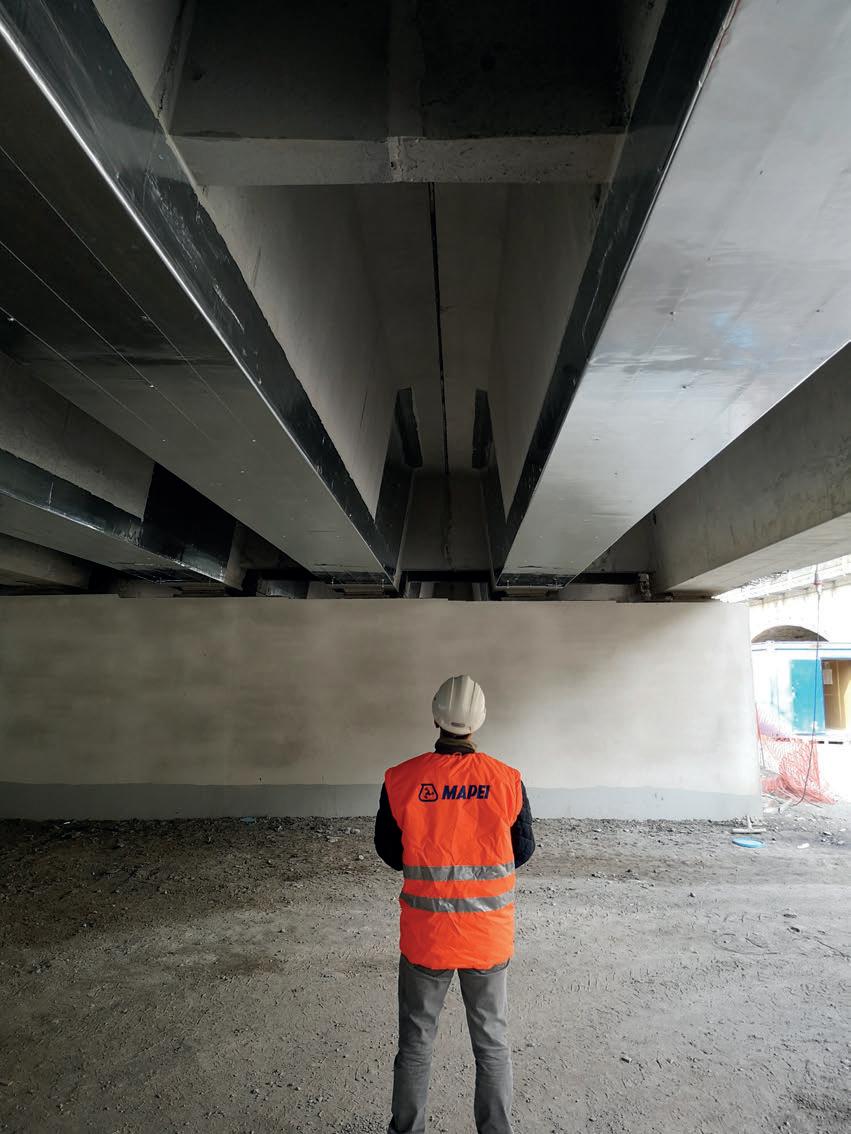










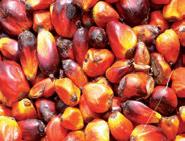








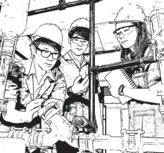





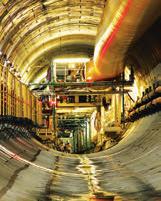



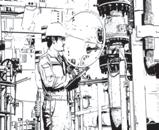






























Alternative energy refers to any source of energy that is an alternative to traditional fossil fuels such as coal, oil and natural gas. Considered for their potential to mitigate negative environmental impacts, reduce dependence on finite resources and enhance energy security, alternative energy sources are powering a clean energy revolution across the world.
The terms “alternative energy sources” and “renewable energy sources” are often used interchangeably but the terms have different nuances1 Renewable energy sources are energy sources that are naturally replenished, such as solar energy, wind energy, hydropower, biomass energy and geothermal energy.
implementing the 2030 Agenda for Sustainable Development. They pledged to accelerate progress towards the transition away from fossil fuels in energy systems to achieve netzero emissions by 20503
Many industrialised nations have made huge strides in the adoption and usage of alternative energy sources. On the other hand, lesser developed countries, already under pressure to reduce poverty and improve livelihoods for their people, are lagging behind in the sustainability race.

Bhadla Solar Park, spanning an area of 14,000 acres, is currently the world's largest solar park.9 Located in Rajasthan, India, the construction cost was US$1.4 billion, with 10 million solar panels having a total capacity of 2245 MW and serving 1.3 million people
Alternative energy sources is a broader term and can include not only renewable energy sources but also other sources that are used as alternatives to conventional fossil fuels, such as nuclear energy or certain forms of fossil fuels with lower emissions like natural gas combined with carbon capture and storage. In essence, all renewable energy sources are alternative energy sources, but not all alternative energy sources are necessarily renewable.
According to the International Energy Agency (IEA), coal has remained the leading source of electricity generation worldwide for the past three decades2. In 2022, coal, natural gas and other fossil fuels accounted for approximately 60% of the global electricity production. After registering modest sector growth due to the Covid-19 pandemic-related supply-chain woes, the IEA has forecasted an accelerated pace of growth for alternative and renewable energy deployment2
This article will focus on alternative energy sources that originate from a source which will not run out, is sustainable, natural, self-replenishing and has a low/zerocarbon footprint such as solar power, wind power and hydroelectric power.
At the G7 Leaders’ Summit in Apulia, Italy, from 13 to 15 June 2024, leaders from Canada, France, Germany, Italy, Japan, the UK and the USA, alongside other EU countries, were united in their steadfast commitment to
From the perspective of investment in alternative energy technologies from 2010 to 2019, China (US$758b), the United States (US$356b), Japan (US$202b), Germany (US$179b) and the UK (US$122b) are leading the race4. But according to the World Economic Forum’s Energy Transition Index (ETI), investment in alternative energy technologies alone is not a robust measure of decarbonisation progress. China, the biggest investor, ranked 68th on the ETI whilst the US and Germany came in at 12th and 11th positions respectively5. The ETI further states that smaller European countries – Sweden, Denmark, Norway, Finland and Switzerland – are the top five countries championing decarbonisation. Collectively, these countries account for around 2% of the global population and approximately 3% of carbon dioxide related emissions5
Derived from the radiant energy of the sun, solar power is a cornerstone of the alternative energy revolution globally. This technology harnesses sunlight through photovoltaic cells or mirrors to generate electricity or heat 6. Solar energy production emits no greenhouse gases, thereby making it a crucial tool in mitigating climate change and reducing air pollution. Advances in manufacturing processes, economies of scale and supportive government policies have significantly lowered the cost of solar
installations, making solar power increasingly competitive in comparison to traditional energy sources.
In 2023, China was the country with the largest solar energy production with 584-terawatt hours. The United States ranked second with less than half of China’s production while India and Japan were third and fourth in the ranking, respectively7
While solar power offers numerous advantages, there are also several disadvantages8. Solar power generation depends on sunlight, which varies throughout the day and is affected by weather conditions. This intermittency can lead to fluctuations in electricity output, requiring backup power sources or energy storage solutions to ensure a consistent supply. Storing solar energy for use during periods of low sunlight remains a significant challenge. Batteries and other storage technologies are improving but these add to system costs and require space and maintenance.
Large-scale solar farms require substantial land area, which can impact natural habitats and agricultural land use. Additionally, the manufacturing, installation and disposal of solar panels can have adverse environmental impacts. The initial investment for installing solar power systems can still be high, especially for residential and commercial applications. Solar panels on rooftops or in open spaces may be visually unappealing, potentially affecting property values or local aesthetics. Integrating solar power into existing electricity grids can pose technical challenges, such as grid stability and management of bi-directional electricity flows from distributed solar installations.
spinning shaft into electrical energy using electromagnetic induction. The electrical energy produced by the generator which is in the form of alternating current is channelled to a transformer, which steps up the voltage to a higher level suitable for transmission over power lines to substations and other end-users. Multiple wind turbines are often grouped together in wind farms to generate large amounts of electricity. Wind farms can be located on land (onshore) or in bodies of water (offshore).
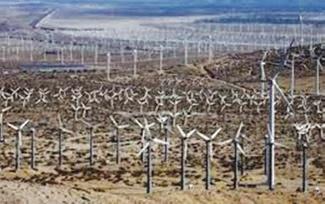
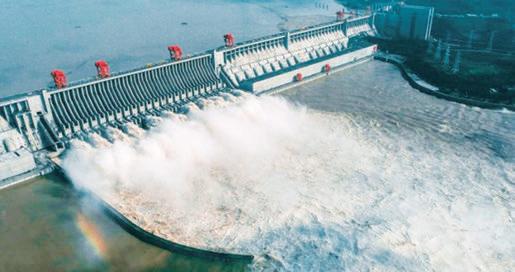
The
Wind energy is harnessed using wind turbines which convert the kinetic energy of wind into electrical energy10 Wind turbines have large blades which are turned by the wind. These blades are linked to a hub which is connected to a high-speed shaft and gearbox. As the wind turns the blades, a rotor spins the main shaft which drives a generator that converts mechanical energy from the
China is the leading producer of wind power (onshore and offshore) and is home to almost half of the world’s accumulated offshore wind power11. The United Kingdom ranks second, followed by Germany, which has just over half of the UK’s cumulative power. While wind energy is a clean and renewable source of power, it has several limitations12. Chief among these is that wind is not constant and can be unpredictable, leading to fluctuations in energy supply and requiring backup power sources or storage solutions. Initial investment for wind turbines and the associated infrastructure can be high, although operational costs are relatively low. Wind farms require large areas of land, which can be a challenge in densely populated or ecologically sensitive regions. Noise from the turbines and the visual impact on the landscape may lead to opposition from local communities and pose a threat to birds and bats. Wind farms are often located in remote areas, requiring significant investment in transmission lines to transport the electricity to where it is needed. Maintenance, while generally low for onshore turbines, can be challenging and costly for offshore wind farms. Wind energy generation is only suitable in regions with sufficient wind resources.
16

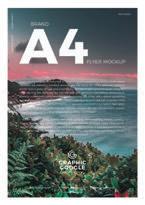


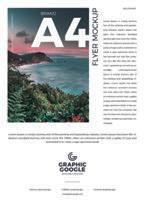



Annual Reports • Booklets • Brochures • Buntings • Business Cards
CD / DVD Replications • Calendars • Cards & Invitations • Certificates
Custom Printings • Envelopes • Folders • NCR Bill Books • Notepads
Leaflets • Letterheads • Paper Bags • Posters • Stickers • Others


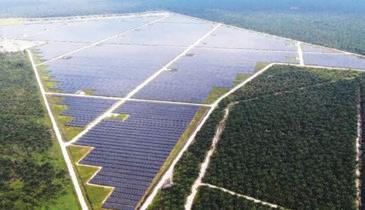

Under a 21-year power purchase agreement (PPA) with Tenaga Nasional Bhd (TNB), the Kerian Solar Power Plant is set to sell CO2 emissionfree electricity generated by its solar photovoltaic energy plant to TNB 18
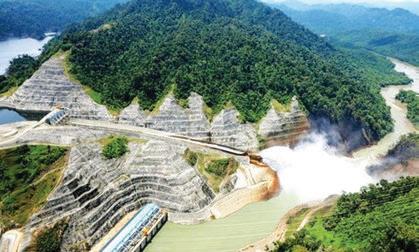




























Malaysia’s foray into the alternative energy sector is very much in its infancy. While we continue to rely heavily on fossil fuels for energy, there is a clear commitment and effort towards diversifying the energy mix and increasing the share of alternative energy sources. Under its Renewable Energy Act 2011, Malaysia is aiming to achieve 20% electricity generation from renewable sources such as solar, biomass, biogas, hydroelectric power and geothermal energy by 202517
Malaysia is home to several solar energy plants located in different states. Notable among these is the Kerian Solar Power Plant in Kerian, Perak18. It began operations in 2022, has a capacity of 100MW and is able to supply more than 212GWh of power per year to the national grid.
Hydroelectric power plays a significant role in Malaysia’s alternative energy mix, contributing to both electricity generation and water resource management19. Malaysia has several hydroelectric power plants, the largest being Bakun Dam in Sarawak (2,400 MW capacity), Murum Dam in Sarawak (944 MW) and Sultan Mahmud Dam in Terengganu (250 MW).
Overall, solar power and hydroelectric power will continue to dominate Malaysia’s alternative energy strategy by providing reliable and clean source of electricity. Ongoing and future developments in these sectors will continue to shape our energy landscape, balancing economic development with environmental and social considerations.
China is poised to outpace the rest of the world in alternative or renewable energy capacity installations in the coming years. Consolidating its position as the undisputed leader in global deployment of renewable energy, China being the world’s highest emitter of CO2, is expected to account for almost 70% of all new offshore wind projects, as well as over 60% of onshore wind and 50% of solar photovoltaic projects by the end of 20242 Unlike the rest of the world, China, alongside the G7 allies, will continue to see massive proliferation in renewable energy projects in the coming years for several reasons.
Investing in alternative energy helps these countries transition away from fossil fuels and enhances resilience to geopolitical risks and energy price volatility. In addition, renewable energy investments stimulate economic growth and create jobs across various sectors whilst positioning these countries as global leaders in clean energy solutions. Realising the multifarious benefits to be gained, China, India, the G7 nations and selected EU nations have hastened the implementation of consistent and adequate policy support systems such as subsidies, incentives and regulatory frameworks which promote investment in alternative and renewable energy projects. These stable policies are crucial for attracting private sector investment and have paved the scaling up of renewable energy deployment with much ease.
Though there are advantages in alternative and renewable energy sources, less developed and impoverished countries have existing infrastructure and vested interests in fossil fuel industries which can slow the transition to renewable energy. Furthermore, outdated and obsolete energy policies and frameworks continue to stifle progress in clean energy initiatives in these nations.
Despite these challenges, the momentum towards renewable energy continues to grow globally, driven by climate change mitigation goals, declining costs and increasing awareness of the environmental and economic benefits of clean energy. Continued international cooperation, innovation and supportive policies are critical to accelerating the transition to a sustainable energy future.
[1] The Pennsylvania State University, What is Renewable Energy? (2023), https://extension.psu.edu/what-is-renewable-energy#:~:text=The%20 term%20alternative%20is%20used,not%20have%20significant%20 environmental%20impact. Accessed on 24 June 2024.
[2] International Energy Agency, Renewable Energy Market Update Outlook for 2023 and 2024 (2023), https://iea.blob.core.windows.net/assets/67ff3040dc78-4255-a3d4-b1e5b2be41c8/RenewableEnergyMarketUpdate_ June2023.pdf. Accessed on 26 June 2024.
[3] G7 Italia 2024, Apulia G7 Leaders’ Communiqué (2024), https://www. g7italy.it/wp-content/uploads/Apulia-G7-Leaders-Communique.pdf. Accessed on 26 June 2024.
[4] Climate Trade, Top 10 countries leading the world’s decarbonization (2023), https://climatetrade.com/top-10-countries-leading-the-worldsdecarbonization/#:~:text=1.,122%20per%20ton%20in%202023. Accessed on 28 June 2024.
[5] World Economic Forum, Energy Transition Index Global Overview, (2023), https://www.weforum.org/publications/fostering-effectiveenergy-transition-2023/global-dashboard/#report-nav. Accessed on 28 June 2024.
[6] U.S. Department of Energy, How Does Solar Work? (n.d.), https://www. energy.gov/eere/solar/how-does-solar-work#:~:text=When%20the%20 sun%20shines%20onto,cell%2C%20causing%20electricity%20to%20 flow. Accessed on 1 July 2024.
[7] Statista, Electricity production from solar worldwide 2023, by country (2023), https://www.statista.com/statistics/1421748/global-solar-energygeneration-leading-countries/#:~:text=In%202023%2C%20China%20 was%20the,fourth%20in%20the%20ranking%2C%20respectively. Accessed on 1 July 2024.
[8] Earth. Org, What Are the Advantages and Disadvantages of Solar Energy? (2023), https://earth.org/what-are-the-advantages-anddisadvantages-of-solar-energy/. Accessed on 1 July 2024.
[9] Himatek Its, Bhadla Solar Park (2024), https://himatekkits.com/article/ bhadla-solar-park-. Accessed on 3 July 2024.
[10] U.S. Department of Energy, How Do Wind Turbines Work? (n.d.), https:// www.energy.gov/eere/wind/how-do-wind-turbines-work#:~:text=Wind%20 turbines%20work%20on%20a,a%20generator%2C%20which%20 creates%20electricity. Accessed on 3 July 2024.
[11] Vector Renewables,What Are the Countries Leading the Way in Wind Energy Capacity? (2023), https://www.vectorenewables.com/en/blog/ countries-leading-wind-energy-capacity. Accessed on 5 July 2024.
[12] U.S. Department of Energy, Advantages and Challenges of Wind Energy (n.d.), https://www.energy.gov/eere/wind/advantages-andchallenges-wind-energy. Accessed on 5 July 2024.
[13] Green Dealflow, The biggest operational wind farm projects worldwide (2021), https://greendealflow.com/biggest-wind-farm-projects-worldwide/. Accessed on 7 July 2024.
[14] U.S. Department of Energy, How Hydropower Works (n.d.), https://www. energy.gov/eere/water/how-hydropower-works#:~:text=There%20 are%20many%20types%20of,homes%2C%20businesses%2C%20 and%20industries. Accessed on 7July 2024.
[15] Insider Monkey, 5 Countries That Produce the Most Hydropower (2023), https://www.insidermonkey.com/blog/5-countries-that-produce-themost-hydropower-1113356/?singlepage=1. Accessed on 9 July 2024.
[16] Global Times, Three Gorges Dam releases water to relieve drought (2022), https://www.globaltimes.cn/page/202208/1273300.shtml. Accessed on 9 July 2024.
[17] Sustainable Energy Development Authority, RENEWABLE ENERGY ACT 2011 (2019), https://www.seda.gov.my/policies/renewable-energyact-2011/. Accessed on 9 July 2024.
[18] Free Malaysia Today, New solar farm to take Malaysia closer to renewables target (2022), https://www.freemalaysiatoday.com/ category/business/local-business/2022/08/18/new-solar-farm-to-takemalaysia-closer-to-renewables-target/. Accessed on 9 July 2024.
[19] Power Technology, Top five hydro power plants in development in Malaysia (2024), https://www.power-technology.com/data-insights/top5-hydro-power-plants-in-development-in-malaysia/. Accessed on 16 July 2024.
Prepared by: Ir. Shamila Ariaratnam

A Freelance Healthcare & Biomedical Engineering Consultant, Trainer and Auditor with Armamentarium Consulting. Currently, she is the Deputy Chairperson of EETD and Advisor to the Healthcare and Biomedical Engineering Working Group.
A notice inviting nominations for the Election of Council Members for Session 2025/2026 will be posted on the IEM Notice Board and IEM website by 1 November 2024 for the information of all Corporate Members of IEM. Following the close of nominations on 7 December 2024, the election exercise will proceed. All Corporate Members residing overseas are requested to take note of the requirements of the Bylaw, Section 5.17, as shown below.
The voting paper (in hardcopy or electronic form) shall, not less than twenty-eight (28) clear days before the date of the Annual General Meeting, be sent by post or in electronic mail or message to all Corporate Members. The voting paper (in hardcopy or electronic form) shall be returned or submitted online and in turn notified to the Honorary Secretary in a sealed envelope or electronically encrypted format so as to reach him by a specified date not less than seven (7) days before the Annual General Meeting.
Electronic Ballot Papers will be sent to all Corporate Members by 3 March 2025
Thank you. Election Officer, IEM
Webinar Talk on “Sustainable Energy Project from Equity & Inclusion Perspective in ESG and SDG Environment”
Date : 12 October 2024 (Saturday)
Time : 9.00 a.m. - 11.00 a.m.
Venue : Digital Platform
Approved CPD : 2
Speaker : Ir. Noor Iziddin Abdullah Ghazali
Physical One-Day Course on "Scheduling with Microsoft Project - Practical Fundamentals"
Date : 12 October 2024 (Saturday)
Time : 9.00 a.m. - 5.30 p.m.
Venue : Wisma IEM
Approved CPD : 6
Speaker : Ir. Faizal A. Sanusi
Webinar Talk on Optimizing BIM with Advanced Standards & Technologies
Date : 12 October 2024 (Saturday)
Time : 10.00 a.m. - 12.00 p.m.
Venue : Digital Platform
Approved CPD : 2
Speakers : Ms. Bennie Lam Kit Yoke : Mr. Venkatesh Avudaiappan
The latest United Nations climate summit, COP28, held in Dubai, United Arab Emirates, from 30 November to 12 December 2023, underscored a stark reality: Fossil fuels were the primary culprits behind climate change. Over 100 countries pledged to triple renewable energy (RE) capacity and to double the global rate of energy efficiency (EE) by 20301
However, the most significant takeaway was the alarming lag in meeting these goals, jeopardising the 1.5°C warming limit established in the Paris Agreement. Under the Paris Agreement, countries agreed to substantially reduce global greenhouse gas (GHG) emissions to enable the long-term increase in global average surface temperature to be kept well below 2°C2. Why is this crucial? Exceeding this may trigger multiple climate tipping points, leading to abrupt, irreversible changes and have a dangerous impact on humanity.
On 29 August, 2023, Prime Minister Dato’ Seri Anwar Ibrahim, reaffirmed the nation’s commitment to achieving net-zero GHG emissions by 2050. He also announced an ambitious target to increase the installed RE capacity from

40% by 2040 to 70% by 2050 during the launch of the National Energy Transition Roadmap (NETR) 3. As the largest contributor to GHG emissions, the energy sector is central to Malaysia’s sustainability goals. The key pillars of the NETR include enhancing EE, increasing adoption of RE and fostering innovation in energy technologies.
Malaysia was ranked first place in South-East Asia and 35th in the world in the World Economic Forum’s Energy Transition Index 2023.
Biofuel: Turning Agricultural Waste into Energy Gold
Our robust agricultural sector, particularly palm oil production, generates substantial biomass and biogas resources. The industry is expected to produce approximately 110 million tonnes of biomass annually, including empty fruit bunches (EFB), palm kernel shells (PKS) and palm oil mill effluent (POME) 4. As of 2020, over 125 biogas plants were operational, contributing to 28% of nationwide biogas implementation, with most connected to the national power grid5. However, not all biogas plants are located in strategic areas; most are located in remote places with limited access to the national power grid.


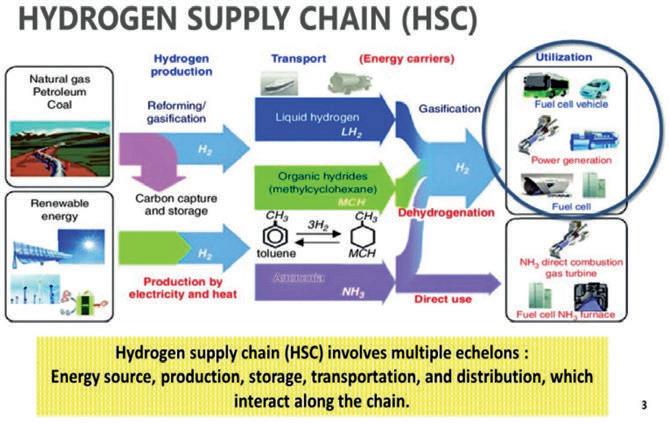
Biofuels, which are practically carbon neutral, offer an alternative to diesel, compressed natural gas (CNG) and liquefied natural gas (LNG). Potential biofuels in Malaysia include biodiesel, bio-CNG and bio-LNG. Biodiesel can be produced from advanced acid esterification or oleochemical processes of all types of non-edible oils and fat wastes containing free fatty acids (FFA)6. Introduced in January 2020, the B20 mandate, requiring production of biofuel with a 20% palm oil component for the transport sector, has boosted biodiesel production. According to S&P Global Inc., the biodiesel production in Malaysia stood at 1.4 million metric tonnes in 2023 and was expected to surge to 2.5 million metric tonnes7
Biogas capture is done by installing an anaerobic digester lagoon or tank system that allows the capture of the biogas. In its unpurified form, biogas from POME has methane composition of 55%-65%, with a high content of harmful gases such as hydrogen sulphide (H2S) of up to 4,000 ppm. After purification or biogas upgrading, the methane content rises to a minimum of 90%, with very minimal traces of H2S. The gas characteristics of biomethane is equivalent to pipeline natural gas composition. Purified biogas or biomethane can be injected into the natural gas pipeline and distributed across the national gas grid.
However, given the locations of biomethane plants which are spread mostly in rural locations with limited access to the gas pipeline, biomethane can also be upgraded to bio-CNG or bio-LNG, which can be efficiently
stored and transported in CNG or LNG cylinders with a more cost-efficient means of gas distribution 5. The virtual pipeline is a network of tube trailers that transport bioCNG or bio-LNG from the source to the off-takers, which are usually located in industrial zones. The bio-CNG or bio-LNG will then be fed into the receiving facility which will have a pressure reducing skid.
Hydrogen, particularly green hydrogen produced from renewable sources, represents a frontier in Malaysia’s energy transition. McKinsey forecasts that global demand for green hydrogen is expected to reach 125-585 million tonnes per year by 2050, with a global hydrogen economy valued at US$2.5 trillion 9
Depending on production methods, hydrogen can be classified as green, blue or grey. Green hydrogen, considered top premium, is produced by splitting water using electrolysis powered by RE from solar and hydropower plants, emitting zero carbon emissions in the process10. Blue hydrogen, produced from natural gas with carbon capture and storage (CCS), can also be considered “clean” if it meets strict carbon capture standards. Grey hydrogen, produced through steam methane reforming, contributes to carbon emissions as it releases carbon dioxide and uses non-renewable sources for production. Currently, hydrogen is used widely in the chemical industry as feedstock, in the steel industry as a reducing agent and for special applications in various industries.



The government and private sectors are investing in pilot projects and research initiatives to explore the potential of hydrogen. PETRONAS has launched several green hydrogen projects aimed at decarbonising its operations and creating new revenue streams. These initiatives are aligned with the United Nation’s Sustainable Development Goals (SDGs) with the global push towards hydrogen as a versatile and clean energy carrier. The molecule is widely seen as a key element in the future energy system, contributing to a lower carbon future.
Sarawak Energy Berhad on the other hand, has developed ASEAN’s first hydrogen production and refuelling station. The plant, capable of producing 130kg of hydrogen per day with a purity of 99.999%, is able to support and fully refuel up to five fuel cell buses and 10 fuel cell cars per day
The first hydrogen refuelling station in the peninsula is also in the works. Toyota Mirai is the world’s first hydrogen fuel cell vehicle (FCV) being mass produced currently. According to The Edge Malaysia, our potential as a regional hub for producing green hydrogen, not only for domestic use but also for export, is significant. Green hydrogen produced through electrolysis and using renewable power, costs US$10-US$15 per kg, depending on availability11. So, driving higher demands and strong policies are essential to lowering hydrogen costs and increasing adoption.
The Malaysian Nuclear Agency has been operating a 1MW research reactor for over 40 years. The Triga Puspati Reactor, also known as RTP, is the first and only nuclear research reactor in the country which began operations in 1982 and reached its first criticality on 28 June 198213. RTP is a pool type reactor, where the reactor core sits at the bottom of a 7m high aluminium tank, surrounded by a biological shield made of high-density concrete. The reactor uses solid fuel elements in which the zirconium-hydride moderator is homogeneously combined with enriched uranium with 1MW thermal power. Demineralised water acts as both coolant and neutron moderator, while graphite acts as a reflector. The research reactor has been used for radioisotope production for medical and industrial applications. In the past, Malaysia had a robust nuclear programme and had plans to establish two operational nuclear power plants by 2021. However, these plans took an unexpected turn and were postponed indefinitely.
Today, the pressing need to decarbonise and diversify energy sources has led the Ministry of Energy Transition & Water Transformation (PETRA) to study the suitability of small modular reactors (SMR). This includes considerations from the aspects of policies, technology, safety, cost, public apprehensions and the impact of nuclear use on the environment 14 Nuclear power can help Malaysia meets its clean energy goals and transition away from fossil fuels. As a zero-emission energy source, adding nuclear to the energy mix would align the government’s aim of reducing carbon emissions. While renewable sources such as solar and wind energy are preferable, nuclear can provide a robust and reliable baseload power to complement variable renewables (VRE). Commissioning and building a nuclear power plant can take up to 20 years and this is without considering the large upfront capital cost and technical complexity associated with traditional nuclear plants. A simpler, smaller and more versatile version of traditional nuclear plants can categorically address these issues and accelerate the deployment of nuclear energy in the country. In ASEAN, while nuclear power does not have a large presence, the region’s developing economies are increasingly becoming interested in the possibilities of nuclear power generation.
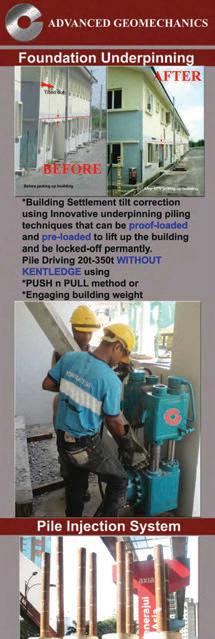


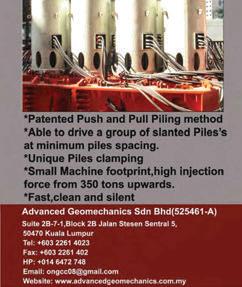

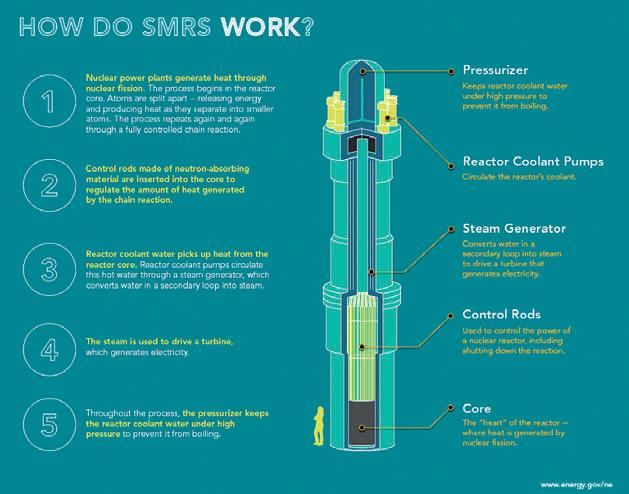
New SMR designs offer enhanced safety and lower costs. SMRs are smaller, factory-built reactors which utilise passive safety features and modular construction15 This allows them to be more affordable to build offsite, shipped for installation on-site and be easier to operate safely. These increased safety margins help eliminate or significantly lower the potential for unsafe release of radioactivity to the environment and the public in case of an accident as passive systems rely on physical phenomena such as natural circulation, convection, gravity and self-pressurisation where no human intervention or external power or force is required to shut down systems. Their size and modularity also allow them to be deployed in locations not suitable for large nuclear power plants. The United States, Russia, China, the United Kingdom and Canada are among the most advanced countries in the development of SMR technology. The reactors in SMRs harness nuclear fission to generate heat to produce energy.
An SMR is capable of producing large amounts of low-carbon electricity on a reduced footprint and can have a power capacity of up to 300MWe per unit, which is approximately one-third of the generating capacity
of a traditional nuclear power reactor. An SMR also has potential for hydrogen production, which is considered the future energy source. SMRs have reduced fuel requirements as they only need refuelling every 3-7 years, unlike 1-2 years for traditional nuclear plants.
Globally, more than 80 commercial SMR designs are in development, targeting varied outputs and applications such as electricity, hybrid energy systems, heating, water desalinisation and steam for industrial applications16 Stringent regulations and requirements in SMR systems will need to be developed and standardised to ensure safety of the technology and to assuage public fears about nuclear power.
Malaysia’s journey towards a sustainable energy future is marked by innovation, collaboration and a steadfast commitment to environmental stewardship. Advances in biofuels, hydrogen and nuclear technologies highlight the diverse potential of alternative energy sources. By aligning national energy strategies with global initiatives like COP28 and the NETR, we are poised to lead in the green energy revolution.
[1] World Economic Forum. What were the key outcomes of COP28? https://www.weforum.org/agenda/2023/12/cop28-keyoutcomes-un-climate-summit/. Accessed May 2024.
[2] United Nations. 1.5oC: what it means and why it matters. https:// www.un.org/en/climatechange/science/climate-issues/degreesmatter. Accessed May 2024.
[3] Ministry of Economy. National Energy Transition Roadmap: energizing the nation, powering our future. Ministry of Economy; 2023.
[4] Chong, M. M., Tan, L. S., et. al. Potential of functionalized cellulose from oil palm biomass as nitrogen and phosphorusbased nutrient absorbent – a review. http://jopr.mpob. gov.my/wp-content/uploads/2022/07/JOPR-Vol-33-3September-2021.pdf. Journal of Oil Palm Research; September 2021.
[5] Amin, M. A., Yin, L. S., et. al. Methane biogas production in Malaysia: challenge and future plan. https://onlinelibrary.wiley. com/doi/10.1155/2022/2278211#:~:text=The%20increasing%20 demand%20for%20biomethane,the%20national%20grid%20 %5B58%5D. International Journal of Chemical Engineering; October 2022.
[6] Malaysia Investment Development Authority (MIDA). Our way: advanced biofuel. https://www.mida.gov.my/our-way-advancedbiofuel/. Accessed May 2024.
[7] S&P Global Inc. Malaysia’s B20 mandate could boost biodiesel output by 79%: trade body head. https://www. spglobal.com/commodityinsights/en/market-insights/latest-news/ agriculture/030624-interview-malaysias-b20-mandate-couldboost-biodiesel-output-by-79-trade-body-head. Accessed May 2024.
[8] Cenergi SEA Berhad.
[9] McKinsey & Company. Global energy perspective 2023: hydrogen outlook. https://www.mckinsey.com/industries/oiland-gas/our-insights/global-energy-perspective-2023-hydrogenoutlook. Accessed June 2024.
[10] The Edge Malaysia. Catalysing Malaysia’s green hydrogen regional hub aspirations. https://www.theedgemalaysia.com/ content/advertise/catalysing-malaysias-green-hydrogenregional-hub-aspirations. Accessed June 2024.
[11] The Edge Malaysia. Energy: can Malaysia be a hydrogen hub? https://theedgemalaysia.com/node/718769. Accessed July 2024.
[12] Malaysia Investment Development Authority (MIDA). Hydrogen as an attractive new energy source/ carrier. https://www.mida. gov.my/hydrogen-as-an-attractive-new-energy-source-carrier/. Accessed July 2024.
Prepared by:


Ir. Kwok Yew Hoe
Chairman of Electrical Engineering Technical Division (EETD) and Chief Business Development Officer of Cenergi SEA Bhd.
Ir. Alex Looi Tink Huey
General Manager for Malim Consulting Engineers Sdn. Bhd. as well as IEM Excomm, Council Member and Secretary of EETD.
IEM Council and Management would like to extend our heartiest congratulations to Ir. Haidel Heli for being conferred the Darjah Yang Amat Mulia Bintang Sarawak Pegawai Bintang Sarawak (PBS).

[13] Malaysian Nuclear Agency. Triga Puspati reactor. https:// www.nuclearmalaysia.gov.my/eng/kemudahan-rnd.php?id=1. Accessed July 2024.
[14] New Sarawak Tribune. Ministry weighing nuclear reactor option: DPM. https://www.newsarawaktribune.com.my/ministryweighing-nuclear-reactor-option-dpm/. Accessed July 2024.
[15] Nuclear Business Platform. Reviving Malaysia’s nuclear energy program. https://www.nuclearbusiness-platform.com/ media/insights/reviving-malaysia-nuclear-energy-program. Accessed July 2024.
[16] International Atomic Energy Agency. What are small modular reactors (SMRs)? https://www.iaea.org/newscenter/news/whatare-small-modular-reactors-smrs. Accessed July 2024.
[17] United States Department of Energy. 4 key benefits of advanced small modular reactors. https://www.energy.gov/ ne/articles/4-key-benefits-advanced-small-modular-reactors. Accessed July 2024.














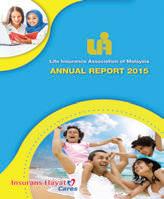


















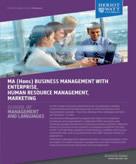


















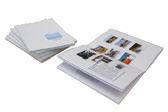

After a 10-year hiatus, the IEM Electrical Engineering Technical Division (EETD) resumed the Prestige Lecture series with the 13th edition. The lecture was named after Y.M. Raja Tan Sri Ir. Zainal Raja Sulaiman, the second President of the Institution of Engineers, Malaysia (IEM) from 1962 to 1964. He was also the General Manager of the National Electricity Board before his retirement in 1974.
The speaker of honour was YBhg. Dato’ Ir. Ts. Abdul Razib Dawood, the Chief Executive Officer of Suruhanjaya Tenaga/ Energy Commission of Malaysia and an IEM Council Member.
IEM President Ir. Prof. Dr Jeffrey Chiang was present to give the opening remarks and to introduce Dato’ Ir. Ts. Abdul Razib.
During the very engaging talk, the speaker shared insights into the rapid developments in Renewable Energy (RE) and Energy Efficiency (EE) in Malaysia and consequently the roles and opportunities for engineers.

He pointed out that engineers played a huge role in designing and delivering infrastructure projects, describing them as the unsung heroes who did not seek the limelight. He also spoke passionately of the important role of engineers in enabling the energy transition.
He gave an uplifting speech for all participants which lasted 2.5 hours with a vibrant Q&A session. We were honoured to have Dato’ Ir. Ts. Abdul Razib speak at the Prestige Lecture.
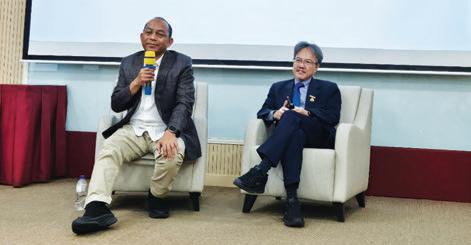



Annual Reports • Booklets • Brochures • Buntings • Business Cards
CD / DVD Replications • Calendars • Cards & Invitations • Certificates
Custom Printings • Envelopes • Folders • NCR Bill Books • Notepads Leaflets • Letterheads • Paper Bags • Posters • Stickers • Others




On 4 March 2024, IEM EETD and ABB Malaysia jointly organised a seminar at ABB’s new office. There were 200 participants at the seminar which focused on the latest trends in data centres. It also addressed reliable power protection and distribution solutions. This report delves into the strategies and innovations ensuring uninterrupted power supply in data centres, highlighting key trends and selectivity techniques.


The data centre market is surging, driven by rapid technological advancements and shifting demands. Recent trends include:
1. ICT Innovations: The Internet of Things (IoT), cloud computing, Artificial Intelligence (AI), big data, data analytics, blockchain and 5G wireless telecommunications. These technologies demand significant computational power and data storage, pushing data centres to expand and upgrade their infrastructure to handle the increased workload and provide faster data processing and transmission speeds.
2. Rise of Edge and Hyperscale Data Centres: The deployment of 5G telecommunications networks has fuelled investments in edge and hyperscale data centres. This decentralised approach enhances data processing efficiency and reduces latency by connecting multiple edge data centres to a central hyperscale facility.
3. Sustainability and Efficiency: Data centres are investing in alternative energy sources and embracing new technologies to improve energy efficiency and reduce environmental impact. Initiatives such as using renewable energy sources like solar and wind power, implementing advanced cooling techniques, and optimising energy consumption through intelligent management systems are becoming standard practices.
To minimise disruptions, data centres must adopt advanced power distribution systems, robust infrastructure and effective management practices:
1. Advanced Power Distribution: Electrical Systems such as low-voltage switchgear (LVSG), low-voltage switchboards (LVSB) and electronic relays and controls are vital for efficient power management. These systems ensure reliable power throughout the data centre, preventing outages and maintaining continuous operations. Advanced power distribution systems also enable real-time monitoring and control.
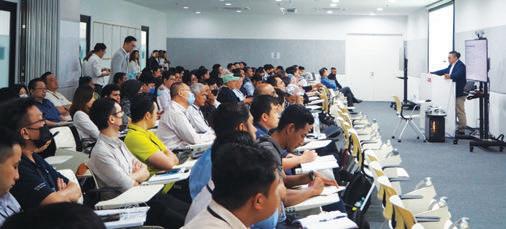

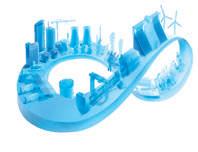









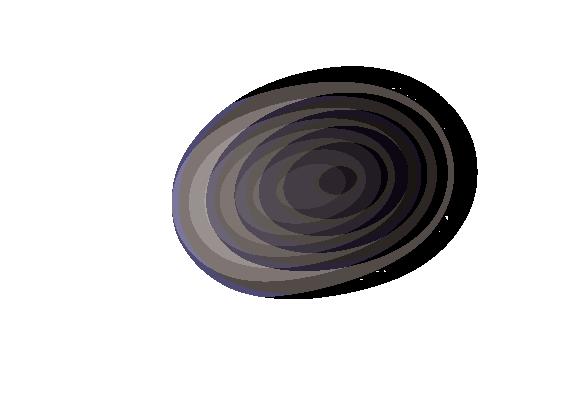
2. Power Protection Measures: Uninterruptible Power Supplies (UPS), Power Distribution Units (PDU), Remote Power Panels (RPP) and Automatic Transfer Switches (ATS) are essential to safeguard against power outages. UPS systems provide temporary power during outages, allowing for safe shutdowns or transition to backup generators. PDUs and RPPs manage power distribution to various equipment, ensuring each component receives the appropriate voltage and current. ATS units automatically switch to backup power sources in the event of a primary power failure, ensuring continuous operation without manual intervention.
3. Cooling Systems: Efficient cooling solutions, including variable frequency drives (VFDs) and high-efficiency motors, are necessary to prevent overheating and ensure continuous operation. Cooling systems regulate the temperature within data centres, preventing heat buildup which can damage sensitive equipment and lead to power failures.
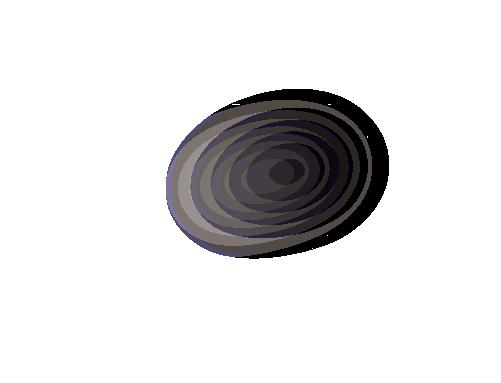






Selectivity techniques play a crucial role in maintaining power continuity by isolating faults and preventing widespread outages:
1. Zone Selectivity: This technique identifies and isolates fault zones through communication between current measuring devices, reducing damage and thermal stress on components.
2. MCCBs and MCBs Coordination: Ensuring selectivity between Moulded Case Circuit Breakers (MCCBs) and Miniature Circuit Breakers (MCBs) minimises the impact of faults, isolating only the affected circuit.
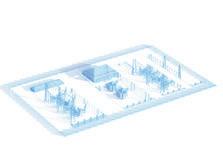

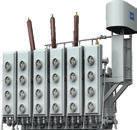




3. UPS Networks and Main Distribution Boards: Proper configuration and coordination in these areas are crucial for effective fault management and maintaining power continuity. Selectivity in UPS networks isolate fault without compromising the backup power system.
The future of data centres lies in integrating cutting-edge solutions to enhance efficiency, sustainability and reliability:
1. Digital Operations: Automation, electrical power management systems, asset management, intelligent building solutions and condition monitoring revolutionise data centre operations. Automation reduces human error and increases operational efficiency, while electrical power management systems provide real-time monitoring and control of power usage.
2. Alternative Power Resources: Generators, fuel cells, microgrids and renewable energy integration provide reliable backup power and reduce dependency on traditional sources.
3. Comprehensive Support Services: Installation, commissioning, consulting, retrofits and digital upgrades are essential for maintaining continuous operations in data centres. These services ensure that data centre infrastructure is up to date, optimised for performance and capable of handling future demands.





Ensuring uninterrupted power in data centres is a complex challenge which requires a strategic combination of advanced technologies, robust infrastructure and innovative solutions. By embracing efficient techniques and staying abreast of market trends, data centres can meet the growing demands of the digital age, ensuring reliable and efficient operations. As data centres evolve, new technologies and sustainable practices are key to achieving continuous power and supporting the ever-increasing digital demands of businesses and consumers.



STARBARS ARE:
1. GLASS FIBRE REINFORCED POLYMER (GFRP) BARS
2. CHEAPER BY 15% COMPARED TO STEEL
3. CORROSION RESISTANCE
4. 2X HIGHER TENSILE STRENGTH
5. 4X LIGHTER THAN STEEL
6. NON-CONDUCTIVE TO THERMAL AND ELECTRICAL
7. 70% CARBON EMISSION REDUCTION
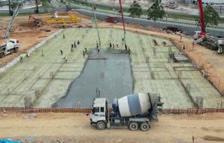

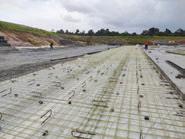





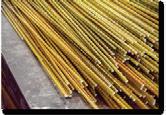
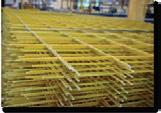
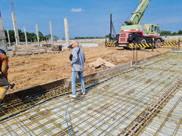
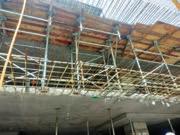








As part of its efforts to illuminate International Women’s Day, IEM’s Women Engineers (WE) Section organised a technical visit to the Palace of Justice in Putrajaya, on 29 April 2024. The event, Up, Close & Personal with Chief Justice of Malaysia, was made even more meaningful by the presence of Yang Amat Tun Tengku Maimun Tuan Mat, the trailblazing Chief Justice of Malaysia, who made history as the first female in this esteemed role.
Besides the opportunity to engage our distinguished Chief Justice in a purposeful dialogue, the session also facilitated a meaningful exchange of knowledge between the Chief Justice and women engineers, encouraging collaboration to build a supportive community in Malaysia that transcends professional boundaries.

Prepared by: Ts. Irene Lock Sow Mei
details inspired by Moorish architecture. This architectural masterpiece is distinguished by impressive domes, columns and arches, all of which highlight its grandeur and majesty. Both the exterior and interior of the Palace of Justice are adorned with exquisite motifs and carvings, enhancing its charm and elegance.
We had the opportunity to admire key exhibits and artifacts housed in the museum, which included historical court documents, judicial robes and significant legal texts which have shaped the Malaysian legal system.
Then we were escorted to the banquet hall where Ir. Rusnida Talib, Vice Chairman II of IEM, Women Engineers Section, kickstarted the Up, Close & Personal with Chief Justice of Malaysia session with an inspiring speech which highlighted the role of IEM WE as a beacon of progress and gender equality in the field of engineering.
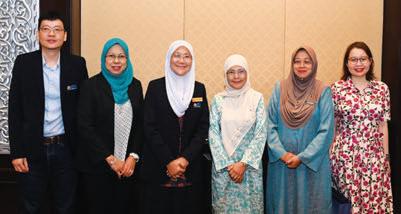
The visit started with a welcome briefing by the Deputy Registrar of the court, Puan Nadia Mohd Kamal and Miss Elena Hong Tze Lan. This set the tone for the technical visit, providing an informative introduction to the Palace of Justice. The session included a comprehensive overview of the building’s significance, operational highlights and key areas of interest that would be covered during the technical visit. In addition, the participants were also enlightened on the history of the Palace of Justice which highlighted its establishment and its significant role in the Malaysian judicial system.
After that, participants went on a guided tour of the Palace of Justice and the Judicial Museum. The technical visit was definitely an eye-opening experience which allowed us to gain deeper insights into the historical evolution of the Malaysia judicial system.
The five-storey building stands as a magnificent edifice that exemplifies exceptional features and intricate
Next the Director of e-Kehakiman Division, Tuan Harmi Thamri Mohamad, gave us an introductory session to the e-Kehakiman system. This innovative digital platform has transformed the Malaysian judicial system, offering a more efficient, transparent and accessible means of managing legal processes. With the digitising of the various judicial processes, e-Kehakiman will reduce delays, minimise paperwork and improve the overall user experience for legal professionals and the public alike.
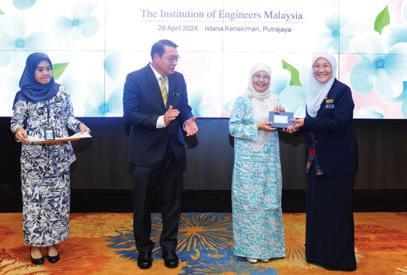
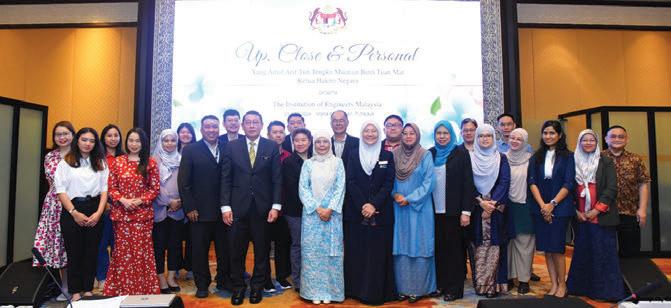
After that, Tun Tengku Maimun shared with us her experiences and achievements, providing valuable perspectives on breaking barriers and inspiring the next generation of legal minds. As the first woman to ascend to the highest judicial office of the country, she brings with her not only her expertise in jurisprudence but also a profound commitment to advancing the cause of empowerment and leadership for women.
Following the keynote address was an interactive Q&A session. Participants could pose questions directly to the Chief Justice and this led to a dynamic and engaging dialogue session which addressed the critical importance of maintaining judicial independence, democracy and upholding the highest standards of integrity within the judiciary. Tun Tengku Maimun reiterated the commitment to combating corruption and ensured that all judicial officers would adhere to strict ethical guidelines.
The event ended with closing remarks from Ts. Irene Lock Sow Mei. On behalf of the IEM WE committee, she expressed heartfelt gratitude to Tun Tengku Maimun and the host from the Palace of Justice for their hospitality.
After this, the Vice President of IEM, Ir. Dr Siti Hawa Hamzah, presented a token of appreciation to Tun Tengku Maimun, reinforcing the embodiment of unity and solidarity among women.
In conclusion, the objectives of the technical visit had been achieved, particularly in celebrating and honouring the resilience, achievements and influence of women pioneers in both justice and engineering.
The sharing session by the Chief Justice stands as a beacon of hope and inspiration, breaking barriers and shattering stereotypes as well as paving the way for future generations of women to pursue their aspirations without limitations. The golden opportunity to visit the Palace of Justice also provided a moment for us to appreciate the commitment to maintaining its architectural heritage, historical significance and cultural legacy.
Physical Digital Class on “ Crafting the Future: A Makers Journey into Innovation and Creation
Date : 12 October 2024 (Saturday)
Time : 11.00 a.m. - 1.00 p.m.
Venue : Maker Space
Approved CPD : 2
Speaker : Various
Technical Visit to Nextgreen Global Berhad's Green Technology Park (GTP)
Date : 17 October 2024 (Thursday)
Time : 10.00 a.m. - 1.00 p.m.
Venue : No 1, Jalan Wan Kadir, Taman Tun Dr Ismail, 60000 Kuala Lumpur, Wilayah Persekutuan Kuala Lumpur
Approved CPD : 3
Webinar Talk on “Understanding 5G Broadcast”
Date : 17 October 2024 (Thursday)
Time : 3.00 p.m. - 5.00 p.m.
Venue : Digital Platform
Approved CPD : 2
Speaker : Tengku Razman Tengku Othman
One-Day Course on ‘An Introduction to The Practice & Procedure of Arbitration
Date : 19 October 2024 (Saturday)
Time : 9.00 a.m. - 5.00 p.m.
Venue : Wisma IEM
Approved CPD : 7
Speaker : Ir. Harbans Singh K.S
Professional Interviewer Workshop
Date : 19 October 2024 (Saturday)
Time : 10.00 a.m. - 5.15 p.m.
Venue : Digital Platform
Speaker : Ir. Dr Mui Kai Yin
The Institution of Engineers, Malaysia (IEM) Professional Interview (PI) is a crucial milestone for aspiring engineers in the country. The performance data from 2020 to May 2023, offers insightful revelations about the examination outcomes across various regions. Analysing this data provides a comprehensive understanding of overall performance trends and specifically, the performance of candidates interviewed at the IEM Headquarters (HQ), which has the most significant number of candidates. Candidates are allowed to choose the venue for the interviews, depending on their localities and preferences.
Some regions which have lower passing rates, highlight potential areas for improvement in candidate preparation or support from IEM.
The performance of candidates at the IEM HQ is particularly noteworthy due to the significant number of participants in this region. With 654 candidates, HQ represents the largest cohort by far. Of these, 527 candidates passed the examination, resulting in a pass rate of 81%.
The HQ pass rate aligns closely with the overall national average, slightly surpassing it by 1%. This minor difference indicates that the HQ performance is reflective of the general trend across all regions. However, the sheer volume of candidates at the HQ amplifies the importance of this region’s results. Given the high stakes and the large candidate pool, maintaining an 81% pass rate is testament to the effective preparation and quality of candidates in this region.
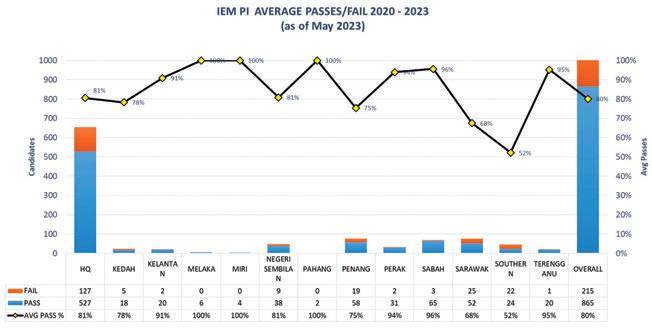
The overall performance of candidates in the IEM PI during this period reveals a moderately high success rate. Of the total of 1,080 candidates, 865 passed the examination, resulting in an 80% pass rate. This is indicative of a rigorous preparation process that most candidates undergo. The IEM, through its sub-committees, has been actively providing support to candidates through the PI Workshop to Candidates seminars, structured training programmes to company employees and advisory clinics for unsuccessful candidates. The following chart shows the passing rates from IEM branches and the overall passing rate for the period.
The distribution of pass rates across different regions shows a diverse range of results. Regions with larger numbers of candidates, such as HQ, Penang, Sabah and Sarawak, show more variability in their pass rates.
The performance of candidates at HQ is crucial as it serves as a benchmark for other regions. The centralised resources, training facilities and access to preparatory materials are likely to have contributed to the robust performance of the candidates. However, the 19% failure rate suggests that there is still room for improvement. Enhanced preparatory programmes, targeted support for weaker candidates and continuous feedback mechanisms can further boost the pass rates.
When comparing the HQ to other regions, several key insights emerge. These discrepancies call for a deeper investigation into regional support systems, resources availability and candidate preparedness. The variations in pass rates across regions indicate the need for a more uniform approach to candidate preparation and support. By addressing the gaps and leveraging successful strategies
from high-performing regions, IEM can aim to further elevate the pass rates and ensure a consistently high standard of professional competence among engineers in the country.
The IEM HQ PI passing rates for various engineering disciplines from 2020 to 2023 provide valuable insights into the performance trends and outcomes of candidates. The disciplines considered include Civil, Mechanical, Electrical, Chemical and Others (Geotechnical, Manufacturing, Building Services, Mechatronic, Electronic, Petroleum, Bioengineering, etc.).
Chemical Engineering displayed a variable trend in pass rates. Starting at 69% in 2020, the pass rate dropped to 56% in 2021, marking the lowest among all disciplines for that year. However, a remarkable recovery followed, with pass rates jumping to 86% in 2022 and further improving to 89% in 2023.
The Others category, which includes various specialised engineering fields, showed a positive and consistent trend. Beginning at 81% in 2020, the pass rates remained steady at 80% in 2021, then improved to 85% in 2022 and reached 90% in 2023.
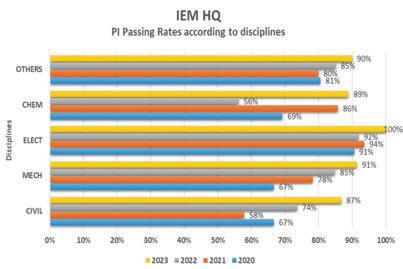
A thorough examination of this data reveals important patterns and highlights areas of strength and potential improvement across different years.
Civil Engineering candidates experienced a notable upward trajectory in pass rates over the four-year period. Starting at 67% in 2020, the pass rate dipped to 58% in 2021, possibly due to the disruptive impacts of the COVID-19 pandemic on education and examination processes. However, a significant recovery is evident, with the pass rates climbing to 74% in 2022 and reaching a commendable 87% in 2023.
Mechanical Engineering candidates demonstrated consistent and substantial improvements over the years. From an initial pass rate of 67% in 2020, the rate increased to 78% in 2021, rising further to 85% in 2022 and achieving an impressive 91% in 2023.
Electrical Engineering maintained consistently high pass rates, starting at 91% in both 2020 and 2021, slightly improving to 94% in 2022, and achieving a perfect 100% in 2023.
Across most disciplines, there is a clear trend of improving pass rates over the years. This suggests that the IEM has successfully implemented effective training and preparatory strategies, especially in response to the challenges posed by the COVID-19 pandemic.
In summary, the HQ PI passing rates by discipline reveal a generally positive trend, with improvements across most disciplines. The consistent increase in pass rates, particularly in Electrical and Mechanical Engineering, highlights the success of the preparatory programmes and educational strategies implemented by IEM. While some disciplines faced challenges, the overall recovery and improvement suggested effective interventions and a commitment to maintaining high standards in engineering education and professional development. This data underscores the importance of continuous improvement and adaptation in training strategies to ensure the success of future engineering professionals.
1.
Other initiatives by IEM are as follows:
The newly launched Outcome-Based PI 2.0 aims to simplify documentation and assessment procedures, making the process more streamlined and user-friendly. Importantly, this simplification does not compromise the core requirements set by international bodies such as the International Professional Engineers Agreement (IPEA) and the Asia Pacific Economic Cooperation (APEC). PI 2.0 integrates the Technical Report with the Training and Experience Report, shifting the focus from the duration of experience to the quality of technical expertise demonstrated.
Established by IEM, this scheme is designed to provide comprehensive practical training for young graduates entering the engineering profession. The scheme aligns with the Institution’s rules for the admission of Corporate Members, ensuring that participants gain essential
skills and professional competence. Companies can collaborate with IEM to enroll their staff members in this programme, which typically takes place on weekends. This partnership enhances the professional development of employees while boosting the company’s reputation for fostering well-trained professionals.
Moving forward, the PI Board is committed to enhancing its processes continuously. To achieve this, it has undertaken various initiatives, including:
1. Optimising the Process Timeline: The timeline from the appointment of interviewers to the submission of results to the Secretariat has been streamlined. Interviewers are now expected to conduct interviews and submit results within two months of candidate notification. The aim is to complete the entire process within five months of receiving the candidate’s application.
2. Pairing Senior and New Interviewers: By pairing senior interviewers with newer ones, the Board ensures a consistent and thorough assessment of competency elements. While all interviewers must undergo a workshop to qualify, their individual experiences and exposures vary, making this pairing essential to minimise discrepancies.
3. Reviewing Documentation of Failed Candidates: The PI Board reviews the documentation of candidates who do not pass. This review, conducted by a designated reviewer, ensures that assessments have been fair and professional. In some cases, the initial decision may be overturned if the documentation is deemed satisfactory upon further review.
4. Conducting Random Audits of Passed Candidates' Scripts: To ensure fair and consistent assessments, the PI Board performs random audits of passed candidates’ scripts. These will help identify any deviation in the assessment process, maintaining the competency threshold.
5. Pairing Interviewers and Candidates by Area of Practice: The PI Board utilises a detailed database of interviewers to match candidates with interviewers from the same field of practice. This matching ensures that candidates are assessed by professionals with relevant expertise.
6. Conducting Advisory Clinics for Unsuccessful Candidates: The Board offers advisory clinics to assist candidates who face difficulties in any interview area. Experienced interviewers provide advice in online sessions, typically lasting 60-90 minutes, which can be requested through the IEM Secretariat.
7. Resolving Complaints Against Interviewers: The Board addresses any complaint against interviewers by conducting thorough investigations. Despite adherence to a strict professional conduct code, misunderstandings can occur. The Board investigates the facts and recommends corrective actions to resolve issues.
In addition to these initiatives, the PI Board has numerous medium and long-term plans to further enhance the IEM’s delivery system. These efforts aim to adapt to the challenges in the ever-changing world, improving the professional interview experience for candidates while upholding the standards and quality of professional engineers certified by the IEM.
The IEM PI process offers a comprehensive and fair pathway for candidates seeking professional recognition.
Key features include:
1. Fair and Transparent Assessment: Candidates are evaluated based on transparent criteria, with passing marks reflecting their demonstrated competence.
2. Venue Flexibility: Candidates have the option to choose from various venues for their interviews, ensuring greater accessibility and convenience.
3. Robust Quality Assurance: To maintain the integrity of the PI process, several checks and balances are in place. These include audits, the pairing of interviewers for balanced perspectives and the careful assignment of interviewers based on their areas of expertise.
4. Enhanced Documentation with PI 2.0: The recently introduced PI 2.0 system simplifies documentation requirements, making the process more user-friendly while continuing to uphold high standards.
5. Support for Unsuccessful Candidates: A dedicated support system, including advisory clinics, is available to assist candidates who do not succeed, offering guidance and feedback for improvement.
6. International Recognition: The IEM PI complies with the standards set by international certifying bodies, enabling successful candidates to enjoy global recognition and professional mobility.
Thus, the perception that the IEM PI is difficult to pass is just a myth. With proper preparations and demonstrated competence, success is well within reach.
Prepared by:

Ir. Arul Hisham Abdul Rahim Chairman, Professional Interview Board
On behalf of The Institution of Engineers, Malaysia (IEM), we would like to express our deepest condolence to the bereaved family of Allahyarham Ir. Dr Md. Azlin Md. Said
We at IEM, honour his contribution to the IEM as IEM Past Perak Branch Chairman and IEM Council Member for Session 2010/2011.
In a world where technology is a driving force, inspiring the next generation to develop digital skills is more crucial than ever. IEM’s Women Engineers (WE) Section and Information &Communications Technology Special Interest Group (ICTSIG) rose to this challenge by organising the MakeCode Arcade Challenge 2024 programme on 14 and 21 August, 2024.
The event, held at Wisma IEM in conjunction with Minggu Sains Negara (National Science Week), attracted 160 secondary school students eager to begin their journey into the world of programming and innovation.
The MakeCode Arcade Challenge was more than just a competition; it was a unique opportunity for students to immerse themselves in programming, enhance their critical thinking and develop teamwork skills. Organised with the support of MRANTI, an agency spearheading Malaysia’s technological advancements, the aim was to spark interest in programming and technology among students. Beyond coding, the event offered a platform for young minds to explore and create distinctive arcade games infused with artificial intelligence, all the while reflecting on the United Nations’ Sustainable Development Goals (SDGs).
The first session centred on SDG11: Sustainable Cities & Communities. This encouraged participants to explore how technology can contribute to more resilient and sustainable urban environments. The second session focused on SDG13: Climate Action and it challenged students to create games that addressed the urgent issue of climate change.
Cities & Climate Action, they applied their creativity and problem-solving skills to develop games that aligned with the SDGs and stood out in terms of gameplay, aesthetics and originality.
The atmosphere buzzed with excitement as students tackled the MakeCode Arcade Game Challenge & Exhibition. This phase pushed them to their creative limits, encouraging them to utilise all available tools to craft games that were not only fun but also meaningful. The competitive spirit was evident as teams collaborated, determined to create a game that excelled in every aspect.
During the judging, technology, education and game design experts assessed each game based on a comprehensive set of criteria. There were 20 judges who volunteered their time to help realise our vision to inspire future engineers. Dr Umawathy Techanamurthy of Universiti Kebangsaan Malaysia, an authority in Interactive Media & Instructional Technology, was the Chief Judge for the first session while Ir. Dr Chua Yaw Long, an expert in Engineering and STEM Education, Instructional Design, Control System Engineering and Sustainable Energy, was the Chief Judge for the second session.

Each day began early and after registration, students were introduced to MakeCode Arcade, a platform that empowers users to design and build their own video games. This session was vital in ensuring that students, regardless of prior experience, could get hands-on with the platform. With its intuitive interface and drag-and-drop coding blocks, MakeCode Arcade allowed all participants to create functional and engaging games.
The real challenge started when students worked in teams, brainstorming ideas and translating their visions into digital reality. Guided by the themes of Sustainable
For both sessions, the games were evaluated on theme adherence, overall gameplay experience, aesthetics, originality, challenge balance and the quality of the presentations which were a crucial element of the competition. Each team had to pitch their game, explain its features, the design process and how it aligned with the SDGs. Clear and passionate communication was as important as technical prowess for this stage.
The winners were announced during the closing ceremony. The IEM President, Ir. Prof. Dr Jeffrey Chiang, accompanied by Puan Shariza Abdullah from MRANTI, presented the prizes. Cheers erupted, celebrating not only the top prize winners but also all the participants who had embarked on this remarkable learning journey.

The MakeCode Arcade Challenge 2024 was an inspiring journey that highlighted the role of technology in solving real-world problems and the importance of young minds in shaping a sustainable future. The event underscored the significance of using technology for the greater good by aligning the challenge with the SDGs. Though this was the first time that many of the students would be creating an arcade game, what they managed to accomplish within the short time frame was amazing. They left with new skills, boosted confidence and a deeper understanding of how coding skills could enhance their creativity and technical abilities that would be required in their future jobs.
stood by us as judges. A special word of thanks goes to Tech Up Kids Learning for sponsoring the Most Popular Vote category, further enriching the experience for all participants.
The event was a beacon of inspiration, lighting the path for the next generation of engineers, programmers and innovators. When the students departed, they carried with them the tools and the vision to continue exploring the endless possibilities that technology offered.

The success of the event was a reflection of the incredible support from our community, including the many women engineers, technologists and male advocates who
The HKIE-IEM-CIE Tripartite Seminar aims to create a venuefor interactive discussions and sharing of experiences in multi-disciplinary engineering among Hong Kong Institution of Engineers (HKIE), the Institution of Engineers, Malaysia (IEM) and the Chinese Institute of Engineers (CIE, Taiwan). This year, the HKIE will be hosting this Tripartite Seminar with the theme “Engineering Better City Resilience” on 28-29 November 2024 in Hong Kong.
The theme of the Tripartite Seminar focuses on showcasing the latest Geotechnical and Civil Engineering project experiences, technological breakthroughs, and policy developments in enhancingcity resilience.



The Geotechnical Engineering Technical Division (GETD), IEM invites engineers registered with IEM to submit a 300 - words abstract and a brief Curriculum Vitae (CV) for the HKIE-IEM-CIE Tripartite Seminar 2024. Three candidates will be selected to represent IEM to present the technical papers in this seminar in Hong Kong. The selection process will be based on the abstracts submitted, and decision made by the Committee of GETD will be final.
The selected candidates will be provided with two nights’ accommodation and waived the seminar registration fees by the organising institution. Transportation costs for attending the seminar for the selected candidates will be partly subsidised by IEM- GETD. Within a period of one month after the seminar, the candidates shall submit a written report (suitable for publication in IEM’s Bulletin) on the event to GETD. The candidates will also be required to repeat the presentation at IEM as an evening technical talk.
Prepared by:

The Kaiyukan Aquarium in Osaka, Japan, is a jaw-dropping aquatic wonderland that pushes the boundaries of marine display. This colossal facility is home to not one, but two whale sharks, aptly named Kai and Yu, making it a rare gem among aquariums.With over 15 beautifully curated tanks, the crown jewel is the Pacific Ocean exhibit, an impressive 9m-deep and 34m-long aquatic masterpiece that holds a staggering 5,400 tons of water. Here, you can marvel at the world’s largest fish species gracefully gliding through their expansive underwater realm.
Kaiyukan isn’t just a feast for the eyes; it’s a dive into a vibrant underwater universe that’s as educational as it is enchanting. Grab your camera and prepare for an unforgettable journey into the deep blue!

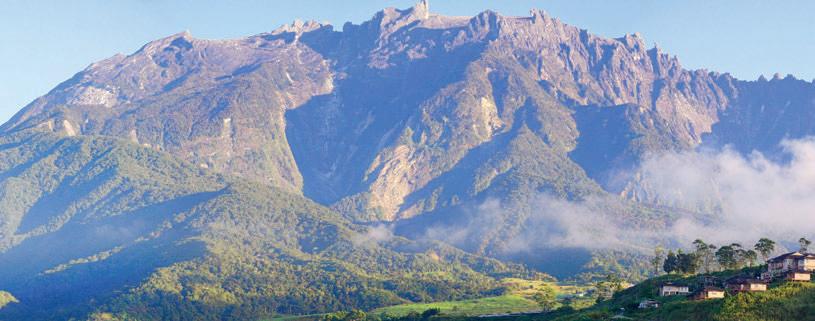



Nibong Tebal, the southernmost town in Province Wellesley, shares a border with the town of Parit Buntar in northern Perak.
With many companies setting up at Batu Kawan and the surrounding areas, new residential areas have also mushroomed in Nibong Tebal. The northsouth railway track passes through the town and intersects with the new inbound road leading to Nibong Tebal.
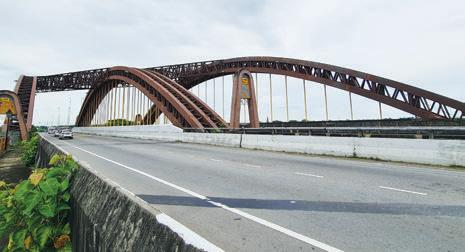
The intersection is not perpendicular and because of this, a unique iron arched bridge has been constructed over the underpass railway track. It is a four-arched of single span design to support the two-lane road in both directions The arches are not identical in size and are fitted in tapered shape to support the suspension cables. The bridge total length is 84m, cable length 14m and cable quantity 92.

The project owner is JKR and the hired contractor is BBR Construction Systems (M). The bridge has become a unique structure of the town and a photographer has dubbed it as the Flyover of Nibong Tebal.


To all Members,
Date: 22 September 2024
LIST OF CANDIDATES ELIGIBLE TO SIT FOR THE PROFESSIONAL INTERVIEW FOR THE YEAR 2024
The following is a list of candidates who are eligible to sit for the Professional Interview for the year 2024.
According to the IEM Bylaws, Section 3.8, the names listed below are published as eligible candidates to become Insitution Members, provided that they pass the Professional Interview in 2024.
If there are any Corporate Members who have objections against any candidate deemed unsuitable to sit for the Professional Interview, a letter of objection can be submitted to the Honorary Secretary, IEM. A letter of objection must be submitted within one month from the date of publication.
Ir. Prof. Dr Tan Chee Fai IEM Honorary Secretary
NAME QUALIFICATION
ELECTRICAL ENGINEERING
SITI NORLINA BT RAMLAN BE HONS (UTM) (ELECTRICAL, 2015)
NIK HAKIMI BIN NIK ALI BE HONS (UNITEN) (ELECTRICAL POWER ENGINEERING, 2013) PhD (SOUTHAMPTON) (2017)
ELECTRONIC ENGINEERING
ASHWIN NANDRAJOG A/L SURAJ PRAKASH BE HONS (LANCASHIRE) (ELECTRONICS, 1999)
SYAHRUNIZAM BIN BUYAMIN BE HONS (UTM) (ELECTRICAL, 2004) ME HONS (UPM) (ENGINEERING), 2012)
ELYDA BINTI MANGSOR BE HONS (UNITEN) (ELECTRICAL & ELECTRONIC, 2019)
MECHANICAL ENGINEERING
MOHD AKMAL BIN ABU HASSAN BE HONS (LIVERPOOL) (MECHANICAL, 1997) ME HONS (UTM) (ENGINEERING), 2012)
APPLICATION FOR CORPORATE MEMBER
NAME QUALIFICATION
CIVIL ENGINEERING
LEE YEE SENG BE HONS (NUS) (CIVIL, 2004) MSc HONS (NUS) (CIVIL), 2007)
SOM PONG A/L PICHAN BE HONS (USM) (CIVIL, 2000) MSc HONS (TRINITY COLLEGE) (GEOTECHNICAL, 2012)
WEE AIK KHIANG BE HONS (CHISHOLM) (CIVIL & COMPUTING, 1988)
PUTRI EDAYANA BINTI ENDUT BE HONS (UMP) (CIVIL, 2009)
MEMBER TRANSFER
MEMBERS NO. NAME QUALIFICATION
CIVIL ENGINEERING
72183 ANWARUL ADZIZI BIN ADENI BE HONS (USM) (CIVIL, 2004) M. (UNIMAS) (INFORMATION TECHNOLOGY, 2022)
72906 MOHD HAZIQ BIN MOHD ABD WAHAB BE HONS (UITM) (CIVIL, 2011) ME HONS (UM) (SAFETY, HEALTH & ENVIRONMENT, 2015)
24367 LEE SIONG WEE BE HONS (UTM) (CIVIL, 2003) ME HONS (UTM) (CIVIL & STRUCTURE, 2005)
22591 TAN WEI CHING BE HONS (USM) (CIVIL, 2000)
55057 TAN SOCK FUNG BE HONS (UTHM) (CIVIL, 2016)
101824 NUR AQILAH BINTI MOHD NAZARUDIN BE HONS (UNITEN) (CIVIL, 2020)
59916 VEERAN PALRAJU BE HONS (UNITEN) (CIVIL, 2011)
30143 JEGATHISH A/L KANADASAN BE HONS (UNITEN) (CIVIL, 2011) PhD (UM) (2016)
ELECTRICAL ENGINEERING
111845 MUHAMMAD AZRI BIN JOSRI BE HONS (UNIMAP) (POWER SYSTEM ELECTRICAL ENGINEERING, 2017)
41473 YUGESWARY A/P THURAISAMY BE (UNITEN) (ELECTRICAL POWER ENGINEERING, 2013) ME HONS (UTM) (ELECTRICAL POWER ENGINEERING, 2018)
MECHANICAL ENGINEERING
86575 CHONG KONG HAU BE HONS (MMU) (MECHANICAL, 2008)
116470 MOHD TARMIDZIY BIN ISHAIK BE HONS (UTM) (MECHANICAL, 2002)
72726 TEH KAI LIANG ME HONS (BIRMINGHAM) (MECHANICAL, 2012)
58916 PRATHABRAO A/L MUNIANDY BE HONS (UTHM) (MECHANICAL, 2016) ME HONS (BIRMINGHAM) (MECHANICAL, 2018)
BINTI
RIZAL FIRDAUS BIN
MOHAMMAD NASHRIF BIN
NOORDIN
(UTP) (CIVIL,
(UNISEL) (CIVIL, 2015)
(UITM) (WATER RESOURCES
HONS (UITM) (CIVIL, 2009) MSc HONS (IMPERIAL) (SOIL MECHANICS, 2012)
Institusi mengucapkan terima kasih kepada semua yang telah memberikan sumbangan kepada tabung Bangunan Wisma IEM. Ahli-ahli IEM dan pembaca yang ingin memberikan sumbangan boleh berbuat demikian dengan memuat turun borang di laman web IEM http://myiem.org.my atau menghubungi secretariat di +603-7890 0130 / 136 untuk maklumat lanjut. Senarai penyumbang untuk bulan Ogos 2024 adalah seperti jadual di bawah:
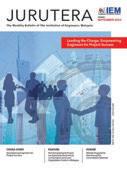



















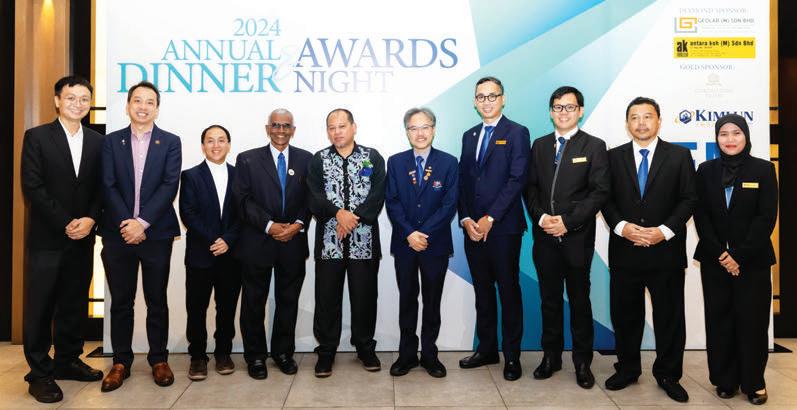
On August 24, 2024, the IEM Southern Branch (SB) hosted its 53rd Annual Dinner & Awards Night at Restaurant Pekin Daiman 18 in Johor Bahru. The event united engineering professionals, industry leaders and distinguished guests to celebrate excellence, innovation and the spirit of camaraderie within the engineering community.
The evening began with a warm welcome from Ir. David Puen Ming Shen, Chairman of IEM SB, who thanked the guest-of-honour, Ir. Azren Khalil, who was representing the Menteri Besar of Johor, for his presence and welcomed guests from the public and private sectors, including delegates from the Institution of Engineers Singapore and Persatuan Insinyur Indonesia. Their presence underscored the importance of the event in promoting collaborations within the Singapore-Johor-Riau (SIJORI) regions.
Ir. Puen highlighted the crucial role that engineers played in driving sustainable development and economic growth. He said the event theme, SUS Engineering: Sustainable, Upcycling, Sufficient, was a call to embrace sustainability, unlock the potential of upcycling and ensure sufficiency for future generations.
In his keynote address, IEM President Ir. Prof. Dr Jeffrey Chiang Choong Luin underscored the importance of sustainability in engineering. He praised IEM SB for its efforts to build a robust engineering community in the southern part of the peninsula and discussed ongoing initiatives to empower IEM branches, particularly in enhancing IT infrastructure and expanding virtual programmes. He highlighted the significance of Environmental, Social & Governance (ESG) principles, encouraging members to integrate these into their work. The IEM Guideline on ESG in the Built Environment was also mentioned as a key resource for engineers.
Ir. Azren Khalil, who was also Director of the Johor State Irrigation & Drainage Department, delivered the Menteri Besar’s speech, acknowledging the engineers’ contributions to the state infrastructure development and economic progress and recognising the role of IEM SB in fostering innovation and excellence. He said Johor was committed to green initiatives and resilient infrastructure development and urged IEM members to support these initiatives.

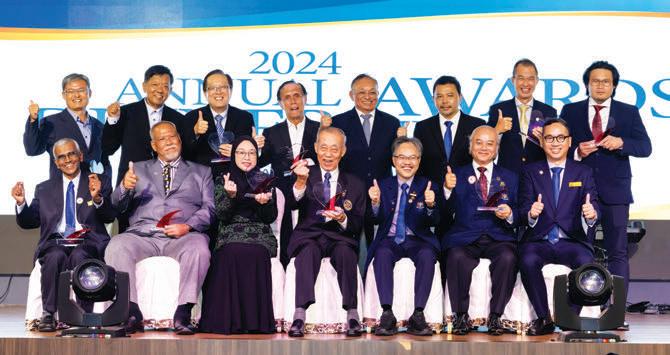
Recipients of the Heart of Community Awards 2024
The evening continued with the presentation of Academic & Merit Awards to the following:
• Academic Award: Muhammad Adam Mohd Adib
• Merit Award: Intan Falisha Nasrudin
• Merit Award: Kimberly Wong Yun Jie
• Merit Award: Phang Zheng Qian Past Chairman Ir. Teo Kiyuee also presented the Heart of Community Award to the IEM SB Ad-Hoc Committee on Dengue Control. He expressed pride in the committee’s efforts, especially their collaboration with the JB Rotary Club and the creation of a comprehensive guideline on dengue prevention and control. The recipients included:
• Chairman of the IEM Task Force on Guidelines on Prevention & Control of Dengue: Y.Bhg. Dato’ Ir. Lim Chow Hock
• Chairman: PDG Ir. John Cheah Kam Loong P.I.S
• Advisor: Ir. Assoc. Prof. Dr Hayati Abdullah
• Advisor: Ir. Thayala Rajah C. Selvaduray P.I.S
• Deputy Chairman: Ir. Teo Boon Keng
• Vice Chairman: PP Y.Bhg. Dato’ Ir. Mohd Noh Haji Ibrahim
• Secretary: Ir. Derek Cheah Kong Yew
• Committee Member: Ir. Bryan Soh Chong Boon
• Committee Member: Ir. Goh Kae Wan
• Committee Member: Ir. Lim Chee Seng
• Committee Member: Ir. Tony Tan Boon Tong Sponsor Awards were then presented to those who had supported IEM SB as well as shown their commitment to engineering excellence and support for the local engineering community.
• Diamond Sponsor: Geolab (M) Sdn. Bhd.
• Diamond Sponsor: Antara Koh (M) Sdn. Bhd.
• Gold Sponsor: Coronade Properties Sdn. Bhd.
• Gold Sponsor: Kimlun Sdn. Bhd. Everyone enjoyed vibrant entertainment throughout the evening, including performances by the UTM Diabolo Club and Gfadz Buskers. A lucky draw with prizes ranging from household appliances to a 55-inch Smart TV added to the excitement.
IEM SB expressed its gratitude to the Annual Dinner Organising Committee, led by Ir. Jason Lim Wuh Terng, the sponsors and the attendees. The event was a celebration of past achievements and a testament to the enduring spirit of innovation and excellence in the engineering profession. It served as a platform for networking, idea exchanging and inspiration.
https://apakhabartv.com/2024/08/29/engineers-remain-relevant-in-aprogressive-modern-world/
Prepared by:

Ir. So Wee Siang
The flagship ENGINEER 2024 Convention, held on 18-21 September 2024 and organised by the Institution of Engineers, Malaysia (IEM) in collaboration with C.I.S, was a pivotal moment for the local engineering landscape. Showcasing the latest in mechanical & electrical (M&E), civil & structural (C&S) and airconditioning, mechanical ventilation & refrigeration (ACMV&R) engineering technologies, this annual event served as a nexus for industry professionals, leading manufacturers and suppliers, government delegations, trade associations, business chambers, international investors and academicians from across the globe.
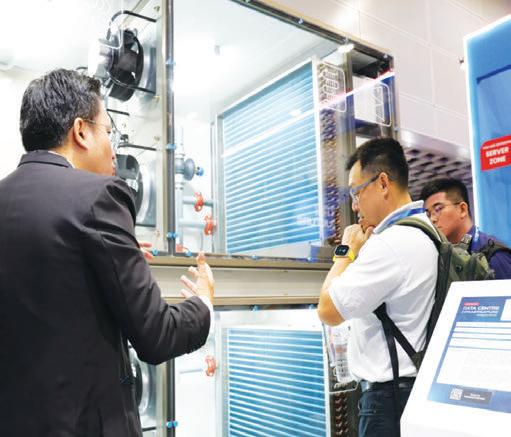
Malaysia is rapidly positioning itself as an Asian Digital Tiger, with aspirations of becoming a global hub for data centres. With this in mind, ENGINEER 2024 offered an exceptional opportunity to witness the future of data centre management and live cleanroom infrastructure firsthand. It was more than just a platform for networking and collaboration; it also represented the cutting edge of data centre solutions and hosted 19 leading expert solution providers from around the world.
The live showcase at ENGINEER 2024 focused on worldclass data centre infrastructure, featuring advanced solutions that directly addressed the challenges faced by modern data centre operators. From efficiency to sustainability, the innovations on display were designed to optimise performance while enhancing reliability – an essential goal for an industry that underpinned nearly every digital interaction today.
Data centres are notorious for their high energy consumption and cooling is a key area where improvements can make a significant impact. The event presented state-of-the-art cooling solutions that maintained optimal operating conditions which were crucial not just for performance but also for sustainability. By keeping temperatures in check, these systems help data centres minimise energy consumption, an increasingly important consideration in today’s world of rising energy costs and sustainability concerns.
Another focal point was the advanced data centre containment system. This technology ensures the separation of cold supply airflow from the hot exhaust air generated by information technology (IT) equipment. By preventing the mixing of these two air streams, operators can maintain more precise temperature control, leading to enhanced energy efficiency and cost savings.

The showcase also highlighted critical power management solutions. The uninterruptible power supply (UPS) system featured ensured that data centres maintained uptime and continued functioning even during power outages. This is essential for modern data centres, where even a few minutes of downtime can have significant financial and operational consequences.
Further, a raised-floor system with effective bonding and earthing ensures both safety and operational efficiency, while active and passive fire-fighting systems offer top-notch protection for data centres. These systems are designed to respond quickly and effectively to any fire hazard, safeguarding valuable equipment and minimising potential damage.


ENGINEER 2024 also showcased live demonstrations of cleanroom infrastructure, an essential component in industries ranging from semiconductors to pharmaceuticals. These highly controlled environments are designed to maintain strict levels of cleanliness, ensuring that even the smallest particles do not compromise the manufacturing process.
Cleanroom technology has evolved significantly in recent years, with more sophisticated air filtration systems and automation tools being introduced to maintain the high standards required in these environments. The live cleanroom demonstrations at ENGINEER 2024 provided attendees with a rare glimpse into how these systems worked in real-time.
As Malaysia continues its journey towards becoming a global data centre hub, these innovations will play a crucial role in shaping the future of the industry. From advanced cooling systems to cutting-edge containment technologies, the solutions on display at ENGINEER 2024 represented the next frontier in data centre management.
The event was not just about showcasing technology but also about fostering collaboration between industry leaders, government delegations and academia. By bringing together a diverse range of stakeholders, ENGINEER 2024 aimed to drive dynamic change and innovation in Malaysia’s engineering landscape, ensuring the country would remain at the forefront of technological advancement.
In conclusion, ENGINEER 2024 offered a unique opportunity for professionals to gain exclusive insights into the future of data centre and cleanroom infrastructure. As Malaysia cements its position as a key player in the global data centre market, events like these are critical in driving the industry forward, ensuring a sustainable and innovative future for all.

Prepared by: Ir. Alex Looi Tink Huey
HQ
CHEMICAL
Ir. ABDUL RAZAK BIN YAKOB
Ir. ANG CHOON HUG
Ir. CHOO CHEE MING
Ir. DR. LEE TIN SIN
Ir. FARIDAH BINTI SABAN
Ir. JUARES RIZAL BIN ABD HAMID
Ir. KIM KEK SEONG
Ir. MOHD. NOR BIN ABD. BASAR
Ir. PROF. DR. CHOONG SHEAN YAW, THOMAS
Ir. PROF. DR. FOO CHWAN YEE, DOMINIC
Ir. PROF. DR. LAW CHUNG LIM
Ir. RAZMAHWATA BIN MOHAMAD RAZALLI
Ir. THAMIM ANSER BIN HABIBULLAH KHAN
Ir. THAYANANTHAN BALAKRISHNAN
Ir. VONG CHWEE CHIN
Ir. WONG KUEK KEONG
Ir. ZAKI BIN ZAINUDIN
CIVIL
DATIN Ir. PROF. DR. HAJJAH ZAINAB BT. MOHD
DATIN Ir. SHARIFAH AZLINA BT. RAJA KAMAL PASMAH
DATO' Ir. AHMAD FUAD BIN AMBI
DATO' Ir. CHIA SONG KEE
DATO' Ir. DR.AHMAD ANUAR BIN OTHMAN
DATO' Ir. MOHD ISA BIN SARMAN
DATUK Ir. ROZLAN BIN AHMAD ZAINUDDIN
DATUK Ir. SAMSUDDIN BIN ISMAIL
Ir. ABD. ISHAM BIN ABD KARIM
Ir. ABDUL AZIZ BIN ABAS
Ir. ABDUL GHAFFAR BIN ABDUL RAHMAN
Ir. ABDUL GHANI BIN SHAABAN
Ir. AHMAD RAMLAN BIN ABDUL TALIB
Ir. ARUL RAJ A/L SELVARAJ
Ir. AZHAR BIN JAILANI
Ir. BASIR BIN NOORDIN
Ir. CHAN SWEE HUAT
Ir. CHAU PEK SHAN
Ir. CHEN HARN SHEAN
Ir. CHEN KENG FAI
Ir. CHEN KIM KIEONG
Ir. CHEW CHING CHONG
Ir. CHONG CHEE MENG
Ir. DR. LEE YUN FOOK
Ir. DR. MOHAMMED ALIAS BIN YUSOF
Ir. DR. NG SOON CHING
Ir. DR. NORAZMAN BIN MOHAMAD NOR
Ir. DR. OOI HEONG BENG
Ir. DR. SITI HAWA BT HAMZAH
Ir. DR. TEE HORNG HEAN
Ir. GAN KOK SEONG
Ir. GHAZALI BIN ABD AZIZ
Ir. GUNASAGARAN A/L KRISTNAN
Ir. HEONG SIEW LIM
Ir. HOO CHOON SEAN
Ir. JAGJEET SINGH SIDHU A/L CHARAN SINGH
Ir. KASSIM BIN HAJI OMAR
Ir. LEE SOO SIN
Ir. LEE SWEE YONG
Ir. LEON WENG SENG
Ir. LEONG KING HO
Ir. LOOI KOON CHEW
Ir. LOW TIAN HUAT
Ir. MANOGARAN S/O K.RAMAN
Ir. MANSOR BIN AB.SHUKOR
Ir. MATHEW PHILIP A/L V.C PHILIP
Ir. MD. JAMIL BIN ISHAK
Ir. MD. ROZI BIN SHAARI
Ir. MEGAT ZAHARI BIN MEGAT JAAFAR
Ir. MOHD AZREEN BIN SAIDIN
Ir. MOHD JAMIL BIN ALI
Ir. MOHD RIZA BIN MOHD YUSOFF
Ir. NAZEMI BIN ABDUL MAJID
Ir. NG SAY CHONG
Ir. NG SHIU YUEN
Ir. PAN CHEE CHIN
Ir. PROF. DR. CHIANG CHOONG LUIN
Ir. PROF. DR. RAIZAL SAIFULNAZ BIN MUHAMMAD RASHID
Ir. RABINDRANATH S VETHAKKAN
Ir. RAFTAH BINTI MAHFAR
Ir. ROSLI BIN ABU BAKAR
Ir. SAW HOW TEONG
Ir. SHAHIDAN BIN SADIMAN
Ir. SIEW YAW JEN
Ir. SIOW YUN TONG
Ir. SULAIMAN BIN HASIM
Ir. SUNDRARAJAN A/L L/ KRISHNAN
Ir. TAN CHUEN JIN
Ir. TAN KOK LEONG
Ir. TAN PENG HUAT
Ir. TAN YEAN GUAN
Ir. TEO FANG YENN
Ir. TIONG CHOONG HAN
Ir. TOONG YEE MIN
Ir. TU YONG ENG
Ir. WAN NORBADI BIN WAN NIK
Ir. WAN YOW CHOY
Ir. WANG HONG KOK
Ir. WANG KWEE KIAT
Ir. WONG CHIANG HENG
Ir. WOO SOO WEI
ELECTRICAL AND ELECTRONIC
DATIN Ir. JULINA BT. ABDUL RAHMAN
DATO' Ir. PROF.DR.NORLIDA BT. BUNIYAMIN
DATUK Ir. AZLAN ROBERT BIN ABDULLAH
Ir. ABDUL GHAFFUR BIN RAMLI
Ir. ABDUL KADIR BIN MOHD. RAIS
Ir. ABDUL WAHID BIN PAIJO
Ir. ABU FATAH SANUSI BIN MOHD. AMBIA
Ir. AHMAD MADZLAN BIN HAJI ZAHARI
Ir. AKMAL RAHIMI BIN ABU SAMAH
Ir. AMMAR BIN ALAMSHAH
Ir. CHAN CHEE WAH
Ir. CHEAH LONG
Ir. CHONG CHEW FAN
Ir. CHONG SWEE CHOON
Ir. DR. A. RAZAK BIN YAACOB
Ir. DR. AHMAD FADZIL BIN ISMAIL @ IBRAHIM
Ir. DR. MUHAMAD FUAD BIN ABDULLAH
Ir. DR. SHAHRUDDIN BIN MUSLIMIN
Ir. GAN TIAN ENG
Ir. HISHAM BIN MUSTAFFA
Ir. ISMAIL BIN HARON
Ir. JEEWA S/O VENGADASALAM
Ir. KAMARUDIN BIN NORDIN
Ir. KOW CHOONG LING, GEOFFREY
Ir. LEE AH NAM
Ir. LEE CHENG PAY
Ir. LEE TECK HENG
Ir. LEONG KIN YUE
Ir. LIEW CHIA PAO
Ir. LIEW SWEE KONG
Ir. LIM MING WAI
Ir. MALEK PISOL BIN MD. SAAD
Ir. MANOHARAN PREM KUMAR A/L ARUNASALAM
Ir. MICHAEL CHAN
Ir. MOHAMAD HANAFI BIN RAMLI
Ir. MOHAMAD NOR BIN ABU BAKAR
Ir. MOHAMAD NORSHAHRANI BIN ABDUL RAHIM
Ir. MOHD AZHA BIN ABU SAMAH
Ir. MOHD FAIRUZ BIN ABDUL HAMID
Ir. MOHD JAHINI BIN HAJI MOHD DOM
Ir. MOHD NASIR BIN AHMAD
Ir. MOHD SYAZWAN BIN OTHMAN
Ir. MOHD. ARIS BIN BERNAWI
Ir. MOHD. JAAFFAR BIN MOHD. DAUD
Ir. MOHD. YAAKOB BIN ZAKARIA
Ir. NG BOON KIN
Ir. NG SENG KHIANG
Ir. NG WIN SIAU
Ir. NG YOKE KIM
Ir. NIK HAMID @ NIK RAHIMI BIN NIK MANSOR
Ir. OOI CHEE WEE
Ir. QUAH EWE HOCK
Ir. ROBERT NG
Ir. S.ROSLAN BIN RAZALI
Ir. SHAHRIZAMAN BIN ZAMHURY
Ir. TAN CHOW HEANG
Ir. VINESH A/L THIRUCHELVAM
Ir. WONG CHIN WENG, ROGER
Ir. WONG CHOONG YEE
Ir. WONG HIN YONG
Ir. WONG JUAN HOE
Ir. YAU CHAU FONG
Ir. YEOH ENG CHIN
Ir. ZAINI BIN CHE AWANG
Ir. ZULKEFLEE BIN KHALIDIN
Ir. ZULKEFLI BIN YAACOB
MECHANICAL
DATO' Ir. AHMAD MURAD BIN OMAR
DATO' Ir. FOONG CHOY CHYE
DATUK Ir. MD YUSOF BIN ISMAIL
Ir. ABD RAZAK BIN ABU HURAIRAH
Ir. ABDUL MUNIR BIN ABDUL KARIM
Ir. ABDUL NASSER BIN ABDUL WAHAB
Ir. ABU HANIFAH BIN HAJI ABDULLAH
Ir. AHMAD RAFIDI BIN MOHAYIDDIN
Ir. AL-KHAIRI BIN MOHD DAUD
Ir. AMIR BIN HJ. YAHYA
Ir. AMIR HISHAM BIN ABD. RAHIM
Ir. AMIRUL BIN ABD RASHID
Ir. ARUL HISHAM BIN ABDUL RAHIM
Ir. CHENG YEW LEONG
Ir. CHONG CHIEN FATT
Ir. DR. CHEONG THIAM FOOK
Ir. DR. JAYASEELAN NADARAJAH
Ir. DR. SAIFUL AMRI BIN MAZLAN
Ir. DZULAIDIN TASRIN BIN OTHMAN
Ir. FAM YEW HIN
Ir. KANNAN A/L M. MUNISAMY
Ir. KWAN CHING DAO, MICHAEL
Ir. LAI CHEE KUAN
Ir. LEE CHANG QUAN
Ir. LOW HAN GUAN, DEN
Ir. LUK CHAU BENG
Ir. MD. HISMA BIN HASHIM
Ir. MOHAMAD BIN OTHMAN
Ir. MOHAMAD HAMZI BIN MOHAMAD
Ir. MOHD SURADI IMAM @ HJ. MOHD YASIN
Ir. MOHD YUZA BIN HJ. MOHD. YUSOF
Ir. MUSTAFFA BIN TEK
Ir. NG YONG KONG
Ir. ONG HOO TEONG
Ir. PHANG CHEN FAUT
Ir. PROF. DR. KANESAN A/L MUTHUSAMY
Ir. PROF. DR. MD YUSOF BIN ISMAIL
Ir. PROF. DR. TAN CHEE FAI
Ir. SOONG PENG SOON
Ir. TAJUL ZAHARI BIN ABU BAKAR
Ir. TAN CHIOO BIN
Ir. TEH PIAW NGI
Ir. THIRUMALAICHELVAM S/O SUBRAMANIAM
BRANCHES
KEDAH/PERLIS
Ir. ABDULLAH BIN OTHMAN
Ir. AZLAN BIN OTHMAN
Ir. JAMALUDDIN BIN ABDULLAH
Ir. MOHAMMAD HAZMIN BIN NOOR MAHADI
Ir. MUHAMMAD ARKAM BIN CHE MUNAAIM
Ir. SHAHROM BIN MAN
Ir. SHAHRUL HISHAM BIN SAMSUDIN
Ir. TAOFIG BIN SAMAT
KELANTAN
Ir. ABRIZAN BIN ABDUL KADIR
Ir. AHMAD ZAWAWI BIN MOHAMED
Ir. AWANG @ ABDUL HALIM BIN TAIB
Ir. MOHD ZAIM BIN ABD. HAMID
Ir. MOHD. NOR BIN MUDA
Ir. NOOR ZAIDI BIN ABDULLAH
Ir. ROSLIM BIN CHE IBRAHIM @ IBRAHIM
Ir. SHAIPUDDIN BIN SHAPII
Ir. WAN MOHD KAMIL BIN WAN IBRAHIM
Ir. ZAIDI BIN IBRAHIM
MELAKA
Ir. DR. PUVANASVARAN A/L A. PERUMAL
Ir. LAM AH HANG
Ir. NG HSIN LOON
Ir. OOI KAH HUAT
MIRI
Ir. CHIN HUI SENG
Ir. DR. JONG NYON TCHAN, EDWIN
NEGERI SEMBILAN
Ir. ABDUL RAHIM BIN SIDEK
Ir. AZHARUDIN BIN MUKHTARUDDIN
Ir. CHONG CHEE YEN
Ir. DR. ABU BAKAR BIN MAHAT
Ir. DR. HAFIZI BIN ZAKARIA
Ir. DR. OH SEONG POR
Ir. KANNA DASAN NARAYANASAMY
Ir. KHOO NEE KEONG
Ir. LEONG CHENG THIM
Ir. LOO SENG PONG
Ir. MOHD AZLAN BIN OTHMAN
Ir. PREM RAKESH A/L SUBRAMANIAM
Ir. SHAHRIN AMRI BIN JAHARI
Ir. TAN SEONG LIM
Ir. TEH WEE TECK
Ir. TIONG NGO PU
Ir. WONG KIN SIAK
PAHANG
Ir. AB RAHMAN BIN HASHIM
Ir. HAZILAWATI BINTI ABDUL AZIZ
Ir. HAZRI DAHALAN BIN MD RAZIP
Ir. MOHD. RASHIDI BIN MAAROF
PENANG
Ir. CHAN WAH CHEONG
Ir. DR. LIM KEE WENG, BERNARD
Ir. DR. MUI KAI YIN
Ir. GOH TEIK CHEONG
Ir. KHOO KAH LING
Ir. KHOR JEEN GHEE
Ir. KHOR SWEK LIEH, DELVAN
Ir. LEONG TEONG ENG
Ir. NG CHONG SIT
Ir. NG JOK CHENG
Ir. NG SIN CHIE
Ir. OOI BOON BOW
Ir. OOI SUYI
Ir. PHOR CHI WEI
Ir. SAW KEAN THAI
Ir. TAN BAK PING
Ir. TAN PENG LEAK
Ir. THONG CHEONG TAI
Ir. WONG TIAN SENG
Ir. YAU ANN NIAN
PERAK
Ir. CHAN SEONG PHUN
Ir. DR. MD. AZLIN BIN MD. SAID
Ir. GAN CHEE KUAN
Ir. LEOW SAM NYIN
Ir. LIM LEE THON
Ir. LOH BAK KIM @ YEAP BAK KIM
Ir. MEGAT AHMAD FAUZI BIN MEGAT RASIDIN
Ir. MEGAT SHARIFFUDIN BIN IBRAHIM
Ir. MOHAMAD ZUBIR BIN MOHAMAD RADUAN
Ir. MOHD NASHARUDDIN BIN HASHIM
Ir. MOHD.FARIS BIN ABDULLAH
Ir. NEOH KIM CHUAN
Ir. SUHAINI BINTI AHMAD
Ir. TAN ENG TONG
Ir. TANG SOO HA
Ir. TOH LEONG SOON
Ir. YEONG CHIN CHOW
SABAH
Ir. ANDREW SAMUEL RAVINDRAN AMALADOSS
Ir. CHIA PI TET, PETER
Ir. CHIN TET FU @ WILLY
Ir. CHOW WAI MING
Ir. FOO MING CHIU
Ir. FUNG KIAN FUI, HENRY
Ir. GOH SAY KEONG
Ir. HAROLD MUDI
Ir. HENG AIK SIN
Ir. KOO YUK LIONG
Ir. LO CHAU THAI @ KENNY LO
Ir. PAN KET CHEONG
Ir. PANG NAM FONG
Ir. SALIS @ SULIS AK AMBUD
Ir. TAN KOH YON @ TANG KOK YON
Ir. TSEN YING FUI
Ir. WONG CHING HWA
Ir. YAPP YUK TSHIN, CYRIL
Ir. YONG WUI CHUNG
Ir. YUZRIAN EFREN YUNUS
SARAWAK
Ir. ABANG MARANI BIN ABANG BUSUT
Ir. BONG CHONG SAR
Ir. CHIN HON SIN
Ir. CHONG YIN SHIK, BERNARD
Ir. FOONG AH LADD, HENRY
Ir. HAIDEL HELI
Ir. HII TECK MIEW, MICHAEL
Ir. IMELDA ANAK JELANI
Ir. IRWAN BIN PODIN
Ir. JANANG AK BUNGSU
Ir. JOHN PANIL
Ir. KASSIM JERITAN
Ir. LAU ING HUO
Ir. SIM HUI KHENG
Ir. SUH CHING HIENG
Ir. TAN JOO KOK
Ir. TANG SU FAN
Ir. THIAN BOON KHUIN, KENNY
Ir. WANG SAY KWANG
Ir. WONG SEH LENG
Ir. YONG YING POH
Ir. ZAWAWI BIN EMBONG
SOUTHERN
Ir. DR. ABDULLAH ASUHAIMI BIN MOHD. ZIN
Ir. DR. AMRAN BIN AYOB
Ir. HAYATI BINTI ABDULLAH
Ir. JURAIMI BIN MASOOD
Ir. KAMARUDIN BIN MAHMOOD
Ir. KHAIRUL ANNUAR BIN SULAIMAN
Ir. KOH THONG HOW
Ir. LEE MENG CHIAT
Ir. MOHD SALEHUDDIN BIN ABDUL HAMID
Ir. MOHD. SAIFUDDIN BIN SALEHUDDIN
Ir. NG CHOK CHUANG
Ir. PROF. MOHAMAD AFIFI BIN ABDUL MUKTI
Ir. QUEK SWEE JIN
Ir. SHAARI BIN ABDUL HAMID
Ir. SHARUL KAMAL BIN ABDUL RAHIM
Ir. TAN YU PENG
Ir. TEH SEA CHUAN
Ir. TEO KIYUEE
Ir. THAYALA RAJAH S/O C. SELVADURAY
Ir. WONG YEE FOONG
Ir. ZAINUDDIN BIN MD. GHAZALI
TERENGGANU
Ir. ABDULLAH ZAWAWI BIN HAJI MOHD. NOOR
Ir. AHMAD NAZARI BIN ASHARI
Ir. MAZLAN BIN CHE KU AHMAD
Ir. WAN MOHD HAZAIRIN BIN WAN DAUD
Ir. ZAKARIA BIN ABDULLAH
CONTINUATION FROM SEPTEMBER 2024 ISSUE
ADMISSION TO THE GRADE OF STUDENT MEMBER
No. Ahli Nama
KEJURUTERAAN KIMIA
122957 NURUL KHAMISYAH BINTI MOHD IHSAN
Universiti
UNI
122858 WAN JOE YEAP
123315 YEO TZE XIN
122354 ANGEL ONG
122942 KANG HUI KEE
122934 LIM GEEN YUE
SEGi
122732 NUR ALISYA IDZLIN BINTI RASID UiTM PENANG
123369 THEN YIH HIEN UNIMAS
122765 VANECEY JAKELEI UNIMAS
122997 ZAINUR ZAKIY BIN HASLI
123008 GHASSAN OBAID ABDULLAH AL-FAKIH UTM
123499 GOH KAH ZHENG
122730 KHOO BOO XIAN
122731 SAW ZHENG EE
123316 MUHAMMAD HANIS BIN ROSLI
122729 POH YAN XIANG
123390 ANIS FASIHAH BINTI ISMAIL
123469 JANIFER ANNE A/P A.ALOUSIS
KEJURUTERAAN AWAM 123495 CHOW JIA EN
123484 CLARICE KAM YI TING
123501 ELDEN EMMANUEL TOJUKA
123478 KRISTINE EVE BENJAMIN USM 122937 LAU LIK YAN
LEE SHU SHENG
122938 LIEW SHU TING
CHENG KUNG UNI
122906 MUHAMMAD FAIQ LEE YAN BIN MOHD SHAFIQ LEE SWINBURNE SARAWAK
123474 MUHAMMAD HAZIM BIN MOHD ROSLI USM
123496 MUHAMMAD NOR HAZIM BIN ROSLI USM
123488 NORSYAMIL AQQILAH BINTI MOHD RAHIM USM
123476 NURUL AIN BALQIS BINTI AHMAD SYAHRUL ANAS USM
123490 RACHEL ANAK GON USM
123480 SARAH NUR ALYSSA BINTI MOHD NASIR USM
122880 SEAN TAN YI SHUEN SWINBURNE SARAWAK
123494 WAN NORAKMAL BINTI W MOHD ZUKI USM
123409 AGMA ELEANOR BINTI MARK UNIMAS
123333 AISYA AFFIQA BINTI ABDUL RAZAK UNIMAS
123497 AISYAH BINTI ABU HASSAN USM
123324 ANDREAS CLAY JIMEL UNIMAS
123423 ANDRIAS NAWEL UNIMAS
122978 ATHANASEUS ANAK BILL UNIMAS
122993 AUDREY ANAK NIOR UNIMAS
122897 CHARIS CHUNG KAR WEUY SWINBURNE SARAWAK
122967 CHARLESTON LEO ANAK UNCHAT UNIMAS
122894 CLARIE TAN ROU WEN SWINBURNE SARAWAK
123419 DARRIEN GIMBANG BIN WILSON UNIMAS
123502 DEON TAN HONG WEI USM
122991 EDMUND TAY CHUN LIANG UNIMAS
123479 ELEVIA NABAU USM
122968 EOWYN EUMMAH ANAK STEVER UNIMAS
122956 JONG ZI WEI UNIMAS
123430 KORDINEIL REZOD USM
122982 MAXWELL ANAK ALIAS UNIMAS
123491 MOHAMAD SYAHMI BIN ABDUL KHARIS USM
123686 MOHD KHAIRUL NIZAM BIN NAIM UTS
122941 NG JING JIAN UM
122994 NOEL BEJAM ANAK BIAT
123498 NUR AINA NADHIRAH BINTI JEMBERIS USM
123397 NUR ALIYAH AFIFAH BINTI MOHD HANIZ UNIMAS
123487 NUR ATHINA BINTI ROSMAN USM
123475 NUR FARAHIN ADILAH BT FAURODIN USM 123489 NUR SYAHIRAH ZULAIKHA BINTI SAAD USM 123410 NURNISRINA NIDA BINTI ROSLAN UNIMAS 123391
WILFRED UNIMAS
123503 GANESH A/L J. KRISHNAN USM 123723 GARY FERNANDEZ ANAK MATHEW UTS
122745 GOVINDAN SANKAR UTAR SG LONG
122924 JOAN FUM
KULAN ANAK TERY UTS
121830 MOHAMAD SYAZWAN AFIQ BIN JOHAR UiTM SA
121805 MUHAMMAD SYAUQI BIN SUWARTA UiTM SA
123702 NUR ATIQAH BINTI
UTS
122958 WENDELL THOMSON ANAK KUDANG UNIMAS
122872 ZACHARY SONDOH SWINBURNE SARAWAK
122980 ABDUL RAHMAN BIN PAIJOL UNIMAS
122986 ADRY ISAAC ANAK GUNTOR UNIMAS
122747 AHMAD FAISAL AMIR BIN ZAMRI UiTM SA
AKMA QISTINA BT KAHIRULAZUWAR UTHM PAGOH
ALICIA CHARLES BARKER HERIOT WATT MSIA
123433 ALWANI BINTI BASNI UNIMAS
123424 BETTY ANAK BONIFACE SINKA UNIMAS
123699 CLAYTON ISEK ANAK TONY UTS
122974 DAYANGKU NUR AIN NAZIRA BINTI AWANGKU MANSOR UNIMAS
123693 EUGENE LANGGANG JAU UTS
123704 FRANCIS JAU LA’ENG UTS
123429 GARRICK KAN ZHI FOONG UNIMAS
122959 LYDIA LUNCHA ANAK GRUNTANG UNIMAS
123379 MESLINE ANAK DINGAH UNIMAS
122935 MOHAMAD IRFAN AQMAR BIN MOHD ZAKI UTM
122965 MUHAMMAD SYAIFUL ABIDIN BIN YAHYA UNIMAS
122953 NEIL IVAN ANAK MAMBAI UNIMAS
122771 NIK MUHD HAFIZ AMRI BIN NIK ROSLI UiTM SA
122740 NOOR SYAHIRAH BINTI KHIYON UIAM
122962 NOR FARAH WAHIDA BINTI MOHAMAD UNIMAS
123513 OOI YIN HON USM
122734 SHERRY BINTI MANSUIT UMS
121837 WAN HABIBAH BINTI WAN MOHD NASIR UiTM SA
123506 AIN SYARAH SYAHINDAH SIRAJA CURTIN SARAWAK
123427 BETTY BUSAK NELSON UNIMAS
122928 CHE NURR AISYAH BINTI AB RAZAK UTHM
123675 DEBORA DUJONG ANAK BELAJA UTS
122947 ELEANNA ANAK GUAN UiTM SA
123672 ERIC SIGAR ELVIS UTS
122929 HUSNA AMIRAH BINTI MOHD ANUAR UTHM
123430 KENNY NOLAN ANAK DANIEL UNIMAS
123444 MUHAMMAD ADAM BIN AYUSRAIMI USM
123377 NOR LIDYANA BINTI KHALID UTHM
122750 NUR AINI BINTI ATTO UMS
123398 NUR CLARA ANAK THOMAS UNIMAS
122736 NURUL IZZATI BINTI ROZAINI UTHM
123055 NURUL SYAFFIQAH ELIYA BINTI RAHMAT UTHM PAGOH
123217 ROY HAZEERA BINTI ABDELLAH UTHM PAGOH
122757 WONG CHUN WEI UMS
123676 DAVID SUNG TECK HUAT UTS
123673 EMMINAUL ANAK WILSON UTS
123669 JOEL GIMA ANAK UJANG UTS
123061 NUR IZZATI SYAHIRAH BINTI MOHD AZMI UTHM PAGOH
123664 STEVEN YEH YIN BING UTS
123683 TAN QIAO VOON UTS
123711 YONG ZHI KAI UTS
123678 CHRISELDA CHULA WALLACE UTS
122964 IRFAN IZZUDDIN BIN SUKIMAN UNIMAS
123060 HAZIQAH HANUN BINTI HAMSA UTHM PAGOH
KEJURUTERAAN KOMPUTER
122877 STEPHANIE YEO SHIN HUI SWINBURNE SARAWAK
122905 AQIB-AL MOHIUDDIN SWINBURNE SARAWAK
122903 LOUIS LAU MIN JIN SWINBURNE SARAWAK
121929 KOK YU YUAN UTeM
KEJURUTERAAN ELEKTRIKAL
123082 MOHAMMAD HAKIMI AZLAN BIN HAIRUSYAM UTHM PAGOH
123111 MUHAMMAD HAMBALI BIN MOHAMED UTHM PAGOH
123505 AHMAD IRFAN BIN BAHROM USM
123522 LINGESH A/L PRABAHAR USM
123510 MUHAMMAD HAFEEZUDDIN BIN ABDUL GAFFOR USM
123521 NUR AIN BINTI AZMAN USM
123075 ABDUL HANNAN BIN RUSHTAM UTHM PAGOH
123148 ABU SUFFIYAN BIN AZMY UTHM PAGOH
121960 ADAM BIN IBRAHIM UTeM
123196 ADLI NAZMI BIN YUSUF UTHM PAGOH
122078 AHMAD ADNIN BIN ABDUL HAI UTeM
123193 AHMAD DANIEAL BIN AWANG UTHM PAGOH
123161 AHMAD DANYAL BIN MUSYADHA UTHM PAGOH
123146 AHMAD FIRDAUS BIN AHMAD FUZI UTHM PAGOH
123076 AHMAD MUKHRIS BIN NOORZAN UTHM PAGOH
123198 AHMAD NUKAIE BIN LATIS UTHM PAGOH
122963 AINEELIA HAZNEERA BINTI NORULHARDI UNIMAS
123127 AKMAL HAKIM BIN IDRIS UTHM PAGOH
123507 AL ARIF USM
123537 ALEX ONG ZI YANG USM
123066 AMIRUN HAZIM BIN AZMAN UTHM PAGOH
123155 AZRIL SHAFIQ BIN AHMAD SUHAIMI UTHM PAGOH
123190 AZZA EZZATI BT ADI EZANI UTHM PAGOH
123116 CHARLES FELIX ANAK HORISON UTHM PAGOH
121932 DALILA NURFARAHARYNA BINTI MAHKIYONG UTeM
123163 DHIAIZ RIFQI BIN SALLEHIN UTHM PAGOH
123079 FAKHRUL AIMAN BIN ROSHIDI UTHM PAGOH
123128 FARHEEN BINTI ABU KHALIL UTHM PAGOH
123158 FARIS FIQWAN BIN FARIZMAN UTHM PAGOH
123186 FATIN SYAZANA FARISHA BINTI MD RAFIN UTHM PAGOH
123199 HAMIRUL HAKIMI BIN ABDULLAH UTHM PAGOH
123553 IGLESIAS MIKUH NISAU ANAK IGNATIUS MELAKA USM
123126 IKMAL HAZIM BIN KHAIRUL HISSAM UTHM PAGOH
123152 KUHAN A/L SARAVANABAVA UTHM PAGOH
123171 LING ZHONG HAO UTHM PAGOH
123096 LO SI MIN UTHM PAGOH
123194 MALEK EQROQ TANZEE BIN MALEK REDZUAN UTHM PAGOH
123120 MASQURRATU AINI BINTI MOHD HANAFI UTHM PAGOH
123119 MAWADDAH HASDALILA BINTI HUSNI UTHM PAGOH
123145 MIZAN AIMAN BIN MOHD NASRIN UTHM PAGOH
123071 MOHAMAD AKIF FAISI BIN NOR ARMAN UTHM PAGOH
123101 MOHAMAD HAIKAL BIN HUSSIEN UTHM PAGOH
123153 MOHAMAD NADZRUL IRFAN BIN MOHAMAD NADZRI UTHM PAGOH
123069 MOHAMMAD NAZRIN BIN NOR HISHAM UTHM PAGOH
123070 MOHAMAD SAIFUL IDHAM BIN SALIMIN UTHM PAGOH
123113 MOHAMAD SYAHRIL BIN MOHD JAMIL UTHM PAGOH
123103 MOHAMMAD ADLI HAKIMI BIN MAHAZER UTHM PAGOH
123100 MOHAMMAD HAFIZ BIN SAIPUL BAHRI UTHM PAGOH
123174 MOHAMMAD HANIF BIN SAIFUL BAHRI UTHM PAGOH
123118 MOHAMMAD HAZIQ HAKIMI BIN ZAINAL ABIDIN UTHM PAGOH
123078 MOHAMMAD SHAHRIL BIN AB RAZAK UTHM PAGOH
123181 MOHAMMAD SOLIHIN BIN HALID UTHM PAGOH
123077 MUHAMAD AFIK DANIEL BIN MOHD YUSOFF UTHM PAGOH
123147 MUHAMAD DANISH FURQAN BIN MOHAMAD FAISAL UTHM PAGOH
123177 MUHAMAD HARITH AQIL BIN HASHIN UTHM PAGOH
123139 MUHAMAD NIZARUDDIN BIN JUMALI UTHM PAGOH
123092 MUHAMMAD AFIQ BIN ROSLI UTHM PAGOH
123178 MUHAMMAD AIDID AFIAN BIN ABDUL RAHIM UTHM PAGOH
123112 MUHAMMAD AKHYAR BIN MOKHTARUDDIN SHUBLEE UTHM PAGOH
123067 MUHAMMAD ALIFF HAFIZ BIN SHAHRUL AZAM UTHM PAGOH
123065 MUHAMMAD ALIFF NAJMI BIN ZAINIZAN UTHM PAGOH
123173 MUHAMMAD AMIN HAIKAL BIN HALIM UTHM PAGOH
123091 MUHAMMAD AMIRULDIN BIN MOHD SABRI UTHM PAGOH
123099 MUHAMMAD AMJAD BIN ROZLAN UTHM PAGOH
123191 MUHAMMAD AMMAR HAZIQ BIN MUHAMAD RAZI UTHM PAGOH
123136 MUHAMMAD AMMAR IZZUDDIN BIN CHE RAMANI UTHM PAGOH
123142 MUHAMMAD ANAS SAFWAN BIN HASMAN UTHM PAGOH
123159 MUHAMMAD AQEIL EIMAN BIN SHARIFUDDIN UTHM PAGOH
123124 MUHAMMAD AQIL BIN ZAINAL UTHM PAGOH
123164 MUHAMMAD A'TIF SAFIY BIN SHAFRIZAL UTHM PAGOH
123068 MUHAMMAD AZIM BIN HAMIZAL UTHM PAGOH
123098 MUHAMMAD DANESH HAKIMI BIN MOHD GHAZALI UTHM PAGOH
123141 MUHAMMAD DANIEL BIN MD ISA UTHM PAGOH
123107 MUHAMMAD DANIAL SYAFIQ BIN NIZAM UTHM PAGOH
123175 MUHAMMAD DZULNAIM BIN MOHD ZAID UTHM PAGOH
MUHAMMAD
RAZAK UTHM PAGOH 123106 MUHAMMAD FITRI HAKIMI BIN MOHD ZAHARIZAN UTHM PAGOH 123085 MUHAMMAD HAIKAL BIN YAZIN UTHM PAGOH
123172 MUHAMMAD HARITH NURUDDIN BIN ABU ZAILANI UTHM PAGOH
123134 MUHAMMAD HASANUL WAFIQ BIN MD AZLEE UTHM PAGOH
123104 MUHAMMAD HAZIQ DANIAL BIN TAWHID UTHM PAGOH
123083 MUHAMMAD HAZIQ HAKIMI BIN MOHAMAD ARIF UTHM PAGOH
121951 MUHAMMAD HAZWAN BIN JAINI UTeM
123094 MUHAMMAD IQBAL BIN AZHAMSHAH UTHM PAGOH
123110 MUHAMMAD IRFAN BIN SAMSUDIN UTHM PAGOH
123097 MUHAMMAD IZHAM NAJMIE BIN ABDUL HALIM UTHM PAGOH
123195 MUHAMMAD LUQMAN NUL-HAKIM BIN HASHIM UTHM PAGOH
123157 MUHAMMAD MUSTAQIM BIN JAMALUDDIN UTHM PAGOH
123179 MUHAMMAD NAJWAN AISAR BIN MOHD AZHAR UTHM PAGOH
123133 MUHAMMAD NAJWAN BIN ABD RAHMAN UTHM PAGOH
123080 MUHAMMAD NUR HAFIZ BIN MOHD RADZI UTHM PAGOH
123192 MUHAMMAD RAHIMI BIN ROSLAN UTHM PAGOH
123528 MUHAMMAD SAIFUL ALIF BIN SANUSI USM
123123 MUHAMMAD SHAHMIZI BIN YUSOF UTHM PAGOH
123114 MUHAMMAD SYAMIR BIN SHAHRON UTHM PAGOH
123115 MUHAMMAD ZIKRI HAZIQ BIN ROSAIDI UTHM PAGOH
123183 NAYLI NAZURAH BT SAHRI UTHM PAGOH
123140 NIK ZULFAHMI BIN ZAINAL ABIDIN UTHM PAGOH
123182 NUR ALEEYA NATASHA BINTI YUSRAN UTHM PAGOH
123132 NUR ALISYA SOFIYA BINTI AZMI UTHM PAGOH
123156 NUR AMIRAH HUSNA BINTI AZMI UTHM PAGOH 123200 NUR AQIELAH SHASHA BINTI ABDUL GHANI UTHM PAGOH
123121 NUR HAMIZAH BINTI NASWANI UTHM PAGOH
123135 NUR SHAZWANI BINTI RAMBELI UTHM PAGOH 123162 NUR SYASYA RAIHANA BINTI SHARIZAL UTHM PAGOH 123189 NUR ZAWANAH BINTI MUHAMAD UTHM PAGOH 123151 NUR AQILAH BINTI MURAD UTHM PAGOH
NURUL FAIQAH BINTI MOHD FUZI UTHM PAGOH
NURULAIN BINTI ADNAN UTHM PAGOH 123185 NURZAHIRAH NADIAH BINTI ZAINI UTHM PAGOH 123130 NYLEA NATASHA BINTI MOHD NIZAM UTHM PAGOH 123131 PUTERI NISHA DAMIA BINTI ROSMI UTHM PAGOH
123074 RAJA HAZIQ NAIM BIN RAJA HAIRUL NIZAM UTHM PAGOH
123180 RIEMELLER ANAK RICHARD UTHM PAGOH
123549 RYAN CHENG CHIN KEAT USM 123089 SITI FARISAH NADIAH BINTI AMER UTHM PAGOH
123188 SITI NUR ATHIRAH BINTI RUSLAN UTHM PAGOH
123529 STEVEN CHUA HUA XIAN USM
123187 SYAHIEDAH HUMAIRA BINTI SAHRI UTHM PAGOH
121953 SYAWAL RAIHAN BIN JAAFAR UTeM 123122 SYAZWANI RAFEAH BINTI SHUKOR UTHM PAGOH
123095 TAN XUAN ZE UTHM PAGOH
123170 TAN YA LING UTHM PAGOH 123160 TUAH ISKANDAR BIN AZLI UTHM PAGOH
123201 UMMI SABIRIN BINTI AZAHAR UTHM PAGOH
123087 WAN MUHAIMIN IFWAT BIN WAN HANAFI UTHM PAGOH
123129 WAN MUHAMMAD FARISH BIN WAN KAMARI UTHM PAGOH
123166 WAN NUR FAZLIANA ALYAA BINTI ABD RAHMAN UTHM PAGOH
123536 ANG YU SIN USM
123700 BENJAMIN ANAK ALASTAIR AING UTS 121842 FARIESHA FARHANA BINTI MOHD OTHMAN UiTM SA
123691 HANI ATHIRAH BINTI MOHAMAD TAHA UTS
123563 LIM CHONG CHEN USM
123688 LOREENA MICHELLE ANAK BAWEN UTS
123538 MUHAMMAD AMIRUL AFIQ BIN ROSLE USM 121796 NUR EIZZI SAFIA BINTI AHMAD NASRUDIN UiTM SA 121795 NURIN JAZMINA BINTI ROSLAN UiTM SA 122741 NURIN ZAWANAH BINTI ZANIZA USIM
121931 RAVEENRAJ A/L M RAVI UTeM 122074 YAP ZHI XUAN UTeM 121803 AHMAD NAZROHAFIS HAKIMI BIN AHMAD DIN UiTM SA 122068 AVINANDHA RAO A/L RAMACHANDRA UTeM 123681 BARBARA LOURANCE UTS 123677 CORNELLIUS DONNY ANAK PRESLEY UTS 123692 HANASIA HAKELIS UTS 122067 JUSTIN A/L JOHN KENNEDY UTeM 123090 KHADIJAH BINTI RAMLI UTHM PAGOH 122015 KIUM WINNIE UTeM
123687 MICHAEL HII TAI WANG UTS
121824 MOHAMAD
A/L SIVAGURU UTeM 121934 EMAIARASAN A/L M CHANDRU UTeM
121988 FATIN KHAIRUNNISA BINTI KHAIRUDDIN UTeM
123671 FONG WEN HAO UTS
122347 ILIYA MAISARAH BINTI HAMRAN UTM
123211 JOVIN ANAK CHUI UTHM PAGOH
121927 KAVIND NAAIDU A/L INDRAN NAIDU UTeM
121983 KUBERAHVENTHAN A/L SANMUGAVELAN UTeM
123212 LISLEY SPENCER LANA ANAK EBIE UTHM PAGOH
122127 MOHAMAD AQIL MAHFUZ BIN MOHD SAIFFULAH UTeM
122167 MUHAMAD AHNAF MARZUQI BIN MOHD RUZLAN UTeM
122166 MUHAMMAD AFNAN BIN MOHD KAMARUL ARIFF UTeM
123205 MUHAMMAD AIMAN BIN HALIM UTHM PAGOH
123207 MUHAMMAD AIMAN BIN HJ ISHAK UTHM PAGOH 122939 MUHAMMAD AMIN BIN AZMAN UiTM SA
MUHAMMAD AMIRUL ASHRAF BIN ZARRUL HAYAT UiTM SA 122029 MUHAMMAD AMMAR BIN ARFANUDDIN UTeM
122165 MUHAMMAD AZRI FAHMI BIN ZAINAL UTeM
122030 MUHAMMAD FIRDAUS BIN ISHAK UTeM 121798 MUHAMMAD FIRDAUS BIN MANSOR UiTM
MUHAMMAD HAIKAL BIN MOHAMAD JAMALI UTeM
MUHAMMAD SYAFIQ EZZAMY BIN MAT SUKRI UTeM
MUHAMMAD SYAHIR BIN MAZLAN UTHM PAGOH
122098 MUHAMMED HAIRIE BIN MAT HUSSIN UTeM
121839 NAZATUL ADIBAH THAM BINTI ISKANDAR NASRUDDIN UiTM SA
121979 NUR ATIKAH BINTI NASIR UTeM 122103 NUR IZZATI NATASHA BINTI ABDUL HAMID UTeM
121836 NUR LIYANA BINTI AMRAN UiTM SA
123209 NUR MUHAMMAD ASYRAF BIN NASURDIN UTHM PAGOH
121981 NUR SYAHIRAH BINTI ABDULLAH UTeM
121989 NUR SYAMIMI BINTI ZULKIFLEE UTeM
122763 NUR WAHEEDA BINTI RUSLAN UNITEN
121982 NUR WAHIDAH BINTI HAMDAN UTeM
122176 NUR YUSREENA IRDINA BINTI ROHAIZI UTeM
121986 NURUL AIN NATASHA BINTI GHAZALI UTeM
121834 NURUL FATIHA BINTI MASJIDIN @ DATU MASJIDIN UiTM SA
123143 NURUL IZZAH BINTI ABD RAZAK UTHM PAGOH
121990 NURUL IZZAH BINTI MOHD NIZAM UTeM
122762 NURUL IZZAH BINTI RAIZAL UNITEN
121980 NURULRAHIMAH BINTI MOHD AZMI UTeM
122132 RAFIZAM BIN MOHD NOR UTeM
122008 VASANTHAN A/L KANDASAMY UTeM
122163 WAN MUHAMMAD ADIB BIN WAN ABDUL RAHIM UTeM
121992 AHMAD FADLI BIN ABD RAHMAN UTeM
123146 AHMAD IQBAL BIN AZMI UiTM SA
122172 AHMAD SYIMIR BIN AZMI UTeM
122012 AMAR SAUFI BIN MAT NASIR UTeM
123072 AMIR FIRDAUS BIN AHMAD ZAILY UTHM PAGOH
122011 ANISA AQMAHANIM BINTI AKMALUDIN UTeM
122088 CHEN SHI QI UTeM
123144 DAREETIA LA'EE ANAK DING UTHM PAGOH
122087 DARSINI A/P RAMESH BABU UTeM
121964 DEVAN A/L SIVARAM UTeM
123697 GERARD WONG SIONG KIING UTS
121967 MIRZA DANISH BIN MOHD ROSLI UTeM
122767 MOHAMMAD YUSUF BEEN HASHEM UTM
123088 MUHAMAD ADEEB BIN YUNUS UTHM PAGOH
122752 MUHAMAD AMIRUL AFIQ BIN ANAS UiTM SA
123063 MUHAMAD HARITH FIKRY BIN ABD KAHAR UTHM PAGOH
121966 MUHAMMAD AKMAL AZIM BIN ABD RAHMAN UTeM
122013 MUHAMMAD AKMAL BIN ABD AZIZ UTeM
123206 MUHAMMAD AMIRUL BIN MHD TAHIR UTHM PAGOH
123086 MUHAMMAD IZZUDIN BIN MHD NASRULLAH UTHM PAGOH
122915 MUHAMMAD KHAIRUDDIN BIN MOHD ZAIDDY UiTM SA
123059 MUHAMMAD RUZAIMI BIN ROSMAM UTHM PAGOH
123056 MUHAMMAD SYAZANI ABID BIN MOHAMED SANI UTHM PAGOH
122766 MUHAMMAD TAUFIQ BIN ABD AZIZ UiTM SA
123703 NG LUNG HIN UTS
122023 NUR AFIQAH MUNIRAH BINTI ABDUL MANAF UTeM
123149 NUR AINI BINTI ZULKARNAIN UTHM PAGOH
121985 NUR 'IZZAH AISHAH BINTI MOHD NOR UTeM
122041 ADZRUL NADZMI BIN LOKMAN UTeM
122058 AINA SYAZLIN BINTI HASBULLAH UTeM
123213 AMAR BAIHAQI BIN MUHAMAD UTHM PAGOH
122038 AMIRIZAL NAZMI BIN MOHD AZMAN UTeM
122760 AMMAR SYAZWAN BIN ROSLI UTeM
123708 ANNA CHEN SIEW LING UTS
121995 AU WEI JACK UTeM
121984 AZMAN BIN ABDUL RADZAK UTeM
122161 AZRIN BINTI AZMAN UTeM
122160 ELIA ANAK JOHN UTeM
122086 MAHENDRAA A/L PARATHBAN UTeM
123137 MOHAMAD IMAN FAHMI BIN AZMAN UTHM PAGOH
121974 MUHAMMAD AMINUDDIN BIN ZULKIFLI UTeM
122036 MUHAMMAD AZIM BIN DAUD UTeM
122039 MUHAMMAD FAHIM BIN JAMIL UTeM
121975 MUHAMMAD FIRDAUS BIN ABDUL HALIM SHAH UTeM
121978 MUHAMMAD HAIRUL AMRI BIN MOHD KHAIRI UTeM
122175 NURUL SYAZANA BINTI MOHD HAZARDI UTeM
122129 NURUL SYAZWANI BINTI MOHD ASMAWI UTeM
122174 NURULAIN NAJIHAH BINTI MOHD JOHARI UTeM
122094 PRISCILLA JOSEPH UTeM
122095 SITI NAFISHAH BINTI REALA UTeM
121977 SITI NORATIQAH KHAIRIYAH BINTI MUHAMAD UTeM
122096 SITI SARAH AIN BINTI MOHAMAD SOFI UTeM
122024 THAEN MOLI A/P MUNIANDY UTeM
123204 TUAN MOHAMED SHAHREIN BIN TUAN PA UTHM PAGOH
122040 AZIZUL HAKIMI BIN AHMAD FADLI UTeM
123210 IZZAT DANIAL BIN MOHD ANUAR UTHM PAGOH
122162 KHAIRUNNISA IZZATI BINTI SAHARUDIN UTeM
122056 MUHAMMAD NUR FAHMI BIN ALWAI UTeM
122037 NOR NADIAH BINTI NORDIN UTeM
122742 NURUL NADZIRAH BINTI NORZAN UTeM
122159 HAFIZAH BINTI DOLYAHIDI UTeM
122951 ABDUL JABAR MOHSIN MUSA UniKL BMI
123197 AFA AIMAN HALIM BIN AFFANDI UTHM PAGOH
123125 MUHAMAD FAIQ IZUDDIN BIN SAMSUDDIN UTHM PAGOH
123093 NIK MUHAMMAD HARIL FAIYZAN BIN MAHADI UTHM PAGOH
123117 STEVE BDIQ ANAK JOSPEH UTHM PAGOH
123109 ZAINUL ARFAN BIN ZAINI UTHM PAGOH
123203 NUR KHAIRIAH BINTI MOHD KAHLID UTHM PAGOH
KEJURUTERAAN ELEKTRIKAL & ELEKTRONIK
122900 BRYAN BONG JING XUEN SWINBURNE SARAWAK
122918 CHEW JIA SHUN UTAR SG LONG
122925 HAN HONG CHOU UTAR SG LONG
122888 IVAN PAN GUAN YUAN SWINBURNE SARAWAK
122901 MOHAMAD TAHER MOHAMED SAYED ROSHDY SWINBURNE SARAWAK
122881 SAMUEL TEO ZHEN HONG SWINBURNE SARAWAK
122972 AERRON TEO JIA FATT @ AERRON ALTEOS UNIMAS
122954 AHMAD SYAKIR BIN SAPRI UNIMAS
123380 ALLYSTER DELTON ANAK JAPAR UNIMAS
122847 ANDRES ERNESTO PUJAZON CHENG SUNWAY UNI
123422 ANDREW DAVIN ANAK DARAM UNIMAS
122910 ANG KEH HAO SWINBURNE SARAWAK
122995 BONG CHING SIANG UNIMAS
122846 CHAN JIA JUN SUNWAY UNI
122868 CHERYL PHUN TSE YING SUNWAY UNI
122960 CYREENIE RACHEL ANAK MICHAEL UNIMAS
123413 DANISH IRSYAD BIN JAMASURI UNIMAS
122890 EVAN WONG KUAN SENG SWINBURNE SARAWAK
122976 FLORA ERICA ANAK CECELIA UNIMAS
122889 HENRY TING HENG LI SWINBURNE SARAWAK
123411 HIKMA HIZMATUL HUSNA BINTI SAIRAN UNIMAS
122955 JAZMINA NAZURAH BINTI FADIL UNIMAS
122871 JEFF WONG YONG WEI SWINBURNE SARAWAK
122865 KIT SHANG LING SUNWAY UNI
122848 LAI ZHEN YAN SUNWAY UNI
122844 LAW KA QING SUNWAY UNI
122904 LIM JIA QI SWINBURNE SARAWAK
122849 LIM ZHAN JIN SUNWAY UNI
123357 LIYANA NAZIRA BINTI MOHAMMAD NAPI UNIMAS
123406 MAS CYREAH ANAK SEGARAN UNIMAS
122970 MOHAMAD ISZUANESSROL BIN NAISR UNIMAS
123317 MOHAMMAD AIMAN ASYRAF BIN MOHD JEFRI UNIMAS
123328 MOHAMMAD SYAHMIE BIN SABRI UNIMAS 123345
HAZIQ IQBAL BIN JAMIL UNIMAS
UNIMAS
122981
123344 SHAHRUL AIMAN BIN SHAEEDUN
123383 WASZEL DAHING ANAK KONZOE UNIMAS 122975 CAROLLINE SANTIH ANAK JERRY UNIMAS 122977 DELINIA ANAK DUYUN UNIMAS
123401 DIEXTER SELAMPOR A/K ANDREW NYAMBONG UNIMAS
122857 OOI KE VIN SUNWAY UNI
122876 TAY LI REN SWINBURNE SARAWAK
123500 WILLIAM KWONG FOOK CHEN SOUTHERN UC
123381 YOHANES HANYIE UNIMAS
123365 ADELTON LISU JOHN UNIMAS 122891 DERRICK KHO HONG LIANG SWINBURNE SARAWAK
122852 HOE GUO JING SUNWAY UNI
123002 NURLIYANA SYAHIRAH BINTI AMRAN UMS 123003 SITI NURALYAH SYAFINAH BINTI SAPIN @ SAIRIN UMS
123346 JAMES ANAK UNGKAH UNIMAS
122885 MOSES SIM SHIEN YON SWINBURNE SARAWAK
KEJURUTERAAN ELEKTRONIK
123512 ADAM NIEFAEL BIN AZMAN USM 123524 ALEEF IRFAN BIN ROSLEEN USM 123531 ANNE HARISYA BINTI NIK MAZLI USM 12355 AZRIEL AL-MIKHAIL BIN FAIRUZ USM 123541 MOHAMAD HAZIM HUSAINI BIN MUSTAFFA KAMAL USM 123539 MUHAMMAD HAZIQ BIN MAHADZIR USM 123526 NG HUI QING USM 123520 NUR NAZIFAH BINTI MOHD RIDZWAN USM 123548 SAMUEL CHUA SOON TING USM 123535 CH'NG SONG SHU USM 123519 CHOW MAY KAY USM 123516 DANIELLE ONG WEE EE USM
123504 DESMOND VOON JIA QIAN USM 123515 ENG RONG XI
123514 LAI JYY WEI
123550 LIM JIA XIANG USM 123530 MUHAMMAD FIRDAUS BIN HUSBULLAH USM
123547 NEOH YINN CHOONG
123545 NG MUN KIT
123544 NICHOLAS LAM EE REN USM 123533 NUR FATIHAH ASNA BINTI JAMALUDIN USM
123518 OOI XIN YI USM
123534 TAN SHENG FENG
123540 YAP JIAN LE
122104 AMSYAR IQBAL BIN ZULKANAIN UTeM
123552 DESAN A/L VASU USM
123525 EBENEZER JUDE STEPHEN A/L ISIDORE STEPHEN ANTONI USM
122106 FOO JIA HUI UTeM
121936 HAN XUE REN UTeM
123517 NAVINESH A/L B JEYAVIRAN USM
122105 WONG JUN HAO
121924 YEO KIM FU
122927 CHEONG WEI KIONG TAR UMT 122065 LEVENESWARAN A/L KASAVAN UTeM
121968 LIM BING SHENG UTeM
123004 MENLI GOSHAYEVA MMU 122021 NICOLAS SII TIING KIE UTeM 123215 NURIN ASYIQIN BT HISHAMUDDIN UTHM PAGOH 122754 OOI XIAO HAN
122061 PERAVEEN RAJ A/L RAVI
121935 RAVINISH A/L RAVINTHRAN
122063 RUBHANRAJ A/L S.GANESAN UTeM 122064 SIVAYOGAN A/L MATHIYAZAGAN
122072 TAN JUN YAN
122017 TANG YIN JIE
122062 TEOH LI YI
IZZ DANISH NUQMAN BIN
BINTI
KEJURUTERAAN ALAM
KEJURUTERAAN INDUSTRI
122755 ALYAA AMANINA BINTI AZEMI UTeM
KEJURUTERAAN KAWALAN & INSTRUMENTASI 121832 MUHAMMAD NUR IZLAN BIN ISHAK UiTM SA
KEJURUTERAAN PEMBUATAN 123592 AIDIL FAHMI BIN SHARUDIN USM
ALIF SYAMEEL BIN KUSHAIRI UTeM 122004 KABBILAN A/L PADMANABAN UTeM 122003 KISHORE A/L SANKAR UTeM 122002 LOGENTHIREN A/L THAMOTHARAN UTeM
121928 MUHAMMAD ALIF BIN ZULKURNAIN UTeM
123560 MUHAMMAD ANIQ DANISH BIN
AMIN BIN TUAN MUSTAFA USM
MOHAMAD HARIS BIN MOHMAD RAPICK UTeM
TEH YEE KEONG UTeM
REDDY A/L KRISHNAIAH UTeM
121965 MUHAMMAD ASLAM BIN ABDUL ASMIN UTeM
122146 PIRAAVAANAA A/L JAYAPRAKASH UTeM
122144 RAHKESH NAIDO A/L SUNDERAJU NAIDU UTeM
122140 SASHMITHA A/P SANTHARA SAGERAN UTeM
122139 THENMOHLI A/P MUNIANDY UTeM
122099 AMIRUL HAZIQ BIN SHAHRUL RIZA UTeM
121971 FAZIRA BINTI ROSLI UTeM
122044 MOHAMMAD ASYRAF AZRI BIN ABDUL RASAK UTeM
122097 MUHAMMAD AIZAT DANIEL BIN FERYUL HENDRI UTeM
122171 MUHAMMAD AMIR ZAFRI BIN ROSLEE UTeM
122138 MUHAMMAD FARIS HAZIQ BIN ABDULLAH UTeM
122164 MUHAMMAD ZULFIKAR BIN HAIRUL FUAD UTeM
122042 NABIL ASHRAAF BIN ALI UTeM
122169 NUR MUIZZUDDIN BIN RAZALI UTeM
122102 NURRAHASSIKEN MOHAMED KASIM UTeM
122170 SAMUEL MARCUS IMANG NGAU UTeM
122101 SYAFIQ IKMAL BIN SHAMSUDDIN UTeM
122133 SYAFIQ SYAZWAN BIN YAHYA UTeM
122073 TAN JIE MIN UTeM
122045 WAN AFIF AMEERZA BIN WAN SULAIMAN UTeM
122126 ABDUL ALIM BIN ABDUL KAEYUM UTeM
122153 AHMAD SYAHMI BIN MD TORMIZI UTeM
122091 AIMAN BASIR BIN AHMAD FADZIL UTeM
122092 ANIS NAJWA BINTI ABDUL RASID UTeM
122157 AYUNI FARIHA SHAMIMI BINTI MOHD ASRI UTeM
122122 DINESH A/L CHANDRU UTeM
122173 ESTY RAHMAWATI BINTI SUWARNO UTeM
122137 HALIZA ARISKA SUSAN BINTI SUNHAJI UTeM
122125 IZZAT ADAM BIN MOHAMMAD IDRIS UTeM
122090 MUHAMAD ASHRAF BIN TAJUDEEN UTeM
122154 MUHAMAD FARRIS BIN NORDIN UTeM
121987 MUHAMMAD AFIQ BIN A. RAZAK UTeM
122155 MUHAMMAD FIKRI BIN MOHD FAREED UTeM
122758 MUHAMMAD IJLAL BIN MOHD RAJA TATI UC
122089 MUHAMMAD SHAH IKHSAN BIN AB RAZAK UTeM
122093 MUHAMMAD SYAFIQ BIN MD SAFKAD HOSSAIN UTeM
122156 NAZRI BIN OMAR UTeM
122136 NUR IZZAH ATIRA BINTI AMIR UTeM
122135 NURUL NADIAH BINTI NOOR KHILMAN UTeM
122025 SITI NURUL HIDAYAH BINTI MOHD YOUSUF UTeM
123354 SYAZWANI BINTI ZAINAL UTeM
121948 THIRUVARASAN A/L M RAVINDRAN UTeM
122158 WAN NUR SHAKIRAH BINTI WAN SAFIE UTeM
122100 LINDA SYAZANA BINTI MUSA UTeM
122130 MUHAMAD AMER BIN KAMLI UTeM
122952 MUHAMAD HAZIQ BIN MOHD SHAMSUDDIN UTeM
122043 MUHAMMAD FITRI BIN MOHAMAD NORDDIN UTeM
122050 NISA' IMANINA BINTI MOHD JAMIL UTeM
UTeM
AISHAH BINTI SAAFIE USM
AISYAH BINTI MD NAZERI USM
BALQIS NADEERA BT ZAHARI USM
CHONG JIA CHENG SWINBURNE SARAWAK 123570 MOHAMAD ALIF AIMAN BIN SULAIMAN USM
123574 MUHAMMAD DANIEL HAKIMI BIN NOOR AZIZI USM
123559 MUHAMMAD IRFAN BIN TAJUDIN USM
123565 MUHAMMAD NUR MAJDI BIN AHMAD MUNIR USM
123576 NUR WAZNAH BINTI BADROL ISHAN USM
123580 SHAZA ADRIANA BINTI AHMAD NASUHARDI USM
122879 SIAK CHUN SHI SWINBURNE SARAWAK
123567 SITI BALQIS BINTI MOHAMAD ISA USM
123590 SYARIFAH MARDATUL AKMA BINTI MIOR AHMAD HIDAYAT USM
123573 AIN ASYILAH BINTI SYAHARUL NIZAM USM
123414 AIN NADHIRA BINTI ROMZI UNIMAS
123416 AINOL AZRIQ BIN MAJID UNIMAS 123402 AMBROSE LIM MIN KHOON UNIMAS
123327 ANDREAS DWANE LAU UNIMAS
123358 ANGELICA EASTER ANAK CHARLES UNIMAS
122969 ARIEL HAMMESLY CHIENG UNIMAS
122989 AVARIELLE ANAK ATOM UNIMAS
123558 CHRIS JUNIOR TAPERERWA USM
123355 CYNTHIA TENING TUVAK UNIMAS
123359 CYRIL LEONEL ANAK KIAI UNIMAS
122983 DANIA NATASYA BINTI ABDUL RAJAK UNIMAS
123412 DANIEL WONG YI HIENG UNIMAS 123363 DAVE DARRELL DAVID UNIMAS 123330 ELVIANA ELSAH ANAK DAGANG UNIMAS 123407 FATIN NURAIN BINTI MOHD FAZLI UNIMAS 122988
LITON
FRANCIS
WAN NURFIFI SYAHIRA BINTI WAN ELIAS USM 122873 WILSON MA JUN YONG SWINBURNE SARAWAK
123569 ZARIF NASYWAN BIN ZULKHARININE USM
123680 BERNARD KIEU BOON CHEE UTS 122902 BERNICE TING JING SHUEN
122971 BONG HON CHUNG UNIMAS
123679 CHIN KAI LONG UTS
121956 CHUA KIANG ZHONG
FEDERICK ANAK NAM
GAN GEE KEAT
HARISH JEYARISHI
121937 JOHNNY LING YONG CUN UTeM
123690 JOSEPH HII UNG KING UTS 123373 KHIU SIAW CHING
123555 KIDTIKSAK A/L CHOK
122945 LEE CHEN QING
121940 LEONG YU JIE
123689 LIM YONG EN
123319 MOHAMMAD MUAZZIRUL AQMAR BIN MAZALAN UiTM PENANG 123685 MUHAMAD FARID AHMAD ANUAR @ MAJIDI BIN ZUL KARNAIN UTS 122770 MUHAMMAD IMRAN BIN HAIRUNIZAM UiTM
122000 MUHAMMAD SHAH BIN MOHD ALI UTeM 121938 NICHOLAS GEH SEN MING UTeM
TANG XIANG ZHE
YIP LI MING
BADRUL ADAM BIN ANIHAMZAH
DARREN BUNDAK ANAK ALFRED JAI
DENNIS PHIONG WEI SHENG
DENNISSON CLIFTON ANAK GEREMAN UTS 122921 HUANG KEE KEE
JEREMY CHUA XI HIN
KRITIK RAJ A/L BAKIASEELAN UTeM 121996 KUHAN A/L RD AMBIKABATHY UTeM 122923 LEE HAO YUEN
UMT 123695 LEE KUOK JING
121943 LEE YI HENG UTeM 123718 LESLEY LAWAI ANAK JEFFREY UTS 122020 LIM WEY PING UTeM 122148 LOGANRAJ A/L MUNISAMY UTeM 123005 MOHAMAD FAKHRI BIN MOHAMMAD SUKRI UiTM BUKIT BESI 122764 MOHAMAD ZUL HAKIM BIN MOHAMED HASNAN UNIMAS 122059 MUHAMAD HAZIQ BIN HASNAN UTeM 121949 MUHAMMAD AZRUL BIN AZRI UTeM 122010 MUHAMMAD IMRAN BIN SUHAIMI UTeM 123320 MUHAMMAD UZAIR BIN ROSLAN UTP 123716 NORSYAFIQAH BINTI ISMAIL UTS 121812 NUR KHAUSAR BINTI BASIRUN UiTM SA 121814 NUR SABRINA BINTI MOHD ROSNI UiTM SA 123667 PRESYILLIA BETSY POH UTS 122117 SANGKARAN A/L SIVAKUMAR UTeM 122114 SARAVINDIRAN A/L GUNASELAN UTeM
122116 SASSHWIN A/L SATESH UTeM 122147 SETHU A/L THIAGARAJAN UTeM 122115 SHARVIN KUMAR A/L NALLATHAMBI UTeM 122019 SUI JING XIAN
ABDUL SHAHMI FARHAN
NAQIB BIN JUHARUDIN UiTM SA
123214 MUHAMMAD SYAZWAN AIMAN BIN HISHAM UTHM PAGOH
121822 NUR AINA NAJWA BINTI NORHISHAM UiTM SA
121844 NUR ALIAH HAZIQAH BINTI MUHAMAD YUSRI UiTM SA
123001 NUR QURRATU' AINI BINTI MAH HADI UiTM SA 121808 NUR SABRINA BINTI ZULKIFLI UiTM SA
121802 NUR SYAFIQAH BINTI JAAFAR UiTM SA
121813 NURIRDIANA NATASHA BINTI MOHAMAD NAJIB UiTM SA
121820 NUR'IZZAH SYAKIRAH BINTI SHAH FENNER KHAN UiTM SA
122035 NURUL AFIFAH BINTI HASNU UTeM
122033 NURUL WAFA BINTI KAMARUL ZAMAN UTeM
123668 PETRUS ANAK DOSET UTS
123361 RONIEZA MELAH ANAK FRANCIS UNIMAS
122759 SITI NUR SA'ADAH BINTI MOHD IDRUS UTM
121944 SOH TIEN EEN UTeM
122737 ZIYAD BIN ZAHARI UiTM SA
122046 ABDUL AZIZ BIN AHMAD SAIFPUDDIN UTeM
122047 AHMAD IZZUDDIN BIN ROHADE UTeM
122053 AHMAD SYAIRAZI BIN AHMAD FADZIL UTeM
123663 ALVIN ANN ANAK ANHU UTS
121819 AMIRUL AIMAN BIN MOHAMAD NOOR UiTM SA
121810 AMIRUL RAHMAN BIN AHMAD NORUDDIN UiTM SA
122769 ANIS ATHIRAH BINTI ZAILAN UiTM SA 123318 DHAYALAN NAIDU SUNDARARAJOO SEGi COLLEGE
122054 FINA SOFIYYAH BINTI ABD. SHUKOR UTeM 123670 JEFFERY NGU LOK HUI UTS
122739 JOEL GOH CHEN HAN UTAR SG LONG 123600 MOHAMAD NASHRI IZZUDIN BIN MOHD ZAINUDIN UTHM
122048 MUHAMMAD LUTFI BIN MD SAID UTeM 121970 MUHAMMAD NASRULLAH BIN AHMAD FAZLI UTeM
122049 MUHAMMAD TASNIM BIN MOHD KHALIS UTeM 121846 MUSLIEHA NAJWA BINTI RUZILAN UiTM SA
NIK ALYA QISTINA BINTI NIK GHAZALI UiTM SA 122998 NUR FARAH HUSNA BINTI AZHAR UiTM SA
121815 NUR WAHIDA AMALIN BINTI MAHADI UiTM SA
122123 SHASIVAREN A/L SUNDERAJAN UTeM
123665 SHIRELY ONG SAIT LEE UTS
122034 SITI NURHAFIZA BINTI SUHAIMI UTeM
122748 WAN DANIEL SYAFIQ BIN WAN ABDUL RAHMAN UiTM SA
123347 ADDISON DING EMANG UNIMAS
122943 MUHAMMAD HAFIQH HAKIMI BIN MOHD FUZI UTeM
121817 NUR NADHIRAH HASNA BINTI MOHD SHAFARI UiTM SA
123660 CASSIDY ANAK HENRY ULIU UTS
123666 RODERICK CONSTANTINE ANAK REMY UTS
123714 SITI AIMUNI BINTI ZABRI UTS
123006 ILLYA BINTI MOHD SHAPRI UiTM PENANG
123721 JOSHUA JIMBAT ANAK NANTA UTS
KEJURUTERAAN MEKATRONIK
122909 KHOR CHENG LIN SWINBURNE SARAWAK
123511 BRADLEY WYNE KIETHSON USM
123532 CHOW YEE MEI USM
123322 JORRYNE MARK NKONGOKI APU
122908 LAM ZHI HOE SWINBURNE SARAWAK
123523 NURUL AQILAH BINTI MOHD NAZERI USM
123509 DERYL LIM JIHANG USM
122886 JASPER CHONG KAI SONG SWINBURNE SARAWAK
122883 RODNEY LEONARDO LIAW SHOUN YUNG SWINBURNE SARAWAK
123543 TAN CHIA CHYI USM
123508 TONG CHEE HOONG USM
123527 WAN IZZATUL NADIRA BT WAN ABD RAHMAN USM
121925 CHOW MING HUI UTeM
121998 HAN SEOW XUAN UTeM
123542 HEW MING YI USM
122109 SONG KHAI YUN UTeM
123386 YAP BOON HOW TAR UMT
122120 YOU MEE CHEN UTeM
121930 AUGUSTINE ARULRAJ A/L K SELVA RAJ UTeM
122896 CHIN YANN ZHI SWINBURNE SARAWAK
122083 DHARNES A/L GANESON UTeM
122111 LUQMAN ALHAKIM BIN MOHD SALEH UTeM
122069 SUTHAN A/L SUBENDRAN UTeM
122875 TERENCE LEE DIAN ZHAO SWINBURNE SARAWAK
122071 VIKNESH A/L SIVAKUMAR UTeM
122893 CORNELIUS WONG YZ KZ SWINBURNE SARAWAK
121997 GOKILAVANAN A/L KRISHNAN UTeM
122738 KHALID HAMID MAHMOUD HASSAN APU
122027 MUHAMMAD AFIQ BIN ABU BAKAR UTeM
121976 NUR KHALESSA BINTI BAHRIN UTeM
122882 ROGER LO KONG HONG SWINBURNE SARAWAK
122911 AMANDA WONG YEW AI SWINBURNE SARAWAK
121991 HAZIQ IMRAN BIN HASNUL HISHAM UTeM
KEJURUTERAAN SUMBER MINERAL
123611 NURASHIFA RUDIANI BINTI ROSLI USM
123339 NURUL ALYA BINTI SAMSANI USM
123601 WAZIF AKMAL BIN HASSDI USM
JURUTERA • THE INSTITUTION OF
KEJURUTERAAN PETROLEUM
122936 NUR AISYAMIRAH BINTI BOSAMAH UMS
KEJURUTERAAN POLIMER
123334 MOHAMAD AZAMMIRUL SHAH BIN ABD HAMID USM
123607 MUHAMMAD ATHIF IHSAN BIN MOHD KHORI USM
123338 MUHAMMAD HAKIMI BIN HASSAN USM
123586 NUR INSHEERAH BT MOHD ZUKI USM
PERMOHONAN BARU / PEMINDAHAN AHLI
Persidangan Majlis IEM yang ke-439 pada 15 January 2024 telah meluluskan
ahli mengikut disiplin kejuruteraan:
123603 MUHAMMAD NOR HAKIM BIN NUJAMUDDIN
Senarai nama ahli dan kelayakan adalah seperti di bawah. Institusi mengucapkan tahniah kepada ahli yang telah berjaya. Ir. Prof. Dr Zuhaina Zakaria
Setiausaha Kehormat, Institusi Jurutera Malaysia, Sesi 2023/2024
PERMINDAHAN AHLI KEPADA AHLI FELLOW
No. Ahli Nama Kelayakan
KEJURUTERAAN ELEKTRIKAL
6122 AZLAN ROBERT BIN ABDULLAH BSc HONS (BRIGHTON UNI.) (ELECTRICAL & ELECTRONIC, 1981)
KEJURUTERAAN GEOTEKNIKAL
20876 GUE CHANG SHIN BE HONS (UTM) (CIVIL, 2003) MSc (UNI. OF LONDON) (SOIL MECHANICS, 2004) PhD (UNI. OF CAMBRIDGE) (2012)
PEMINDAHAN KEPADA AHLI 'SENIOR'
No. Ahli Nama Kelayakan
KEJURUTERAAN AWAM
33825 HAR WAI LEARN BE HONS (UPM) (CIVIL, 2007)
KEJURUTERAAN ELEKTRIKAL
43784 FENDY HASMARDY BIN MOHAMAD BE HONS (UMS) (ELECTRICAL & ELECTRONICS, 2008)
KEJURUTERAAN MEKANIKAL
26957 ASMADENA BINTI MD HALIMI BE HONS (MALAYA) (MECHANICAL, 2001)
21771 LIM GUANG - MING BE HONS (MMU) (MECHANICAL, 2005)
PEMINDAHAN AHLI KEPADA AHLI KORPORAT
No. Ahli Nama Kelayakan
KEJURUTERAAN AWAM
86014 AHMAD MUZAIDI BIN MUSNEH @ MUSANNEF BE HONS (KLIUC) (CIVIL, 2012)
25801 AU KOON YEW BE HONS (UTM) (CIVIL, 2000) MSc (UPM) (STRUCTURAL & CONSTRUCTION, 2003)
77970 CHA MUH WEN BE HONS (UTAR) (CIVIL, 2018)
87514 CHAI YUNG HWA MSc (NOTTINGHAM) (CIVIL, 2014)
81387 CHAW HUI WEN BE HONS (IUKL) (CIVIL, 2017)
43161 CHEONG KAH WAI BE HONS (UPM) (CIVIL, 2006)
70316 GREGORY TITUS BE HONS (UNIMAS) (CIVIL, 2009)
47597 HARDIYANA BINTI MOHD SAMSI BE HONS (UiTM) (CIVIL, 2005)
43800 HAZIEDA BINTI MOHAMED HAMBALI
31200 JESSICA CAROLINE ANAK ALEX MAN
HONS (UiTM) (CIVIL, 2008) MSc (UiTM) (WATER RESOURCES, 2017)
HONS (UiTM) (CIVIL, 2008) 111826 KUEH SZE MIANG
HONS (SWINBURNE) (CIVIL, 2011) PhD (SWINBURNE) (CIVIL, 2016)
45556 LIM TSE YANG BE HONS (USM) (CIVIL, 2014)
43785 MAC GLEN FREDERICK LOJUMAN BE HONS (UTM) (CIVIL, 2008)
(UNIMAS) (CIVIL, 2011)
(USM) (CIVIL, 2014)
65801 MUHAMMAD KAMIL BIN MD KHAIRI BE (UiTM) (CIVIL, 2014)
61128 TAN HUI SIN BE HONS (UPM) (CIVIL, 2012) 94355 TAN KOK CHIN BE (UMP) (CIVIL, 2009)
23623 TAN SONG PING BE (TASMANIA) (CIVIL, 2002) 41991 TING YING BE HONS (UKM) (CIVIL AND STRUCTURAL ENGINEERING, 2009)
81300 WAN CHEE WAI BE HONS (UKM) (CIVIL & STRUCTURAL, 2008)
KEJURUTERAAN ELEKTRIKAL
108288 AARON MOK JI YIONG BE HONS (UNIVERSITY OF MALAYA) (ELECTRICAL, 2017)
57330 LIM CHEE CHEOW BE (APU) (ELECTRICAL & ELECTRONIC, 2014) PhD (UM) (2019)
62106 LOOI TINK HUEY, ALEX BE HONS (ASIA PACIFIC UNIVERSITY) (ELECTRICAL AND ELECTRONIC, 2015)
74031 MOHAMAD SHAHRUL NIZAM BIN AHMAD KAMAL BE HONS (UiTM) (ELECTRICAL, 2017)
54226 MOHD AZUDDIN BIN MOHD HANIFAH BE HONS (UTM) (ELECTRICAL, 2010)
70248 MOHD FADZLI BIN WAHIDIN BE HONS (UTeM) (ELECTRICAL (CONTROL, INSTRUMENTATION & AUTOMATION, 2012)
115901 MUHAMMAD NURHAIMAN BIN HAIRUDDIN BSc (ALBERTA) (ELECTRICAL, 2014)
60730 TAN TECK YING BE HONS (UTP) (ELECTRICAL AND ELECTRONICS, 2016) ME (UiTM) (ELECTRICAL POWER, 2018)
71510 TAN WEI TING BE HONS (MALAYA) (ELECTRICAL, 2015)
117381 WAN MUHAMMAD FAHMI BIN AHMAD SABURI BE HONS (UTM) (ELECTRICAL, 2013)
91022 YAP CHENG KANG BE (UM) (ELECTRICAL, 2012)
79603 YONG KONG WOON BE HONS (UNITEN) (ELECTRICAL POWER, 2018)
KEJURUTERAAN ELEKTRONIK
97290 NAGAPPAN ANNAMALAI BSc HONS (NORTRUMBIA AT NEWCASTLE) (ELECTRICAL & ELECTRONIC, 2002) PhD (USM) (2015)
58712 NASROL FIRDAUS BIN ABDUL WAHAB BE HONS (UKM) (ELECTRICAL & ELECTRONIC, 2007)
100877 NURFADZILAH BINTI AHMAD BE HONS (UiTM) (ELECTRICAL, 2010) PhD (UiTM) (ELECTRICAL, 2015)
KEJURUTERAAN MEKANIKAL
111308 CHANG ZHEN VHEI BE HONS (UNSW AUSTRALIA) (MECHANICAL, 2014)
97360 HO KYE WENN BE (UM) (MECHANICAL, 2017)
119940 HOOI ZI YANG BE HONS (MULTIMEDIA UNIVERSITY) (MECHANICAL, 2018)
76088 MOHD AZIZI BIN ABD AZIZ BE HONS (UTeM) (MECHANICAL (STRUCTURE MATERIAL, 2006)
37993 MOHD FIRDAUS BIN HASSAN BE HONS (UKM) (MECHANICAL, 2005) ME (UTM) (MECHANICAL, 2009) PhD (MANCHESTER, 2017)
54315 TAN BOON HONG BE (MELBOURNE) (MECHANICAL AND MANUFACTURING, 2011)
62172 TAN CHING LONG BE HONS (MALAYA) (MECHANICAL, 2007) ME (MALAYA) (MECHATRONICS, 2014)
KEJURUTERAAN MEKATRONIK
88313 MUSTAPHA KAMIL BIN OMRAN BE HONS (UniMAP) (MECHATRONIC, 2012)
PEMINDAHAN KEPADA AHLI (MELALUI PEPERIKSAAN PENILAIAN PROFESIONAL)
No. Ahli Nama Kelayakan
KEJURUTERAAN AEROANGKASA
54293 SYED IDROS BIN SYED ABDULLAH BE HONS (IIUM) (AEROSPACE, 2010) MSc (MANCHESTER) (MECHANICAL ENGINEERING DESIGN, 2013) PhD (IMPERIAL) (2019)
KEJURUTERAAN AWAM
67778 DZULHILMI BIN ZULKIFLI BE HONS (UTM) (CIVILINFRASTRUCTURE, 2016) MSc (USM) (PROJECT MANAGEMENT, 2022)
40527 KENNETH ALBERTO BE HONS (UTM) (CIVIL, 2012)
105667 LIEW ZHEN MIN, EDMUND BE HONS (UCSI) (CIVIL, 2018)
85532 TIE TZER SHENG BE HONS (IUKL) (CIVIL, 2017) MSc (UM) (CIVIL, 2022)
26627 WALTER BIN TAIMIN BE HONS (UTM) (CIVIL, 2006) MSc (UTM) (CIVIL (GEOTECHNIQUE, 2008)
KEJURUTERAAN ELEKTRIKAL
45955 ARIVINDHA RAO A/L APPANA BE HONS (TWINTECH INTERNATIONAL) (ELECTRONIC & INSTRUMENTATION SYSTEM, 2013) MSc (UMP) (ELECTRICAL POWER, 2016)
57713 JANARTHSN A/L KRISHNA MOORTHY BE (UTM) (ELECTRICAL, 2014) ME (UTM) (ELECTRICAL, 2018)
88318 MOHD FAIQ NAQUIDDIN BIN MD PAZIN BE (SYDNEY) (ELECTRICAL, 2012)
112882 WONG KOK HONG BE HONS (UTeM) (ELECTRONICS - COMPUTER ENGINEERING, 2011)
KEJURUTERAAN KIMIA
94131 MOHD AMINUDIN BIN MANSOR BE (UTM) (CHEMICAL, 2008)
77956 NG KAY LUP, ANDREW BE HONS (UTAR) (CHEMICAL, 2016) PhD (UM) (2019)
KEJURUTERAAN MEKANIKAL
41325 DEVARAJAN A/L RAMASAMY BE (UTM) (MECHANICALAERONAUTICS, 2002) ME (UTM) (MECHANICAL, 2006) PhD (USM) (2015)
41284 MAHENDRAN A/L SAMYKANO BE (UTHM) (MECHANICAL, 2005) ME (UPM) (MANUFACTURING, 2008) PhD (NORTH CAROLINA A&T STATE) (2015)
100912 ONG JING YUAN BE HONS (UTAR) (MECHANICAL, 2018)
79027 RAMESH SUGAN A/L RAJENDRAN BE HONS (UNITEN) (MECHANICAL, 2014) ME (UM) (MECHANICAL, 2021)
101985 SWEE JEE WEE JOSHUA BE (CURTIN) (MECHANICAL, 2013)
117164 VIDYASAGAR A/L PERIYASAMY BE HONS (UNITEN) (MECHANICAL, 2015)
KEJURUTERAAN PEMBUATAN
53899 NUR AZIERA BINTI AZMAN BE (UM) (MANUFACTURING, 2015) ME (UPM) (MANUFACTURING SYSTEMS, 2020)
PERMOHONAN MENJADI AHLI KORPORAT No. Ahli Nama Kelayakan
KEJURUTERAAN AWAM
124412 ABDUL HADI BIN ABU BAKAR BE (UMP) (CIVIL, 2009)
123923 CHANG KUEH CHIN BE HONS (UTM) (CIVIL, 1990)
123932 MICHELLE JEAN MICHAEL BE HONS (UMS) (CIVIL, 2016)
123924 MOHD RIDZUAN BIN SALIMAN BE HONS (UTM) (CIVIL, 2008)
124750 NOORLIDA BINTI MD YUSOFF BE HONS (UiTM) (CIVIL, 2013)
124410 NORASIMAH BT MAT NOR BE HONS (UTM) ( CIVIL, 2005)
123930 NURFITRI BINTI SENIN BE HONS (UKM) (CIVIL AND ENVIRONMENTAL ENGINEERING, 2005) ME (UKM) (ENVIRONMENTAL, 2014)
124754 WAN ADAWIAH BINTI WAN ASMAN SHUKOR BE HONS (MALAYA) (CIVIL, 2008)
124411 WASLIMAN BIN SAPON BE (UTM) (CIVIL, 2004)
KEJURUTERAAN ELEKTRIKAL
123928 AHMAD ZAKI BIN AZHAM BE HONS (UTM) (ELECTRICAL, 2012)
124751 MOHAMAD AFFAN BIN MOHD NOH BE HONS (UTM) (ELECTRICAL, 2004) ME (UTM) (ELECTRICALPOWER, 2009)
KEJURUTERAAN ELEKTRONIK
124409 ZAITON BINTI ABDUL MUTALIP BE HONS (UNIMAS) (ELECTRONIC AND TELECOMMUNICATIONS, 2000) MSc (HERTFORDSHIRE) (OPTICAL COMMUNICATION SYSTEM AND NETWORKS, 2008) PhD (WARWICK) (2016)
KEJURUTERAAN MEKANIKAL
124753 AHMAD AFIQ BIN PAUZI BE (UKM) (MECHANICAL, 2008) MSc (UKM) (MECHANICAL & MATERIALS, 2018) PhD (UKM) (2021)
124749 HOO CHANG JIEN BE HONS (THE AUSTRALIAN NATIONAL UNI.) (MECHANICAL & MATERIAL SYSTEMS, 2014)
123931 MARINI BINTI SAWAWI BE HONS (UNIMAS) (MECHANICAL & MANUFACTURING SYSTEMS, 1999) ME (UTM) (MECHANICAL, 2005) PhD (MONASH) (2016)
123929 MOHD NIZAM BIN MOKHRI BE HONS (UKM) (MECHANICS AND MATERIALS, 2000) ME (UniKL) (GREEN AND ENERGY EFFICIENT BUILDING, 2014)
PERMOHONAN MENJADI AHLI (MELALUI PEPERIKSAAN PENILAIAN PROFESIONAL)
No. Ahli Nama Kelayakan
KEJURUTERAAN AWAM
124407 ROY MITHRAN A/L JAYA BALAN BE HONS (UTAR) (CIVIL, 2011)
124752 TAN CHEE YEE BE (UTM) (CIVIL, 2001) MSc (UPM) (STRUCTURAL AND CONSTRUCTION, 2003)
KEJURUTERAAN KOMPUTER
123926 LEE YIN SHENG BE (NUS) (COMPUTER, 2013)
KEJURUTERAAN ELEKTRIKAL
124408 LIM CHEN HUP, ALVIN BE HONS (MULTIMEDIA UNIVERSITY) (ELECTRICAL, 2014)
123925 MEGAT ZUHAIRY BIN MEGAT TAJUDDIN BSc (JOHNS HOPKINS) (ELECTRICAL, 1996) MSc (ULM) (COMMUNICATIONS TECHNOLOGY, 2005) PhD (UTM) (2016)
KEJURUTERAAN MEKANIKAL
123927 MOHD NORAMIL BIN MOHD DARIL BSc (BRADLEY) (MECHANICAL, 1996) ME (UTM) (MECHANICAL, 2016)
PEMINDAHAN KEPADA AHLI 'SENIOR' No. Ahli Nama Kelayakan
KEJURUTERAAN MEKANIKAL
29765 PALANIAPPAN KAARTIK BE HONS (UTM) (MECHANICAL - AERONAUTICS, 2005)
59207 SYAHRUL RAMADHAN BIN AHMAD KAMAL ARIFFIN BE (UMP) (MECHANICAL, 2013) MSc (UMP) (MECHANICAL, 2022)
PERMOHONAN KEPADA AHLI 'SENIOR GRADUATE' No. Ahli Nama Kelayakan
KEJURUTERAAN AWAM
123921 AHMAD HAKIMI BIN ALI BE HONS (UiTM) (CIVIL, 2014)
124658 DAYANG MARLINDA BINTI AWANG OMAR BE HONS (UTM) (CIVIL, 2000)
124656 MOHD SHUKRI BIN MANSOR BE HONS (UTHM) (CIVIL, 2008)
124406 NUR RAHMAH BINTI JOHANI @ JOHARI BE HONS (UNIMAS) (CIVIL, 2013) ME (UNIMAS) (CIVIL, 2022)
123919 PARVEENJIT SINGH DHILLON BE HONS (UNITEN) (CIVIL, 2008)
124653 SIM CHEE LIANG BE HONS (UPM) (CIVIL, 2009)
123918 ZULAMARFAZRIN BIN ABD LATIFF BE HONS (UiTM) (CIVIL, 2010)
KEJURUTERAAN ELEKTRIKAL
124098 AL HUSSIEN BIN ABD HAMID BE HONS (UPM) (ELECTRICAL & ELECTRONICS, 2006)
123920 KELVIN KHO SWEE YUNG BE HONS (SWINBURNE UNI. OF TECH.) (ROBOTICS & MECHATRONICS, 2009) CONVERSION PROGRAMME (UNITEN) (ELECTRONIC TO ELECTRICAL ENGINEERING, 2016)
124655 YEW BEEN SEOK BE HONS (UMP) (ELECTRICAL SYSTEMS, 2009) PhD (UMP) (COMPUTER, 2013)
124097 NOR HAMIZAH BINTI NORSAIPUL BE HONS (UNITEN) (ELECTRICAL & ELECTRONICS, 2012)
KEJURUTERAAN KIMIA
124657 MOHAMMAD FAIROL BIN MOHD HIRMAN RITOM BE HONS (XURTIN UNI. OF TECH.) (CHEMICAL, 2013)
KEJURUTERAAN MEKANIKAL
124654 IFWADI AUFA BIN ELIDOR BE HONS (UTeM) (AUTOMOTIVE, 2014)
PERMINDAHAN KEPADA AHLI SISWAZAH No. Ahli Nama Kelayakan
KEJURUTERAAN ALAM SEKITAR
97877 ONG SUE SHEEN BE HONS (UTAR) (ENVIRONMENTAL, 2022)
KEJURUTERAAN AWAM
84708 AHMAD ZUBIR BIN ZAINAL ABIDIN BE HONS (UTM) (CIVIL, 2019)
77909 ALBERT AKUN ANAK MERANG BE HONS (UNIMAS) (CIVIL, 2018)
66623 AMAR EZHAR BIN ROSLAN BE HONS (UNITEN) (CIVIL, 2016)
116793 BADER REDA ISSAM ALALAMI BE HONS (UTM) (CIVIL, 2023)
95249 CHU CHANG LOONG, ALLAN BE HONS (UNIMAS) (CIVIL, 2019)
91740 DAISYANNE ASHA A/P ROBERT DASS BE HONS (UTHM) (CIVIL, 2020)
114081 ELVIN GABRIEL STORIE BE HONS (UNIMAS) (CIVIL, 2022)
77889 EMILIA EVYLN ANAK CHRISTERMALLER BE HONS (UNIMAS) (CIVIL, 2018)
36881 ERNI SYUHADA BINTI MAZWIL ISHAN BE HONS (UTM) (CIVIL, 2019) ME (UTM) (MECHANICALGEOTECHNICS, 2015)
118656 GAN RUI XIN BE HONS (UPNM) (CIVIL, 2021)
104500 HANUN ARISSA BINTI MOHD ROZLEE BE HONS (UTHM) (CIVIL, 2019)
69765 HENG JIA WEI BE HONS (UNIMAS) (CIVIL, 2017)
114455 ISWARAN A/L TANGARAJAH BE HONS (MANIPAL) (CIVIL, 2022)
90676 JASVIN KAUR BEDI A/P GURCHARAN SINGH BEDI BE HONS (UMP) (CIVIL, 2020)
Note:
Continuation would be published in November 2024. For the list of approved “ADMISSION TO THE GRADE OF STUDENT”, please refer to IEM web portal at http://www.myiem.org.my.
